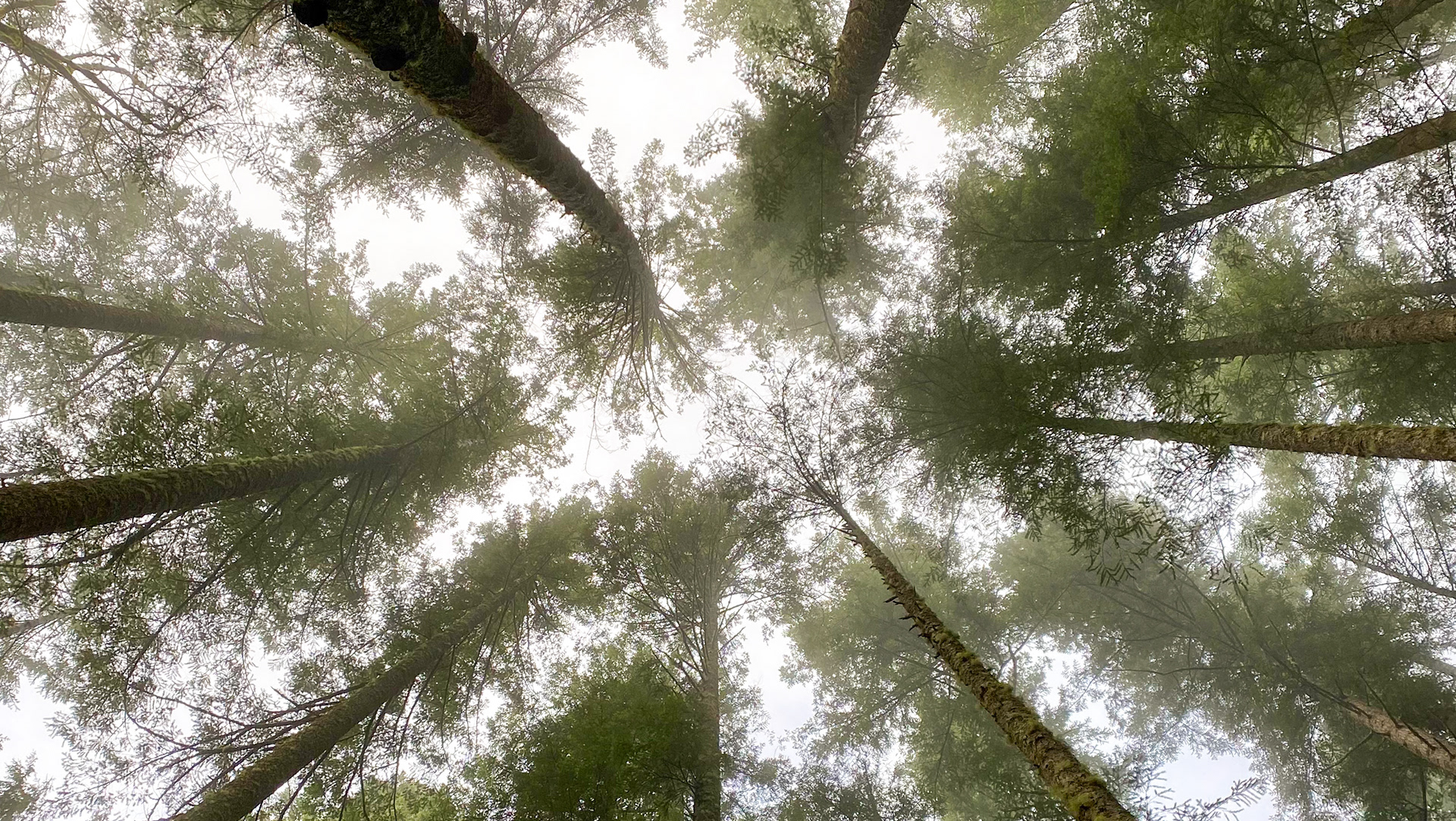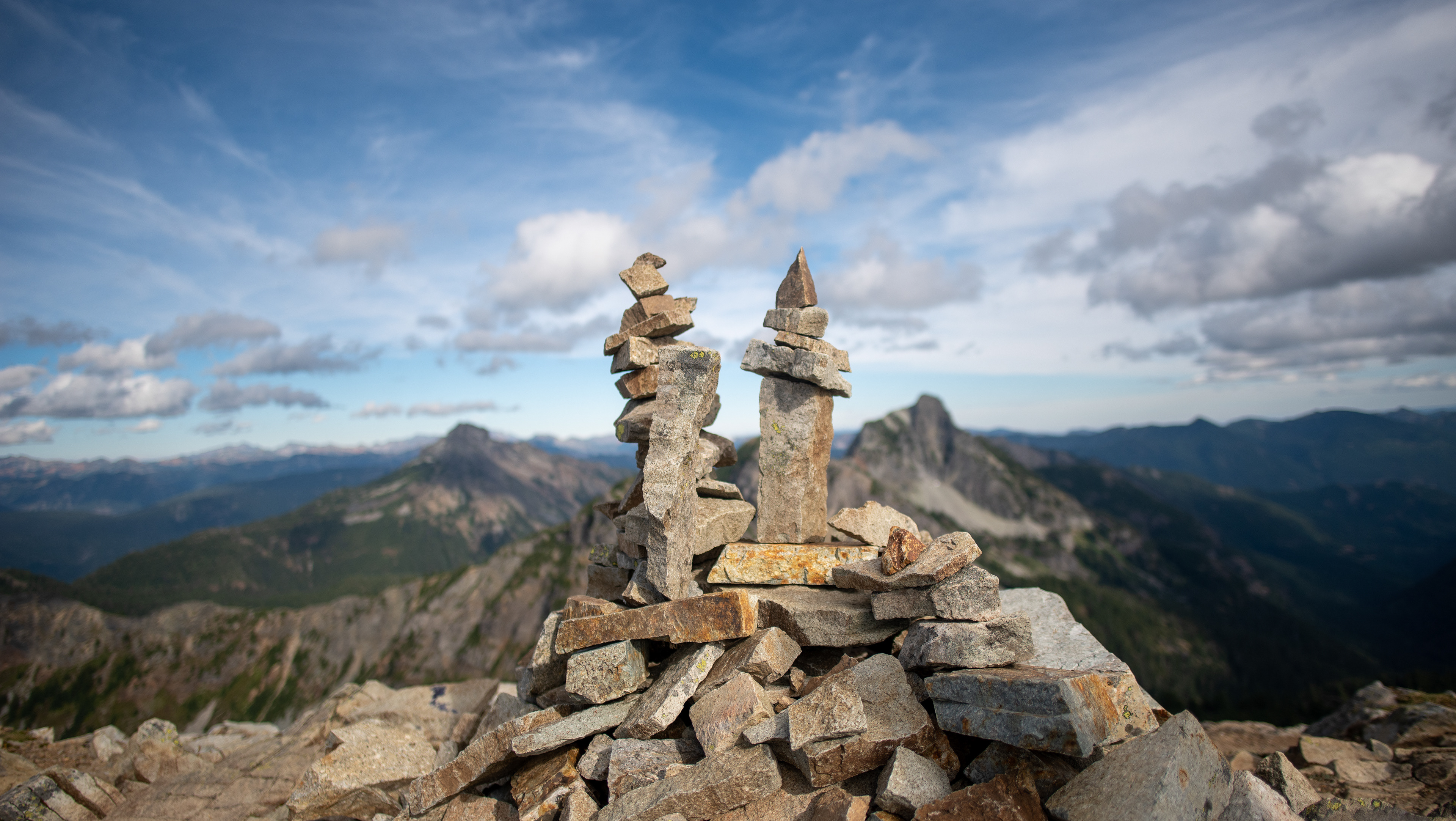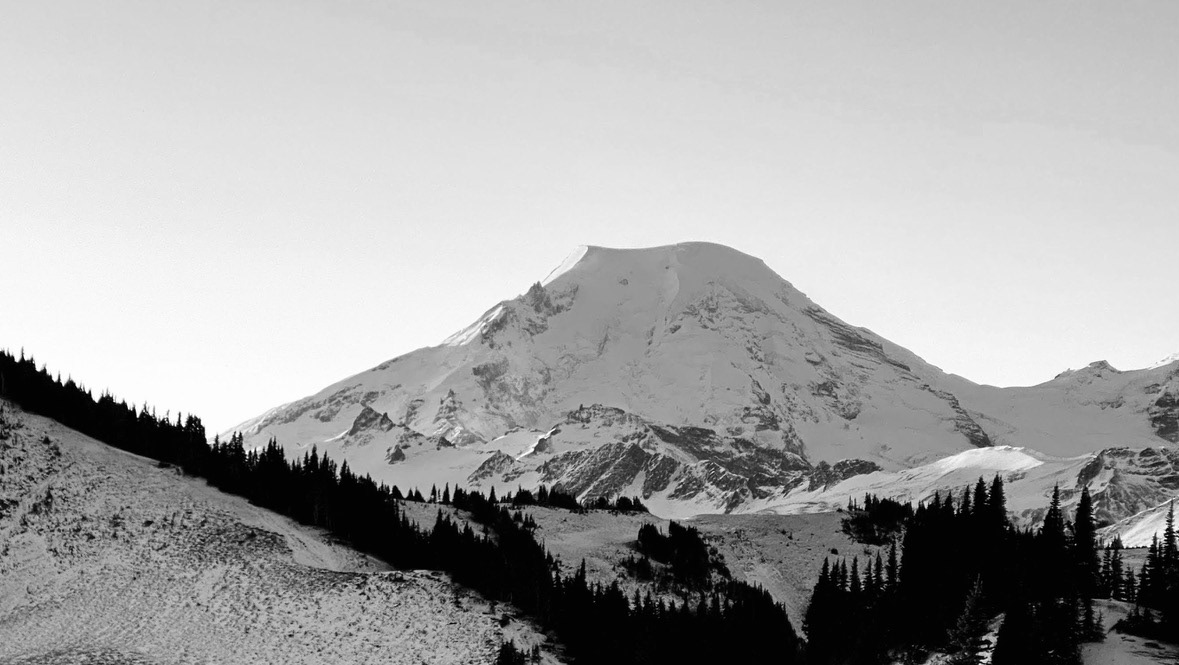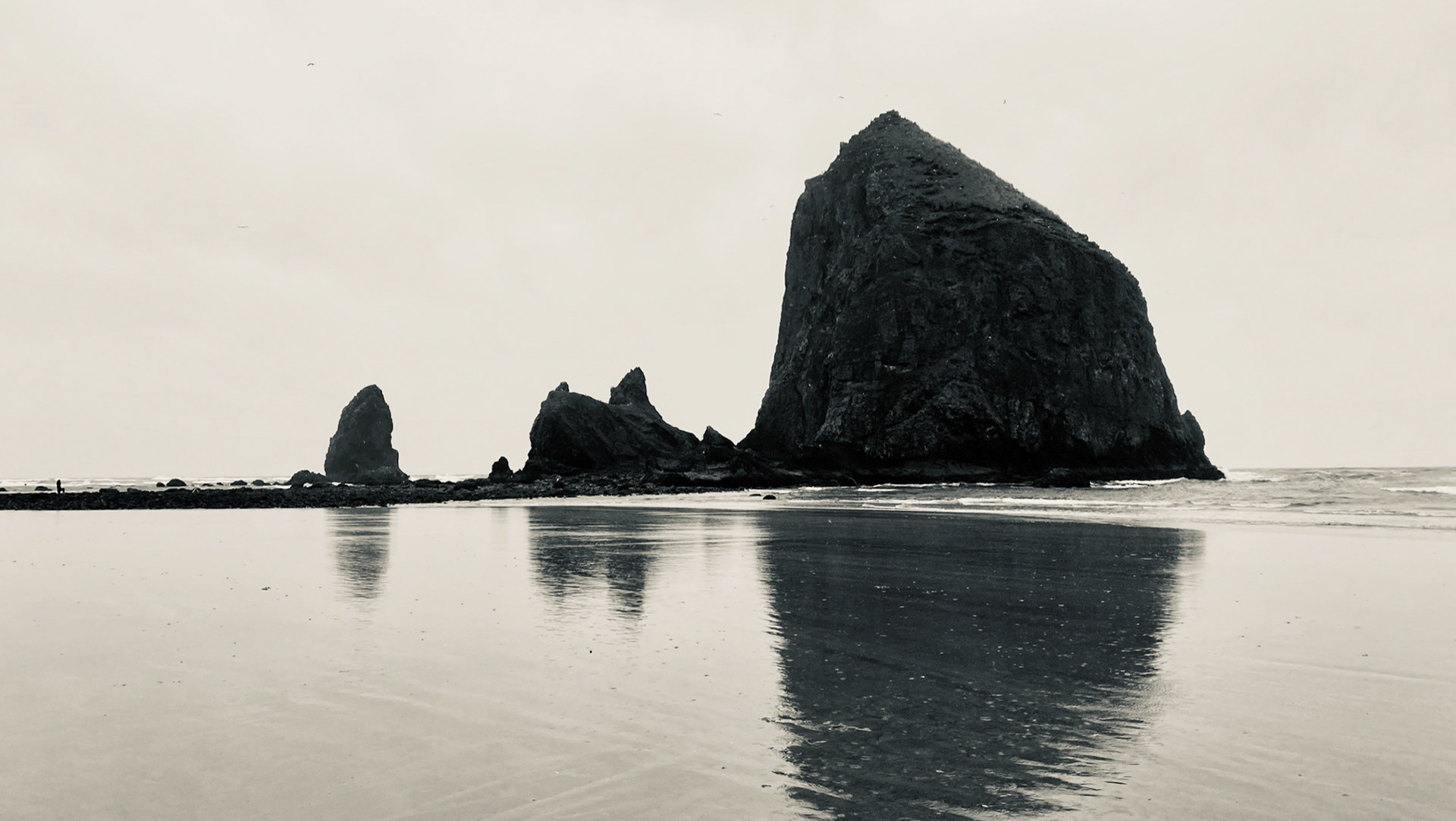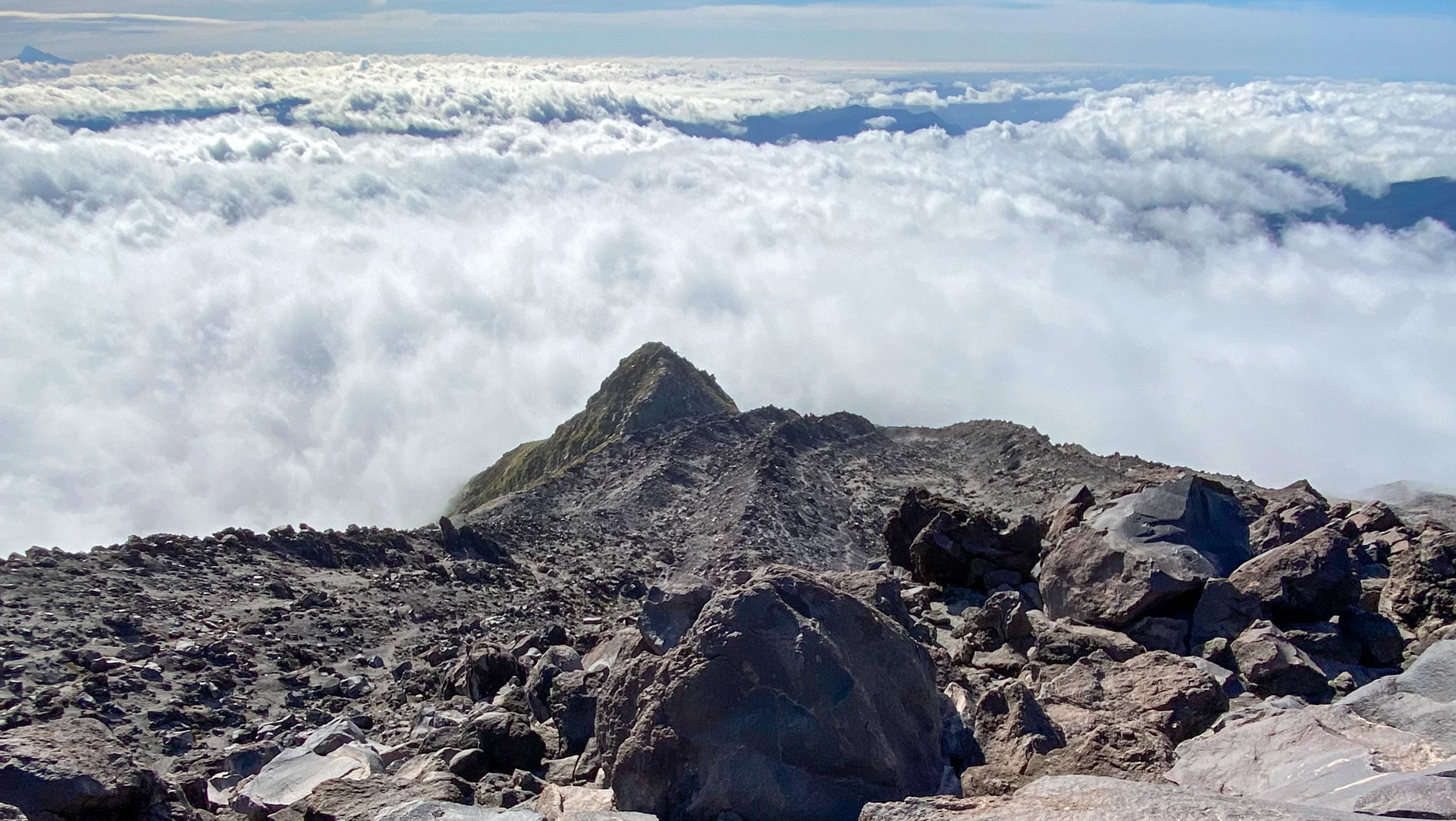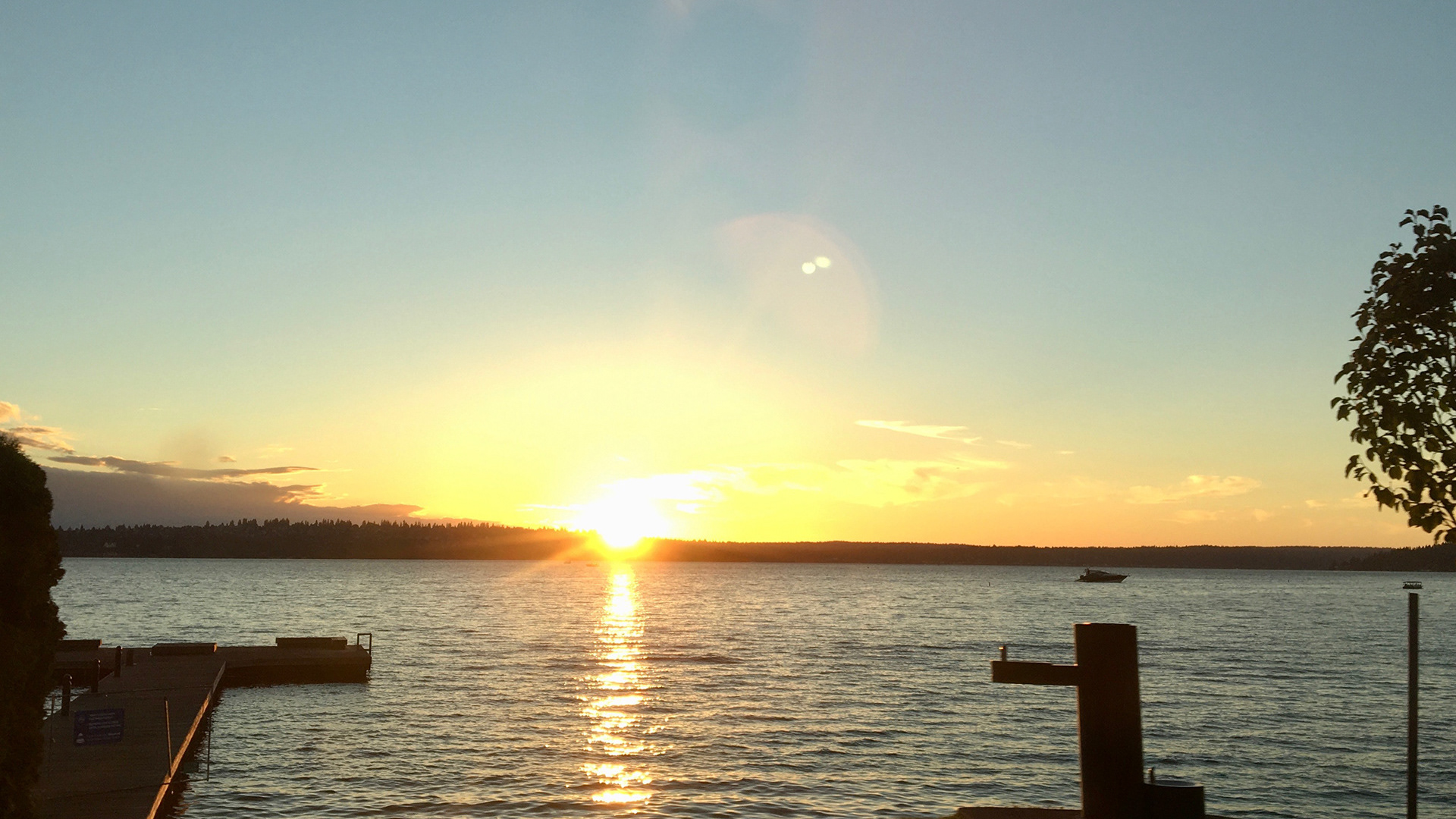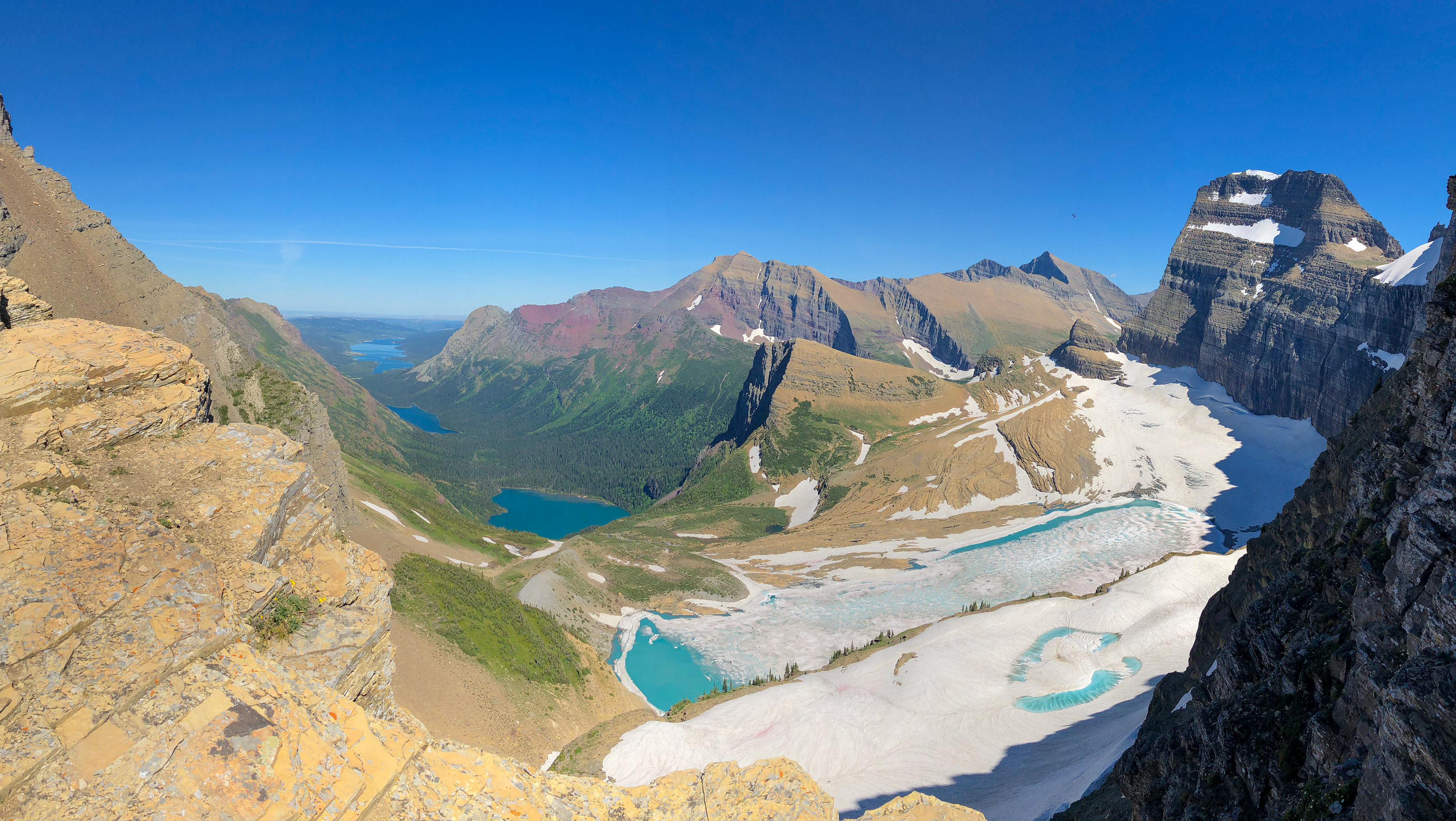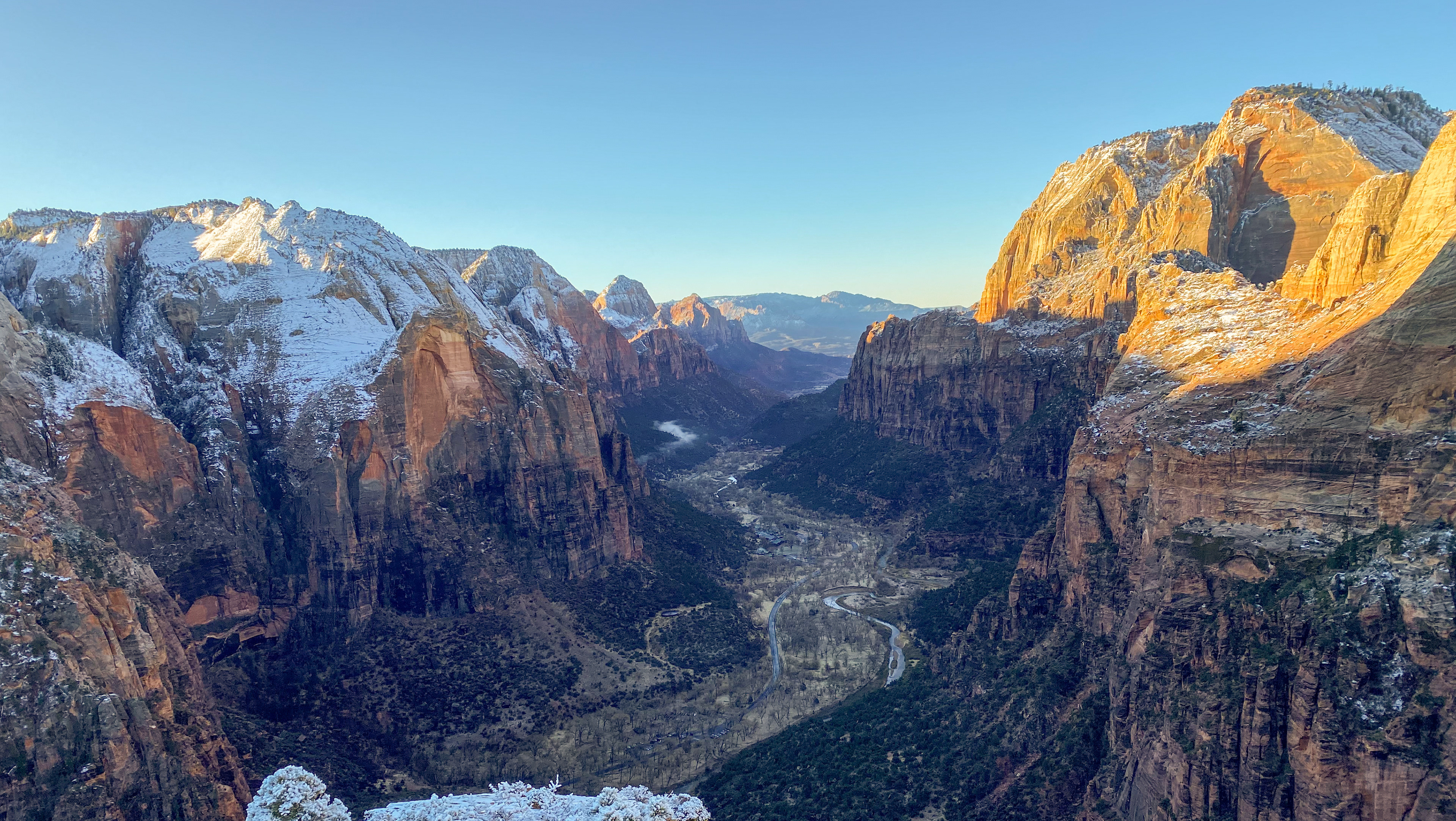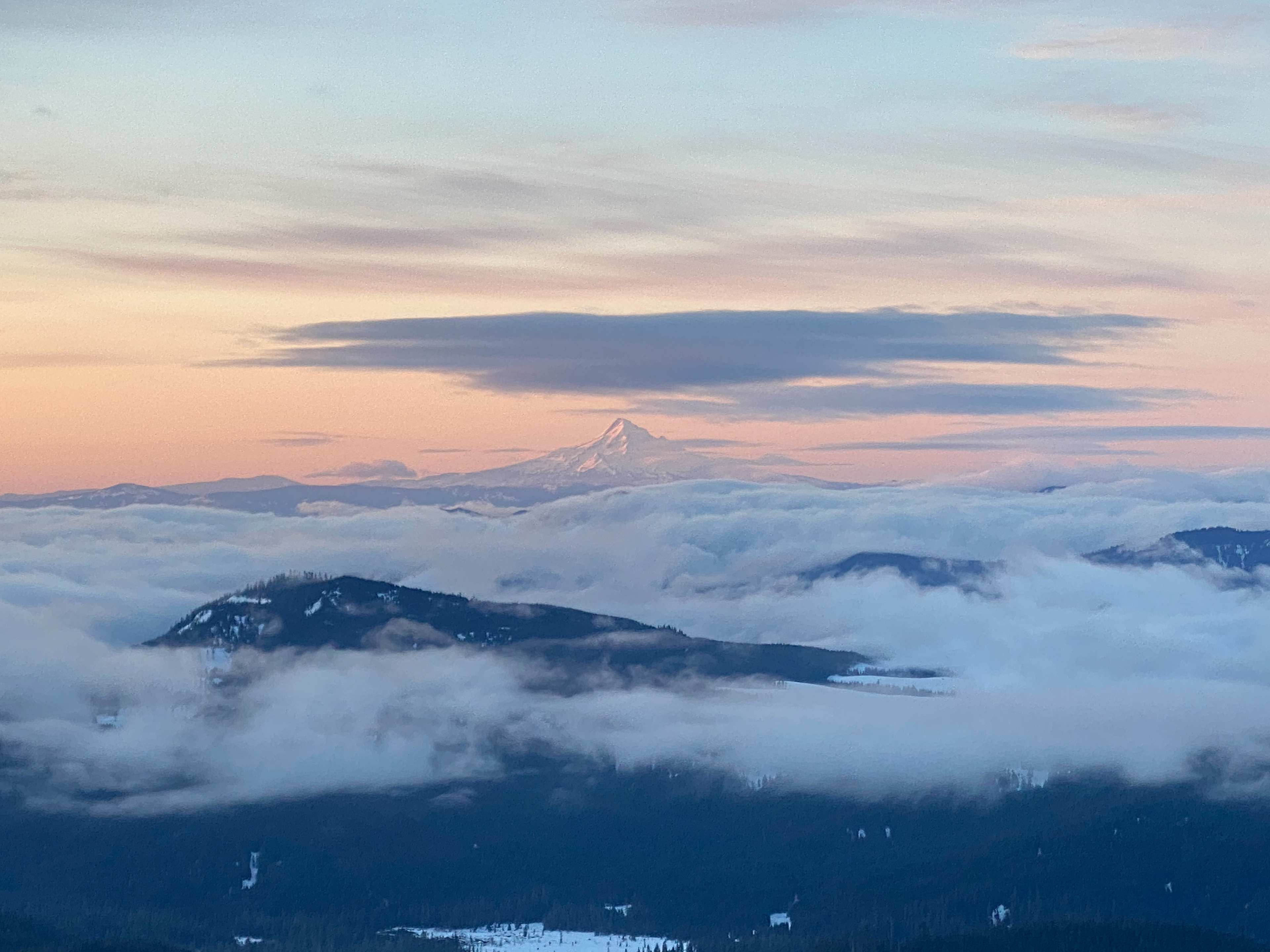
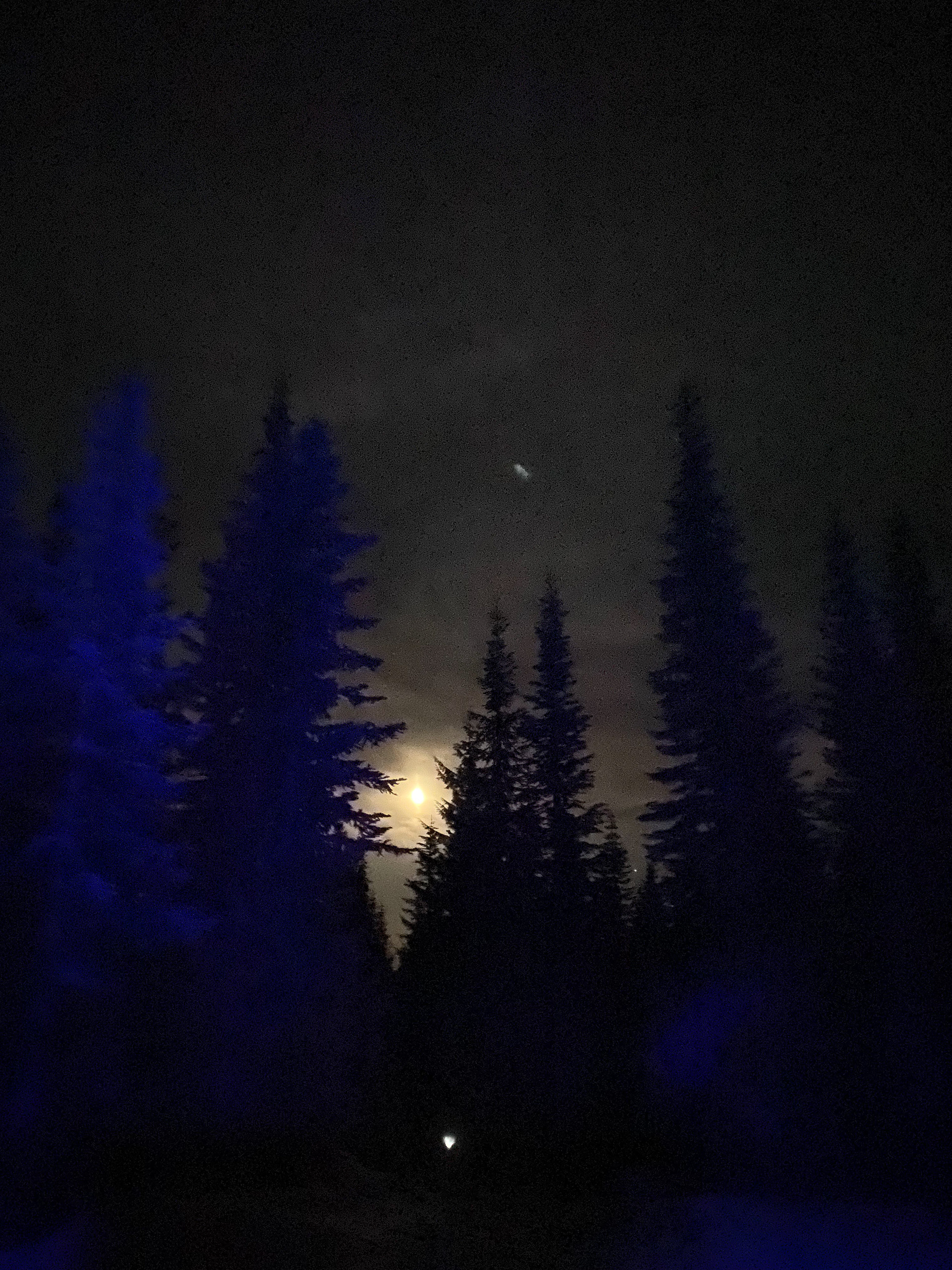

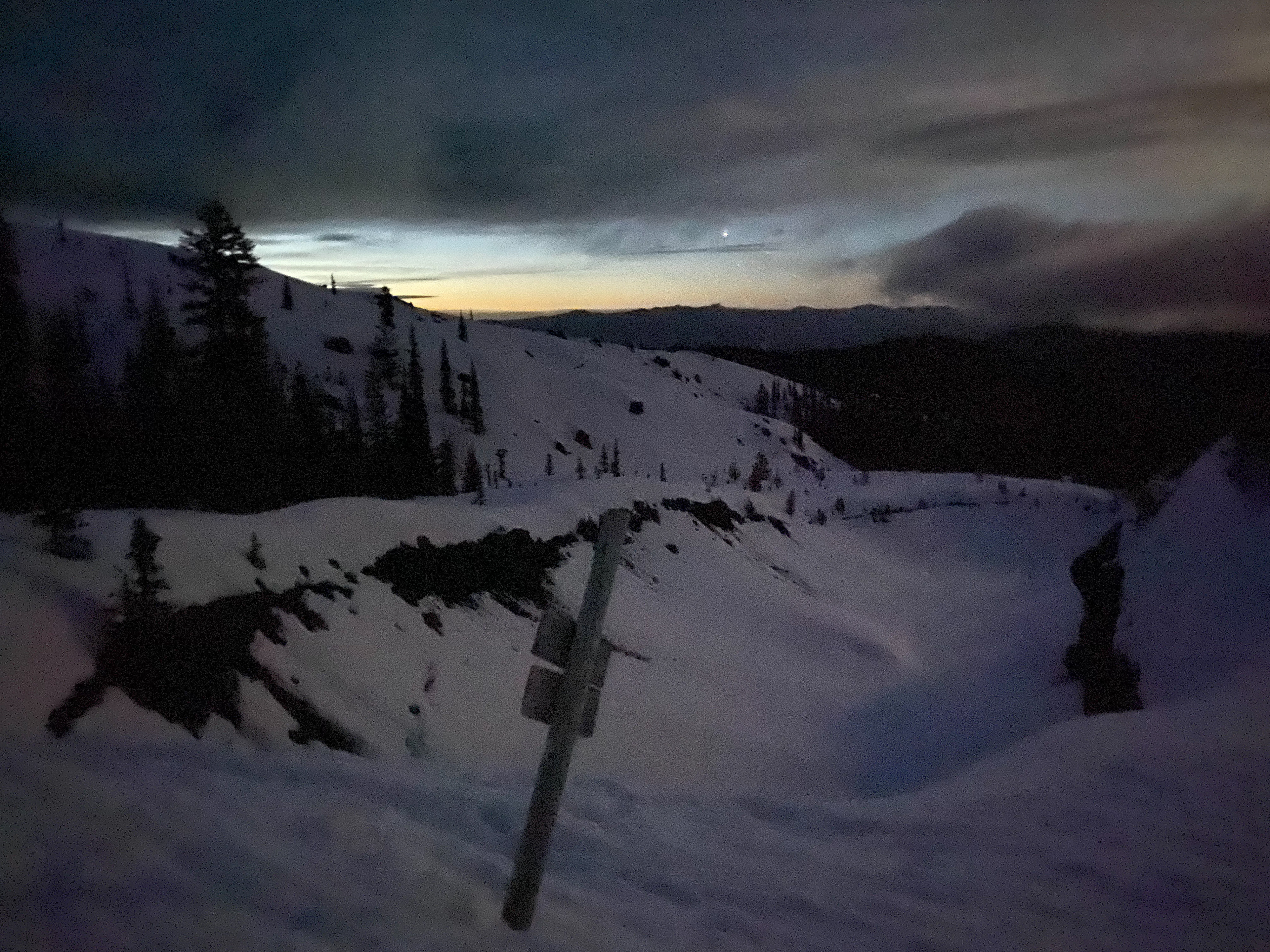
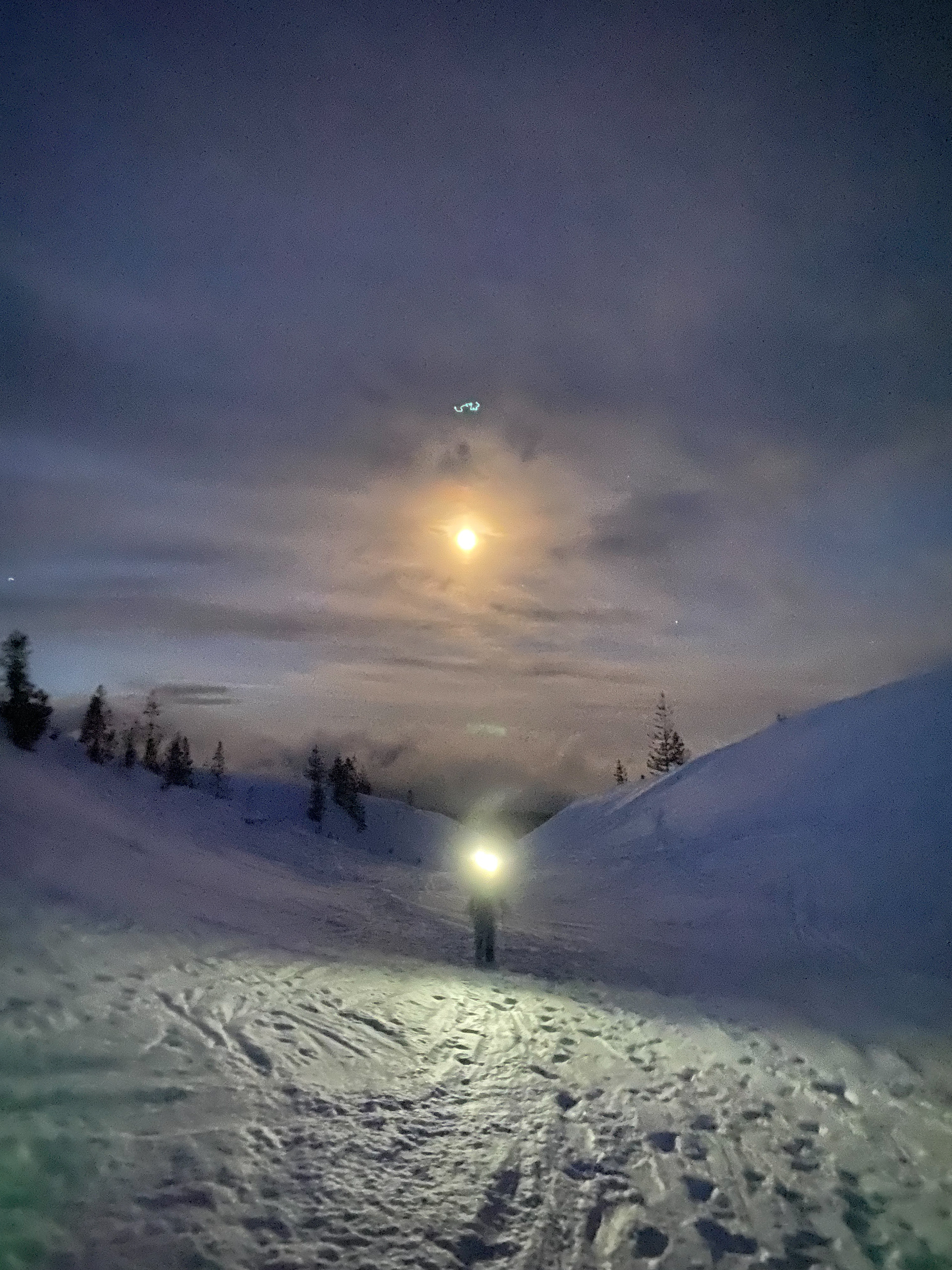
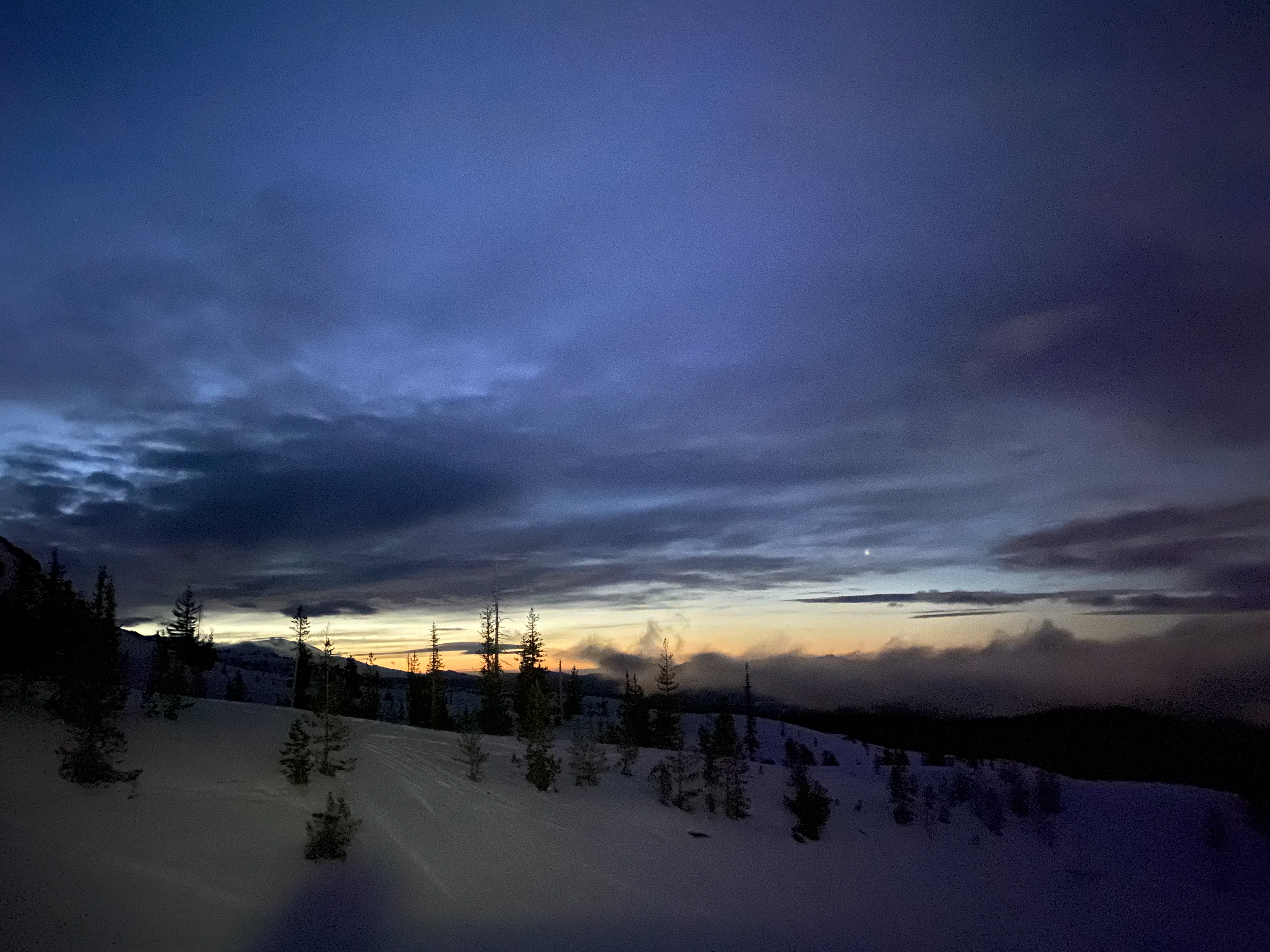
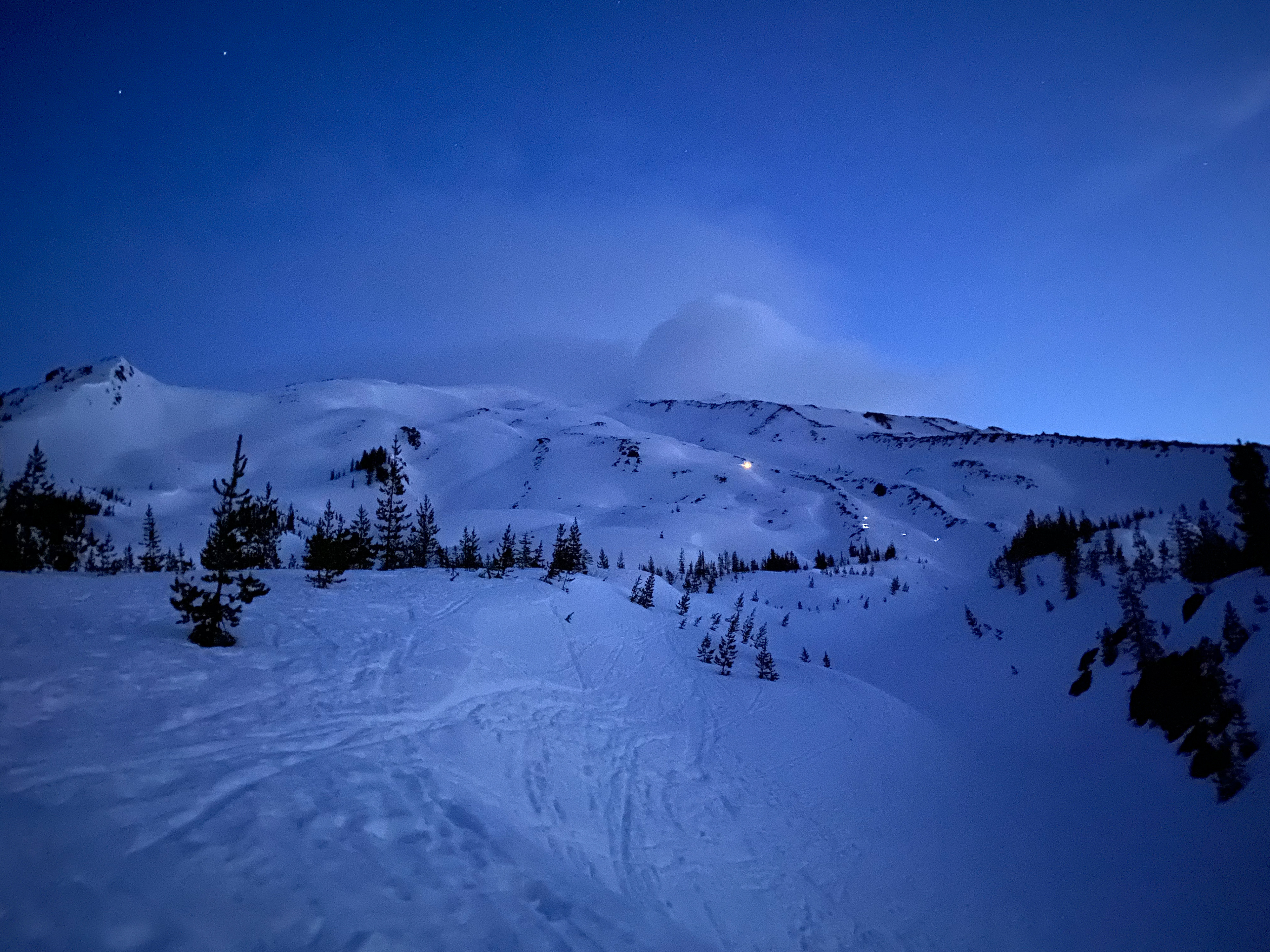

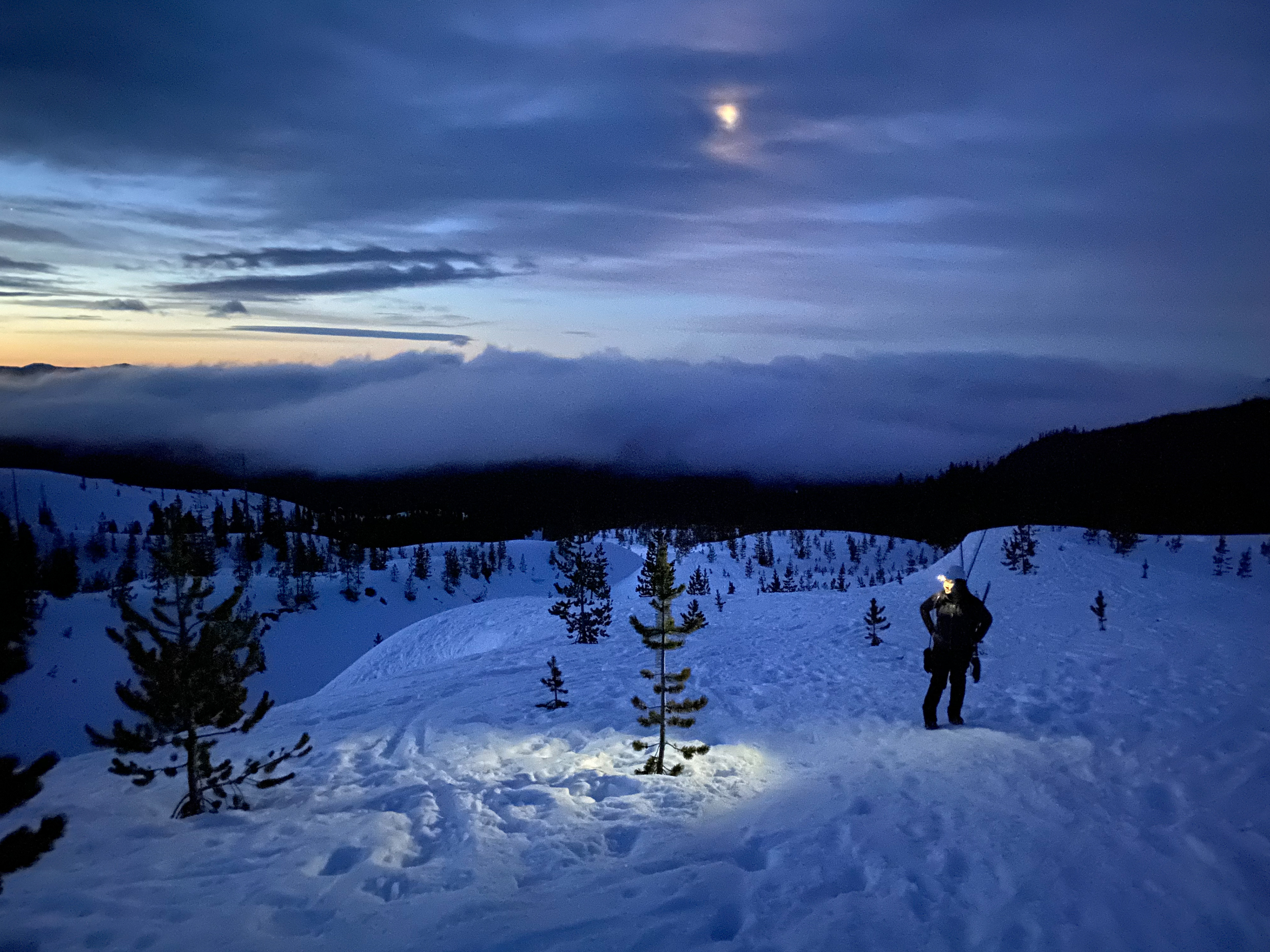



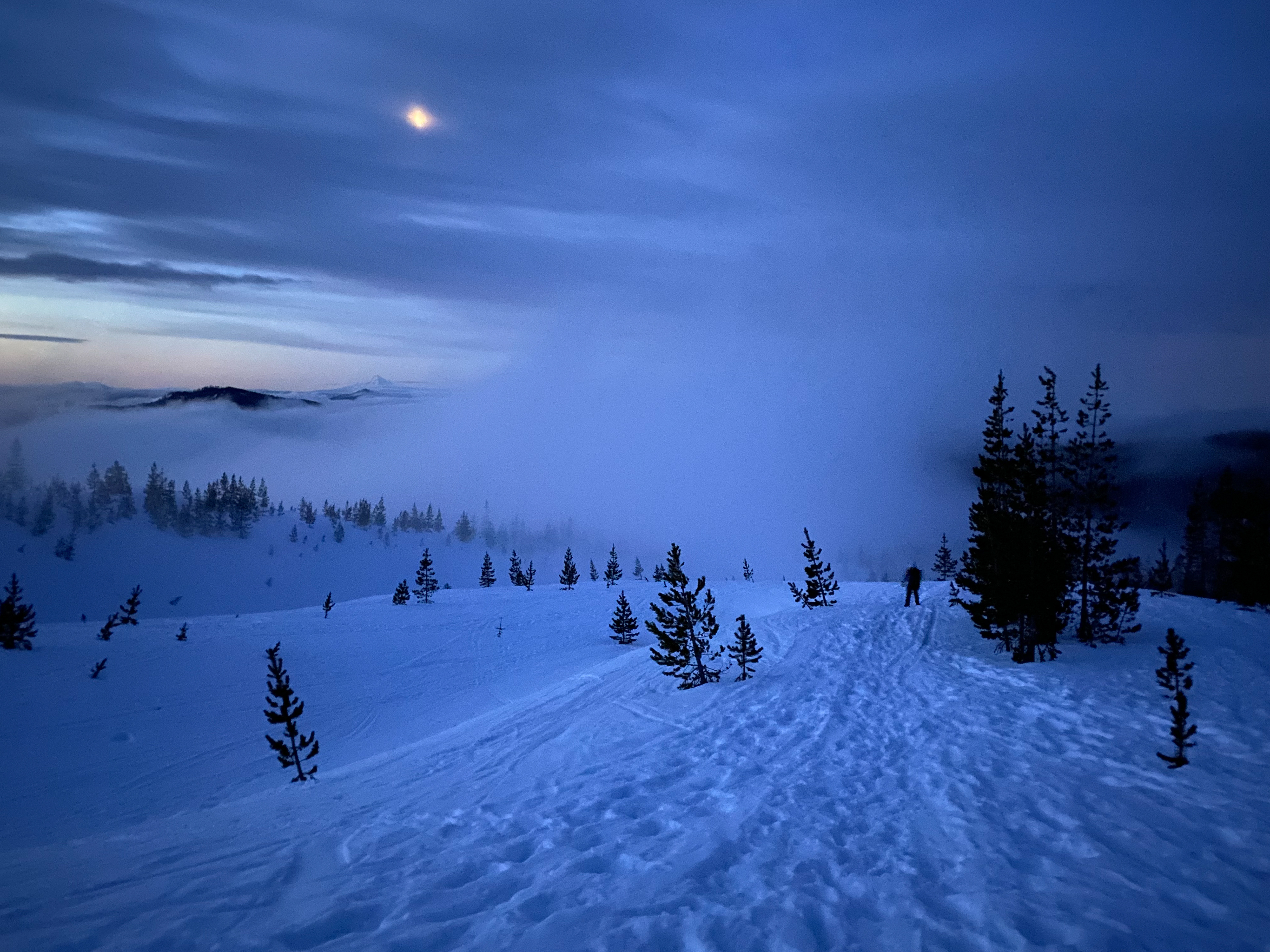

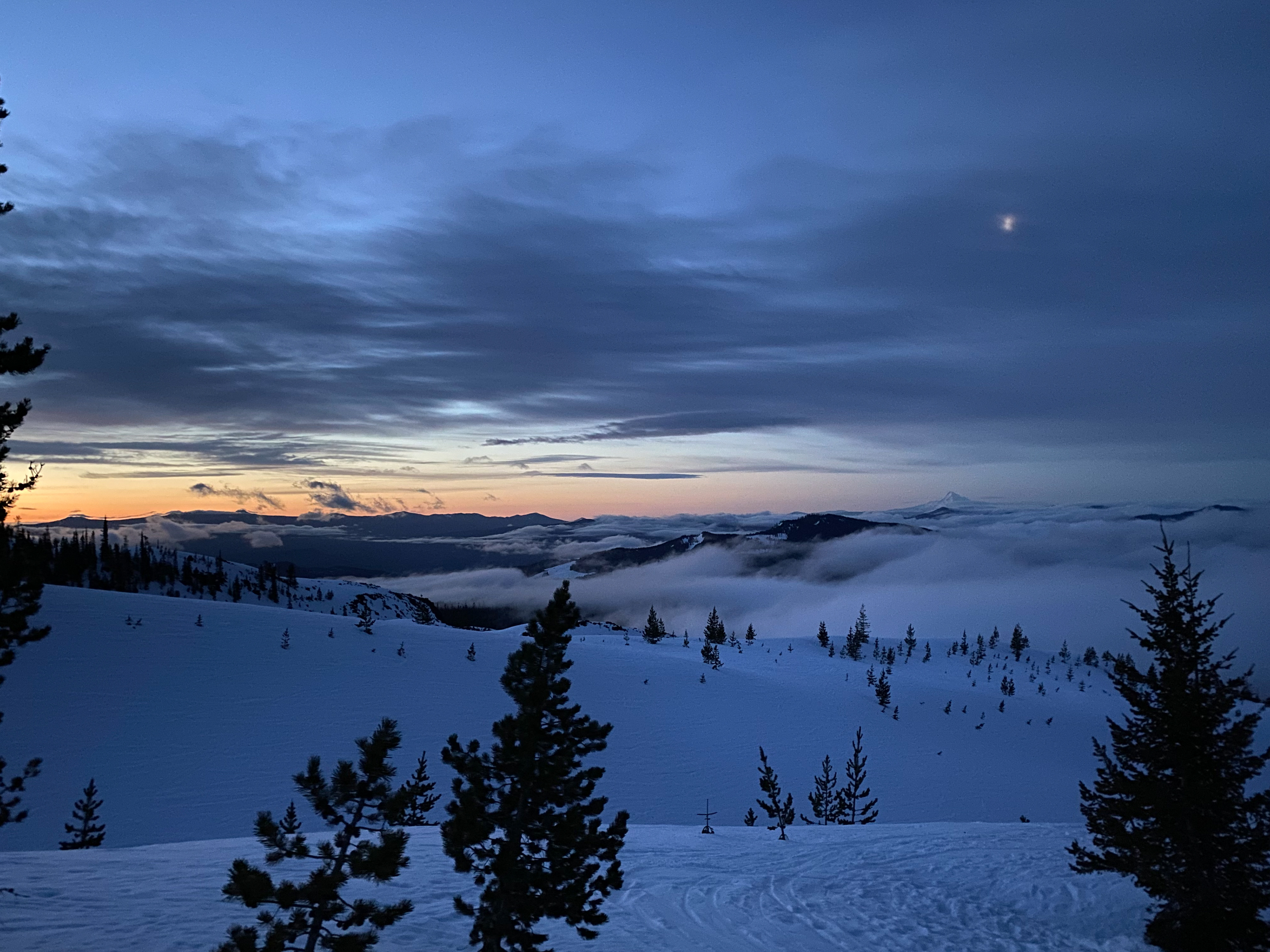
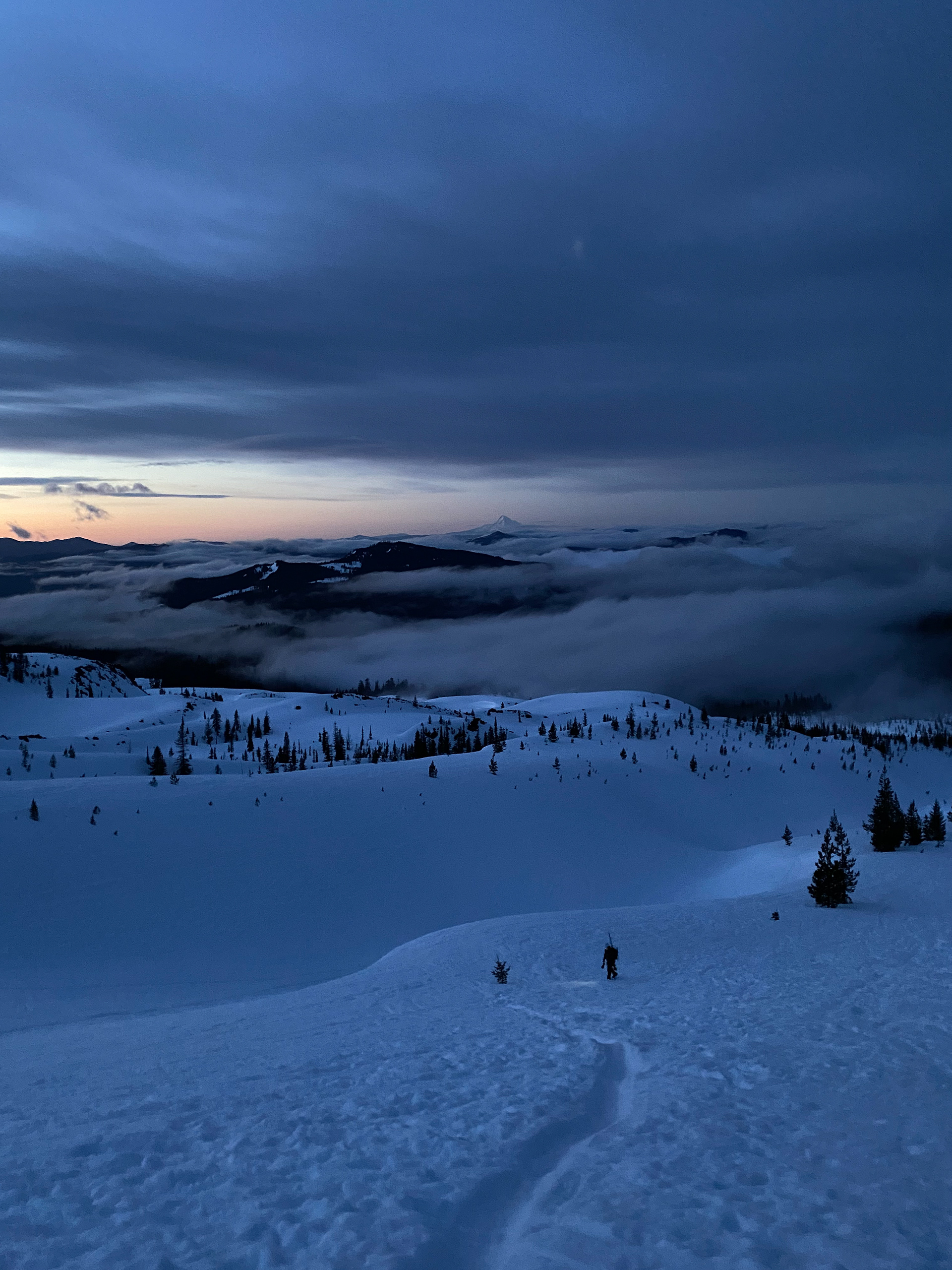

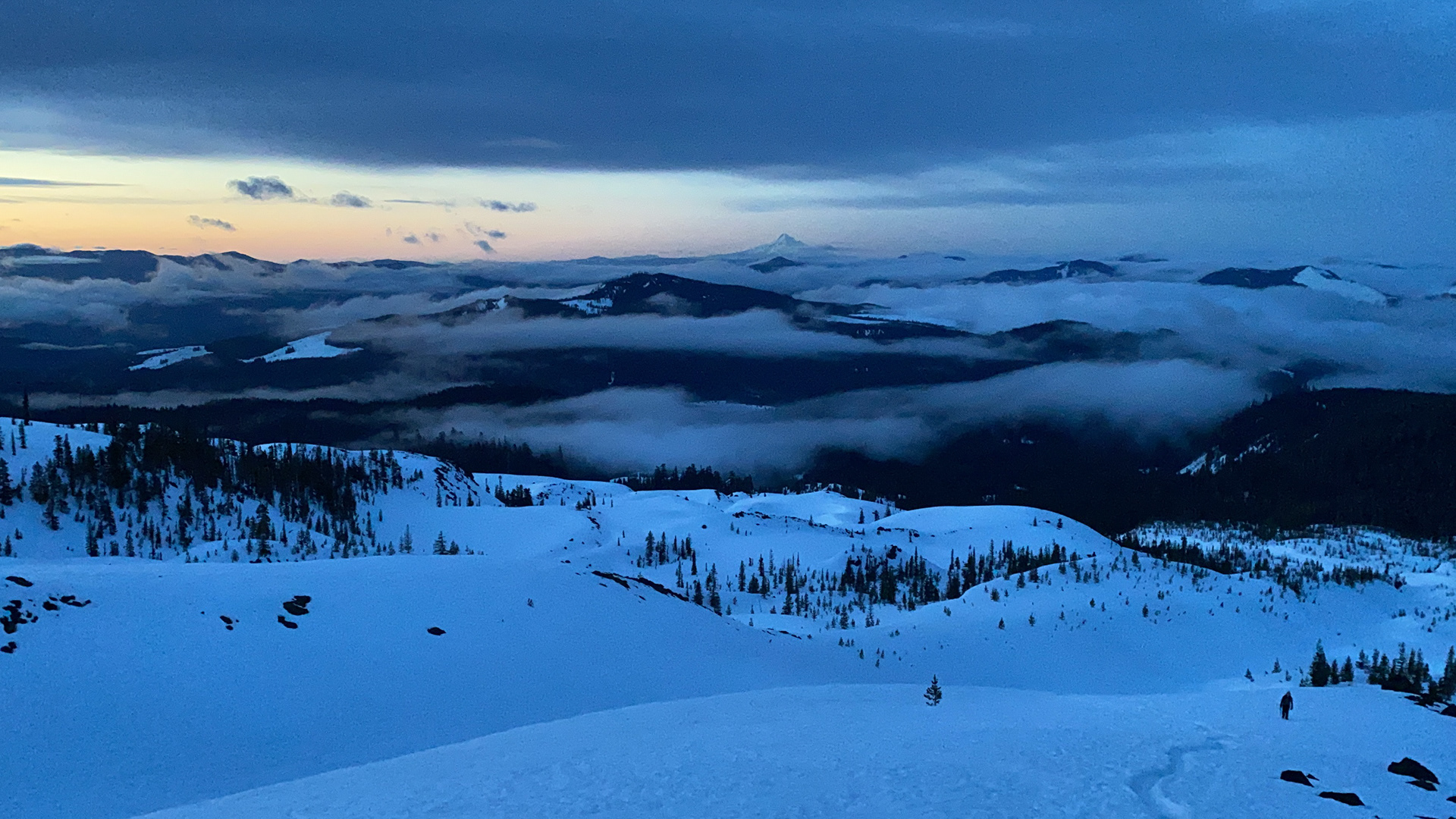

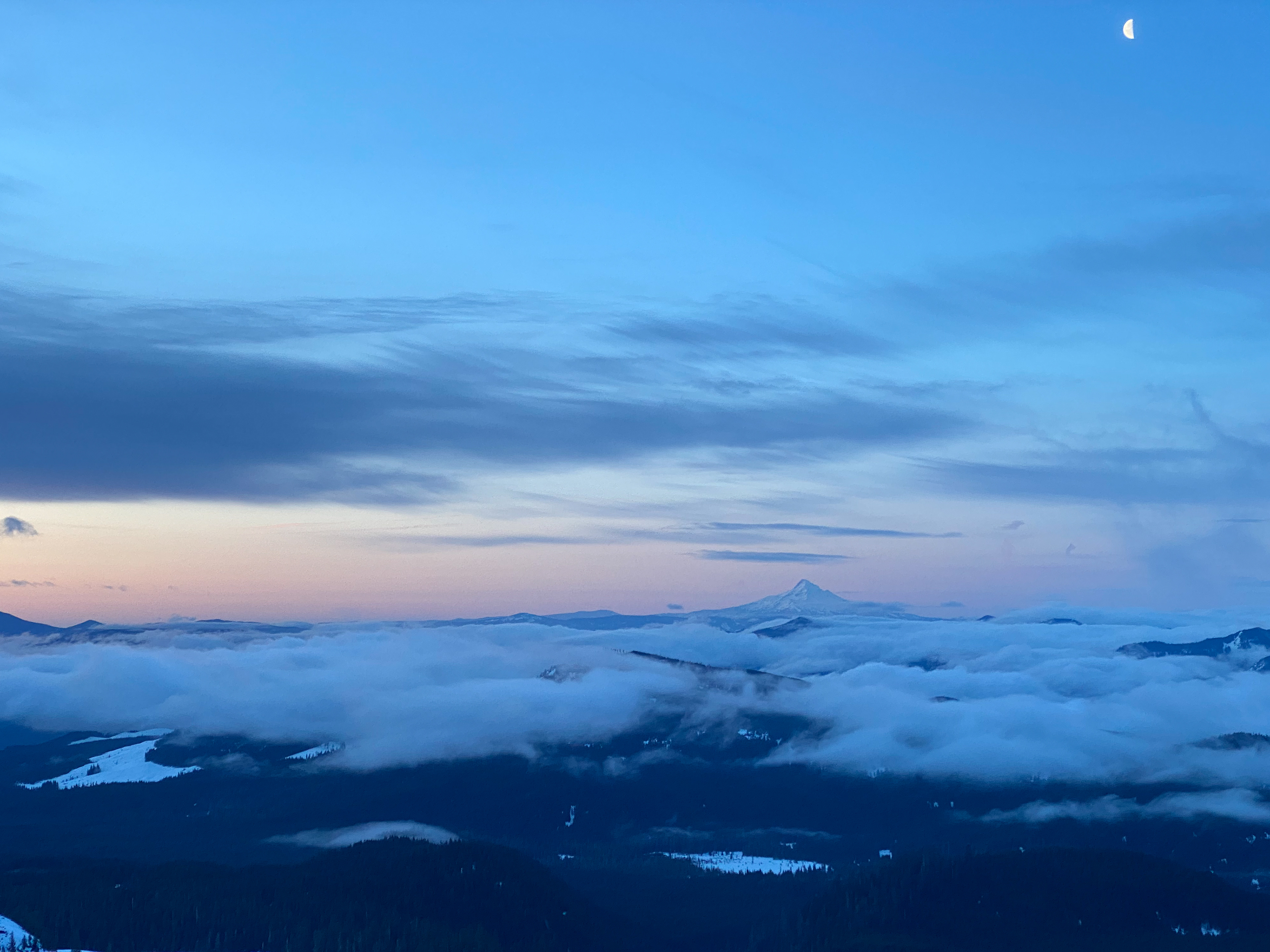
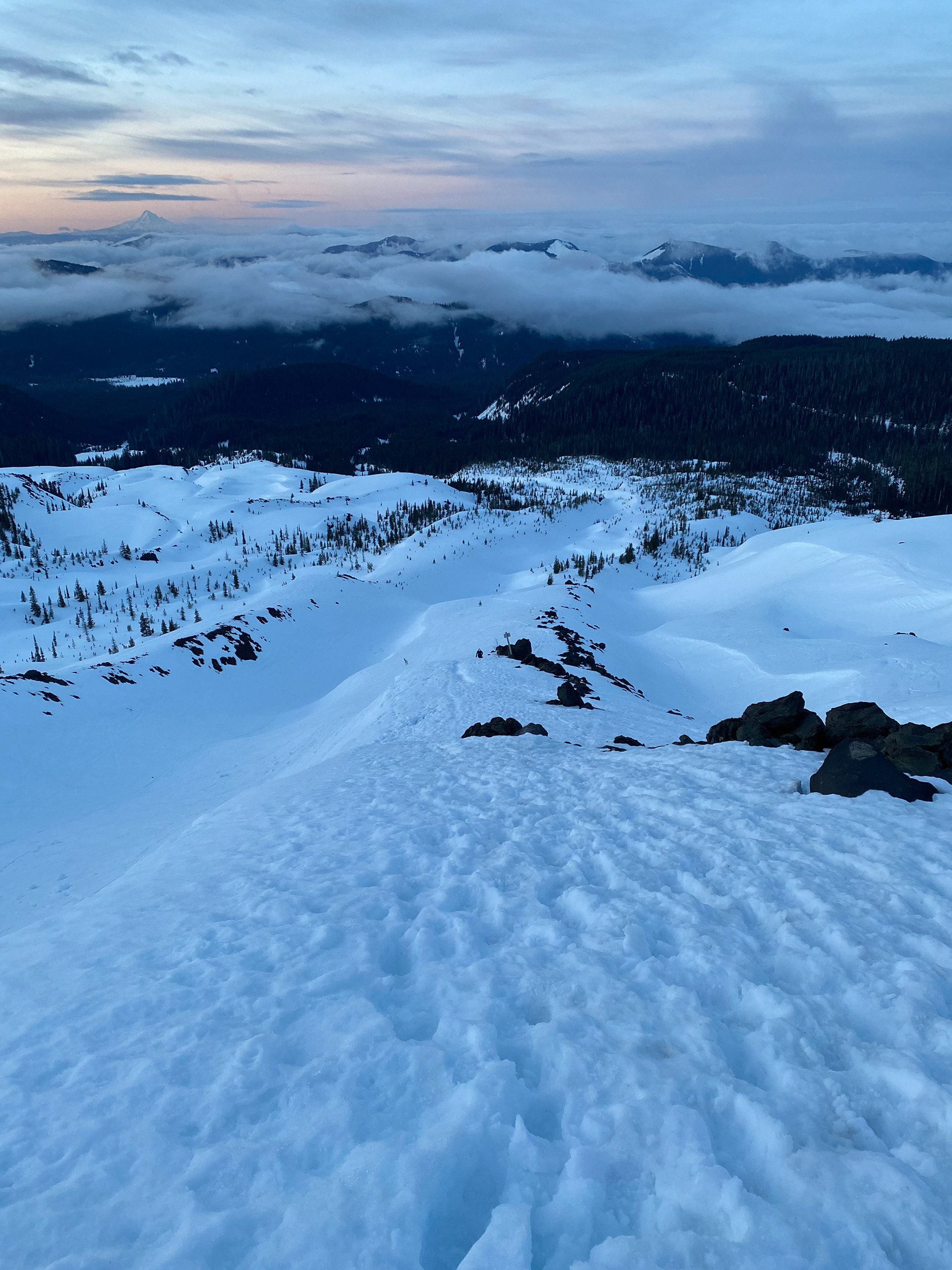


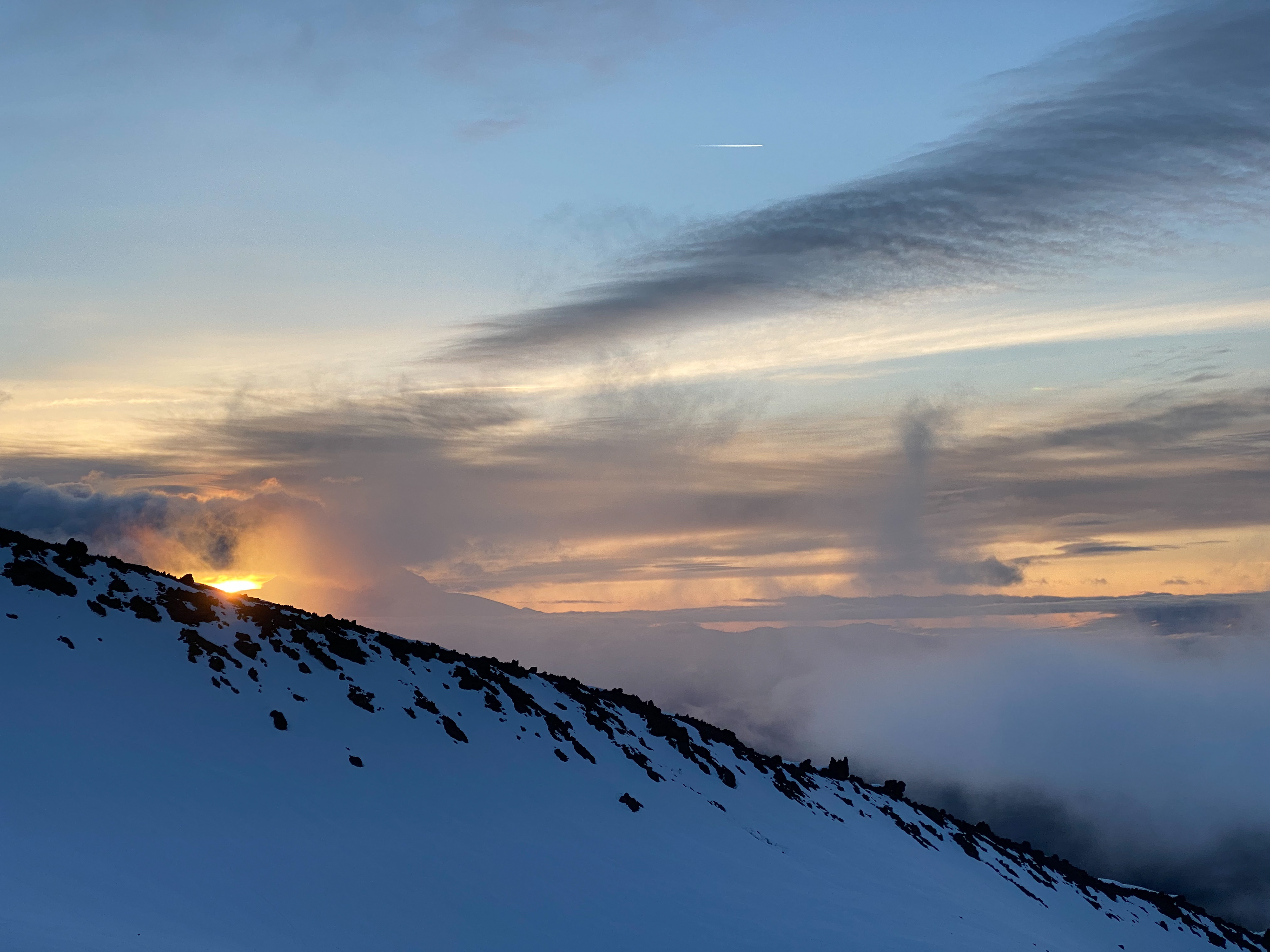
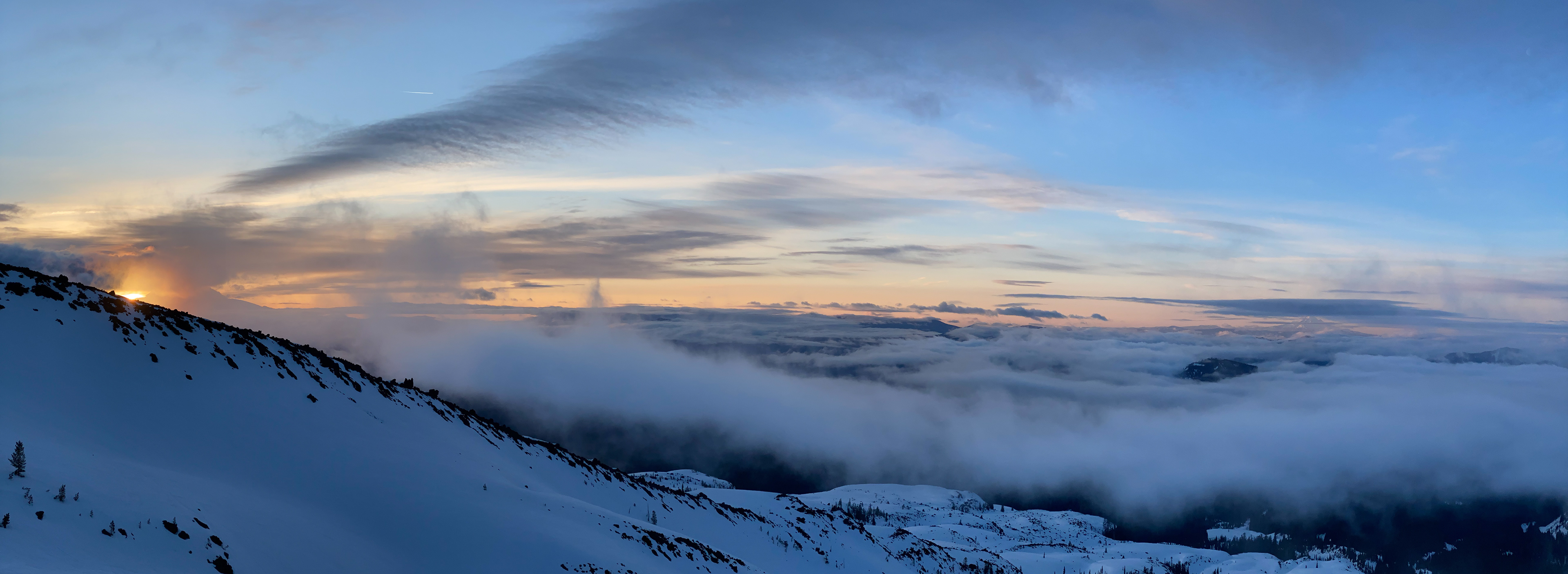
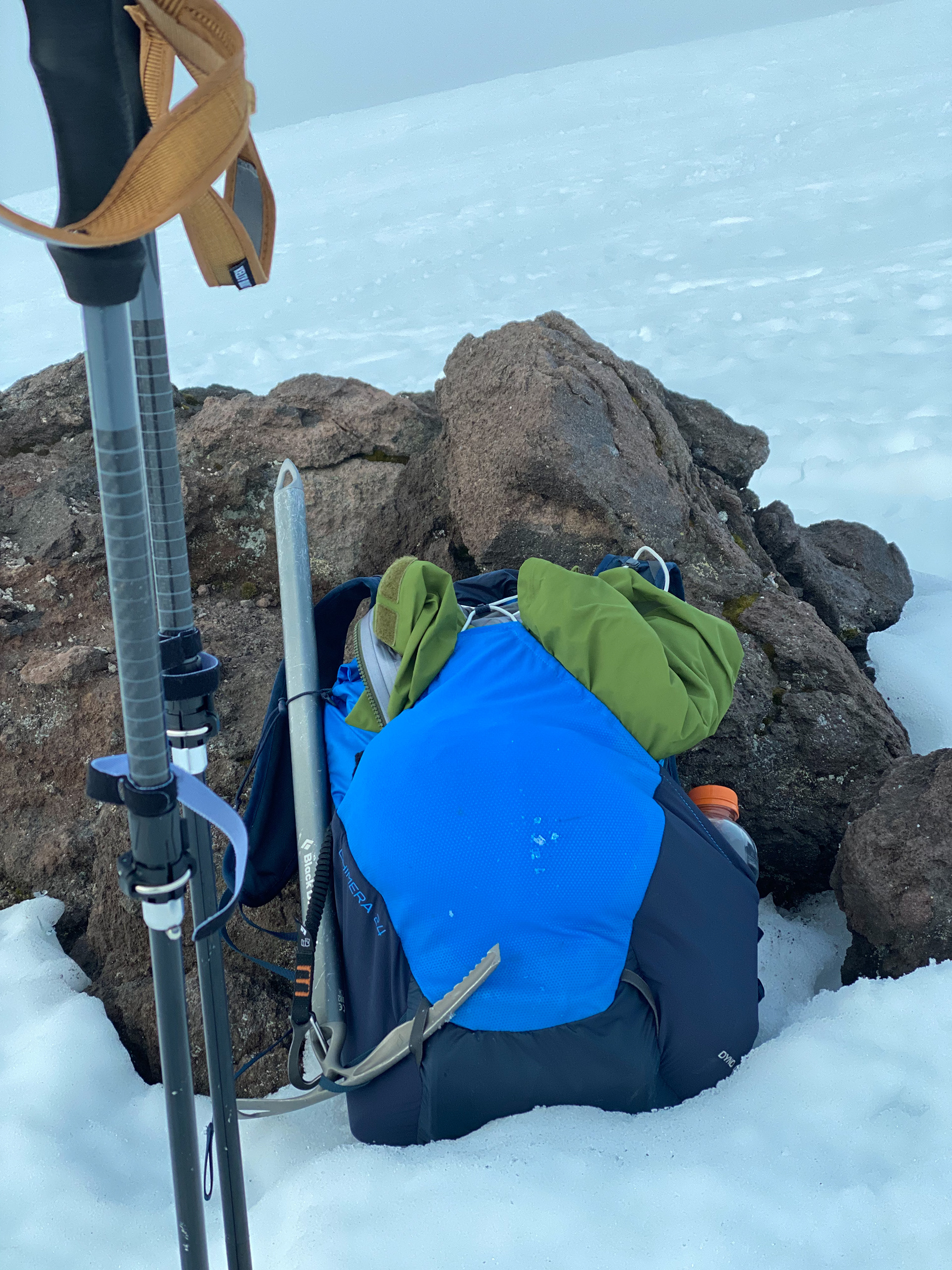
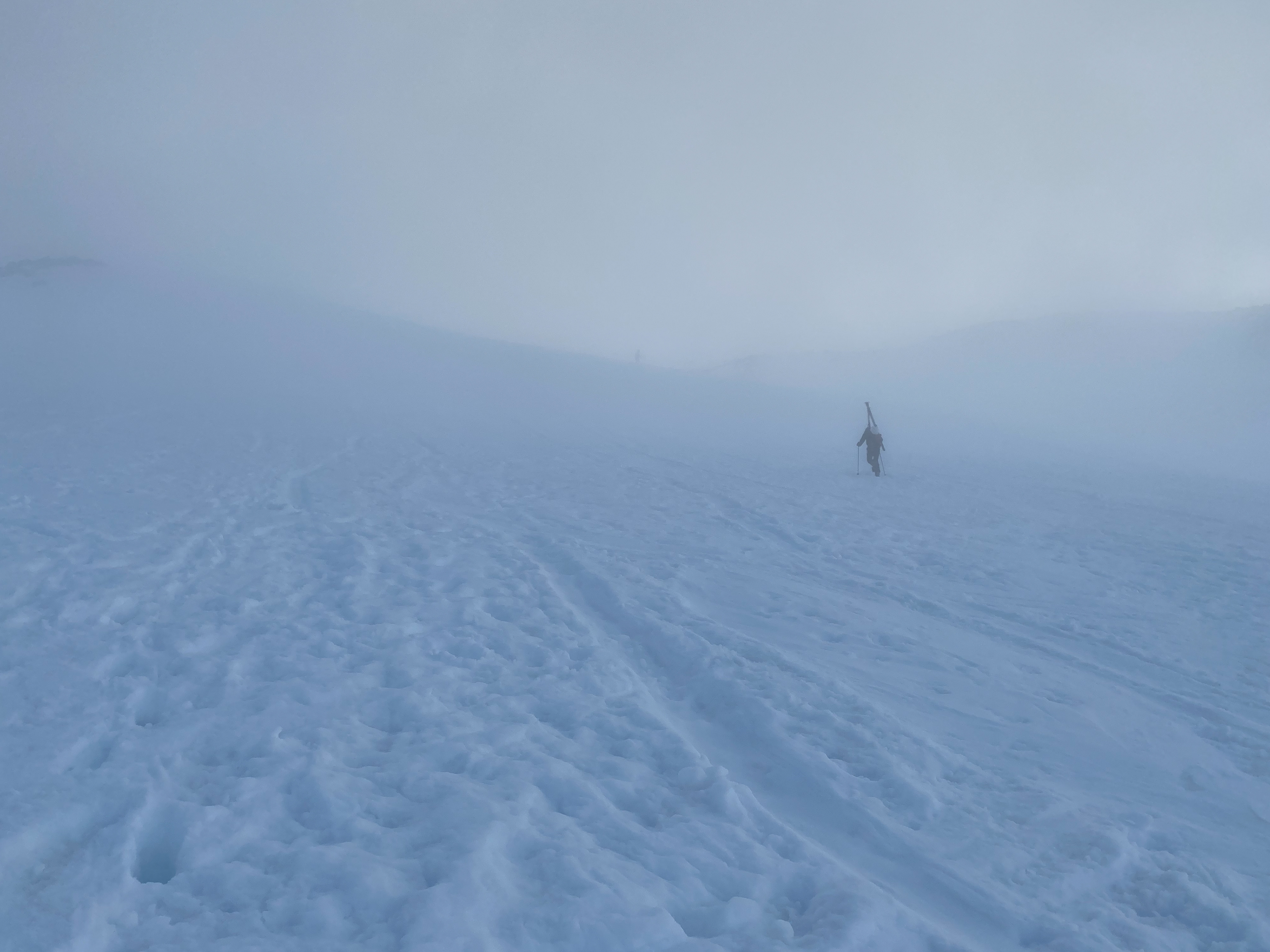

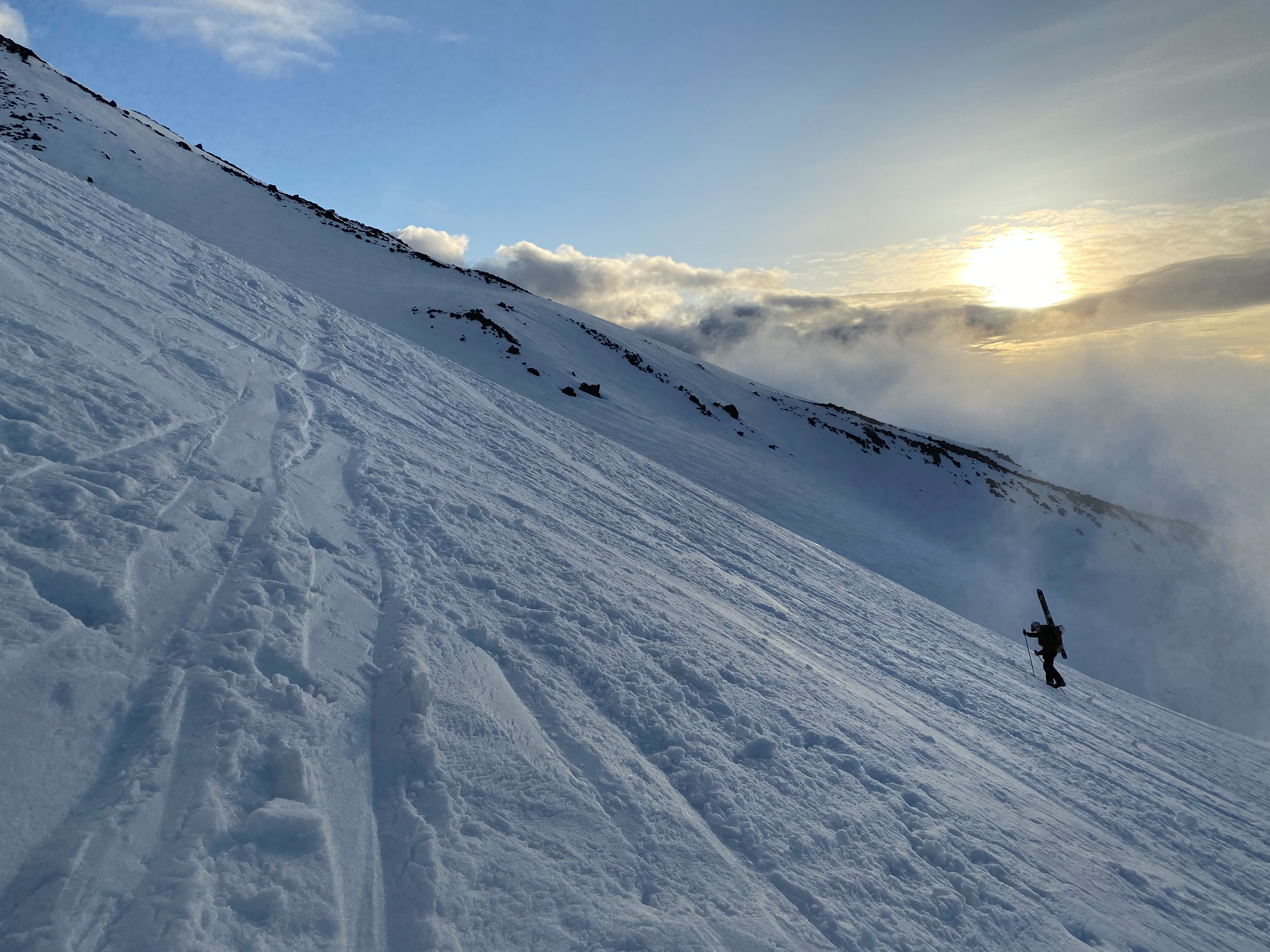
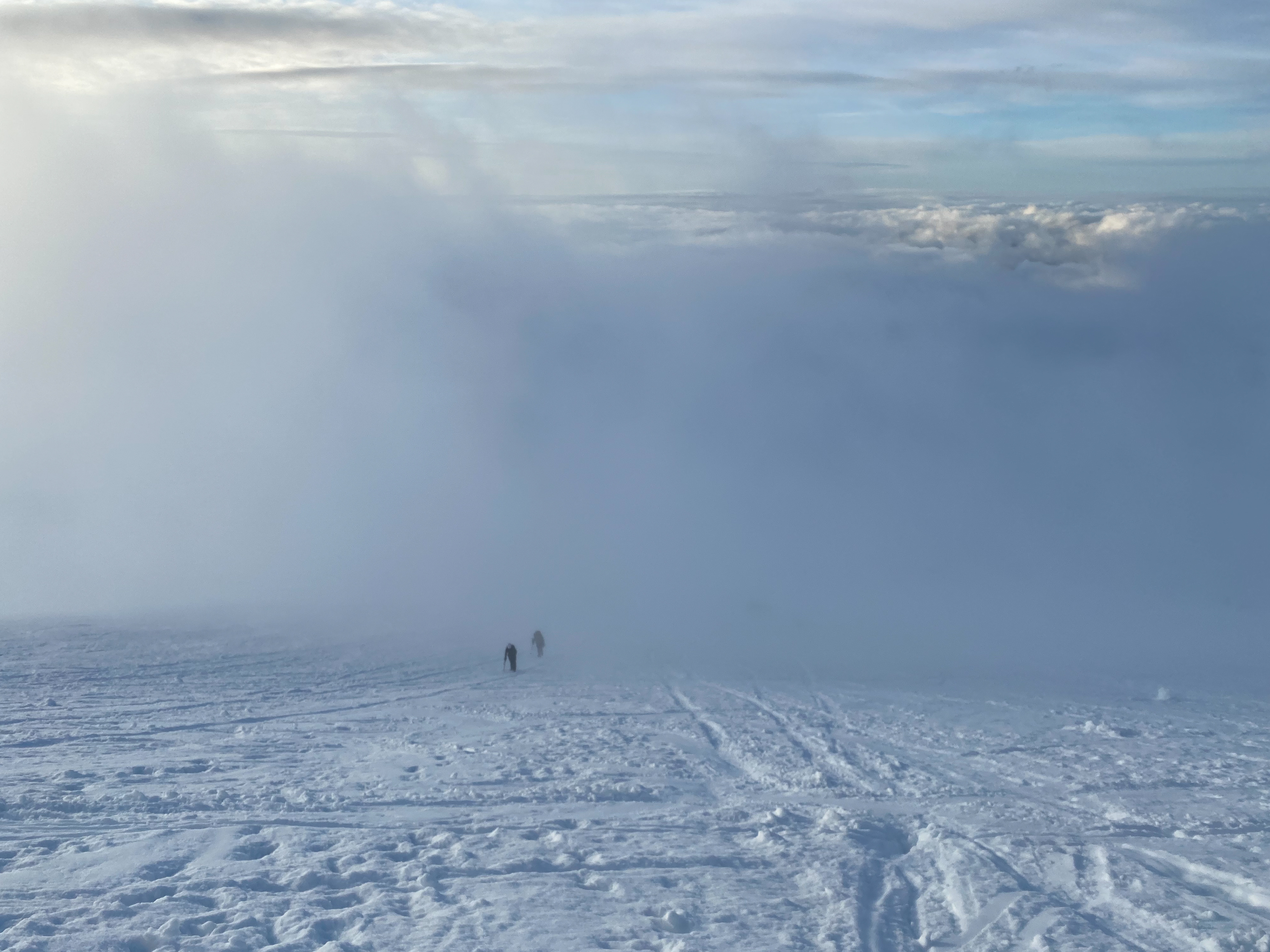



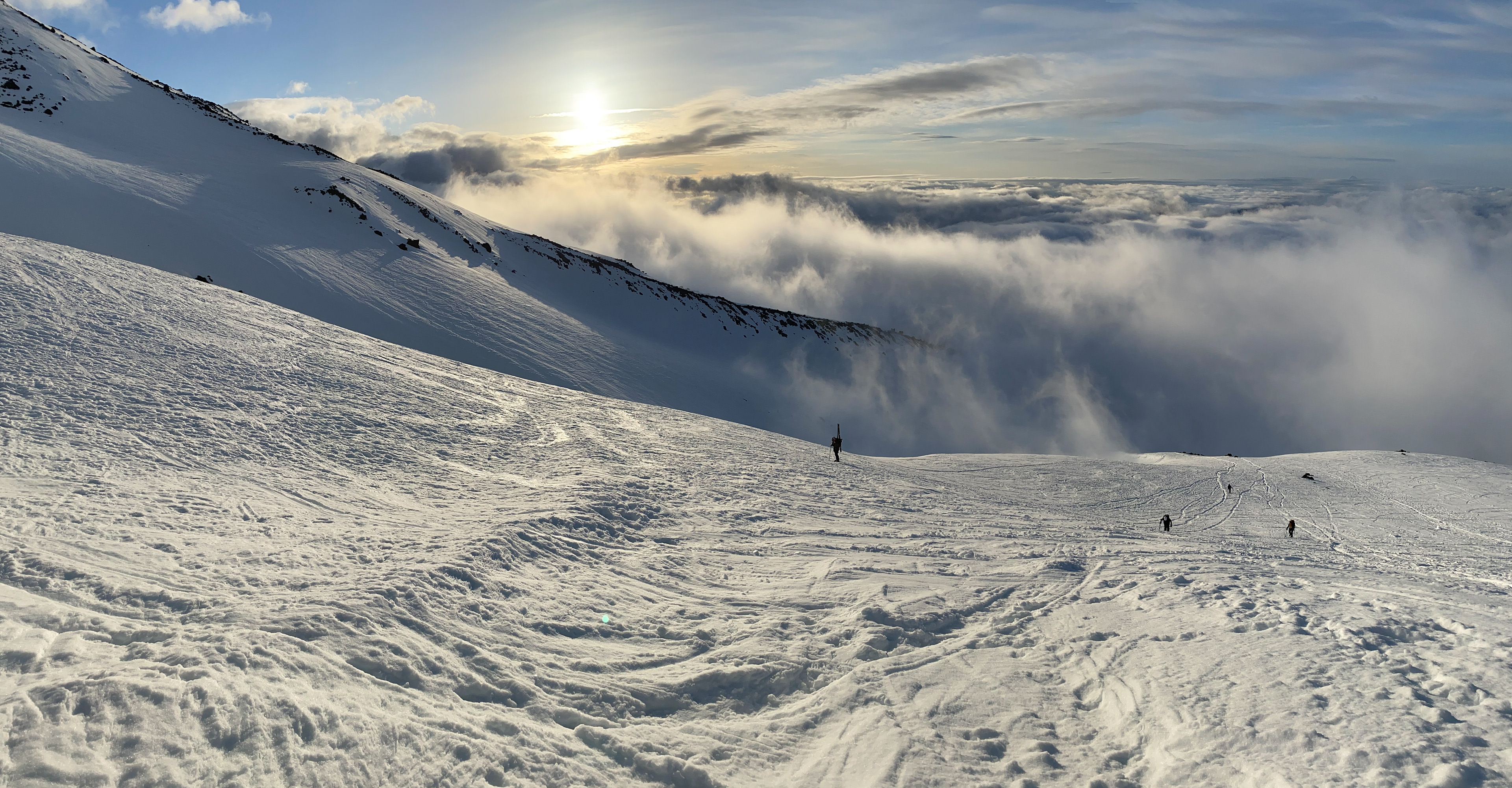
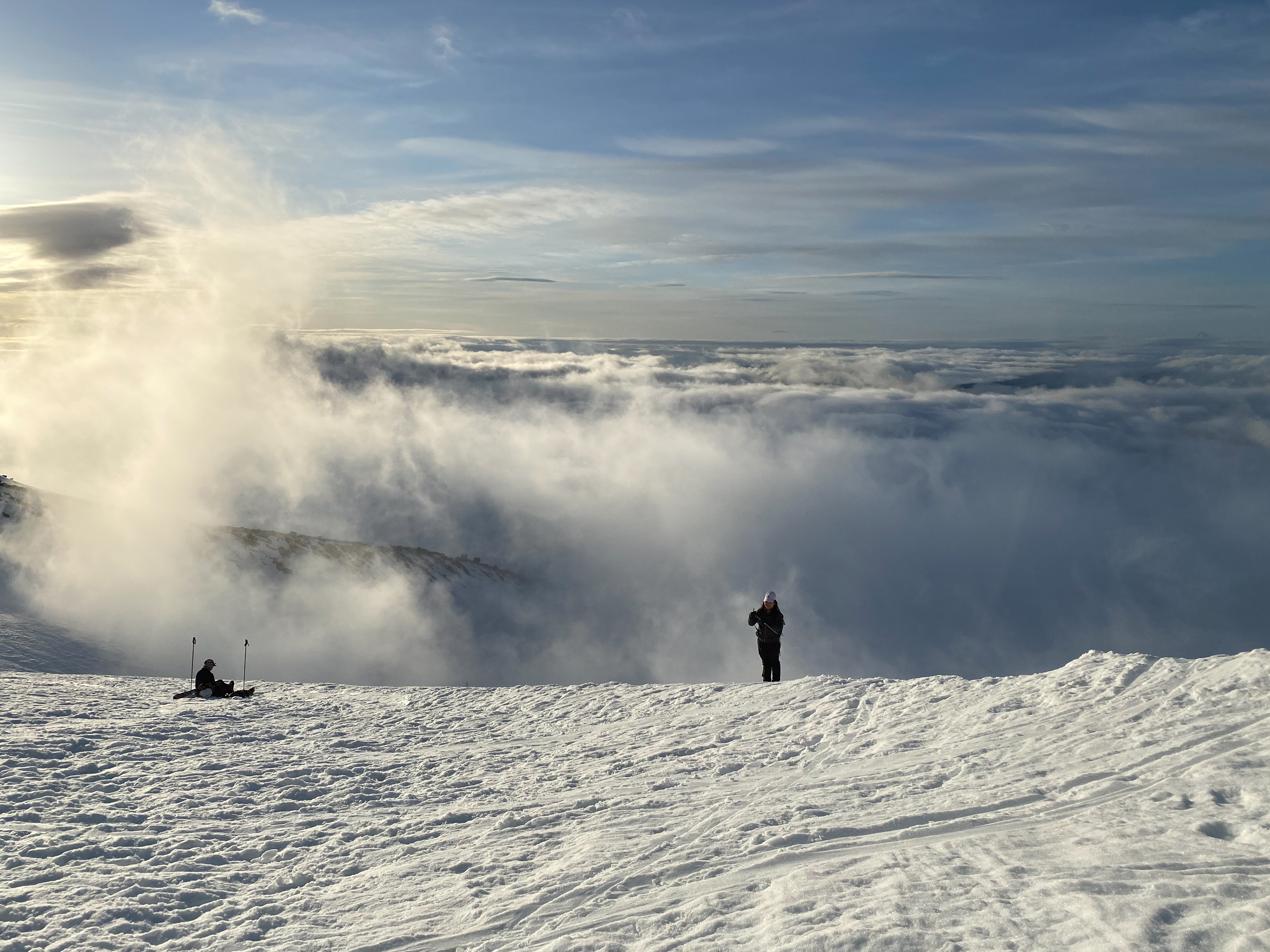
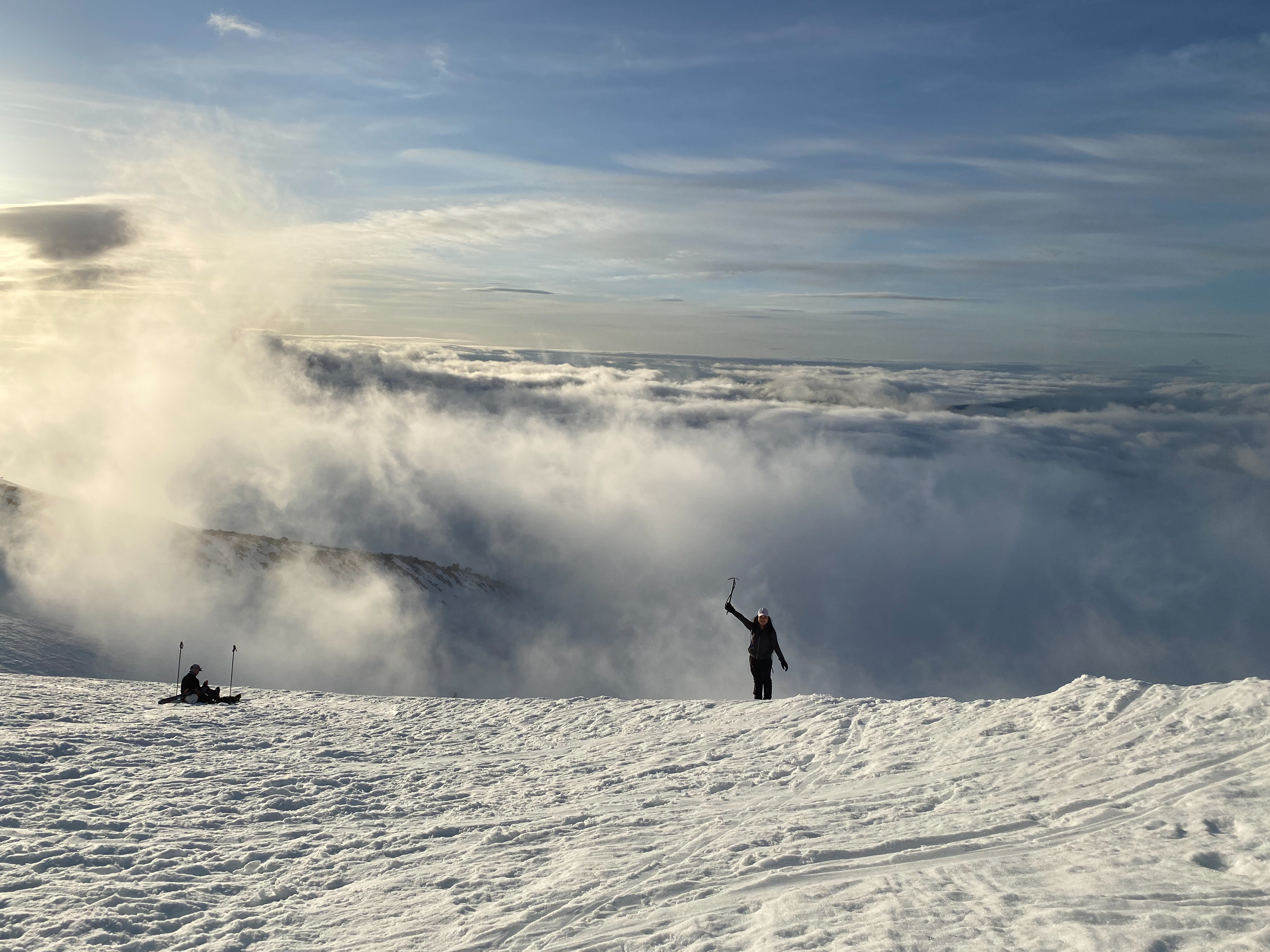
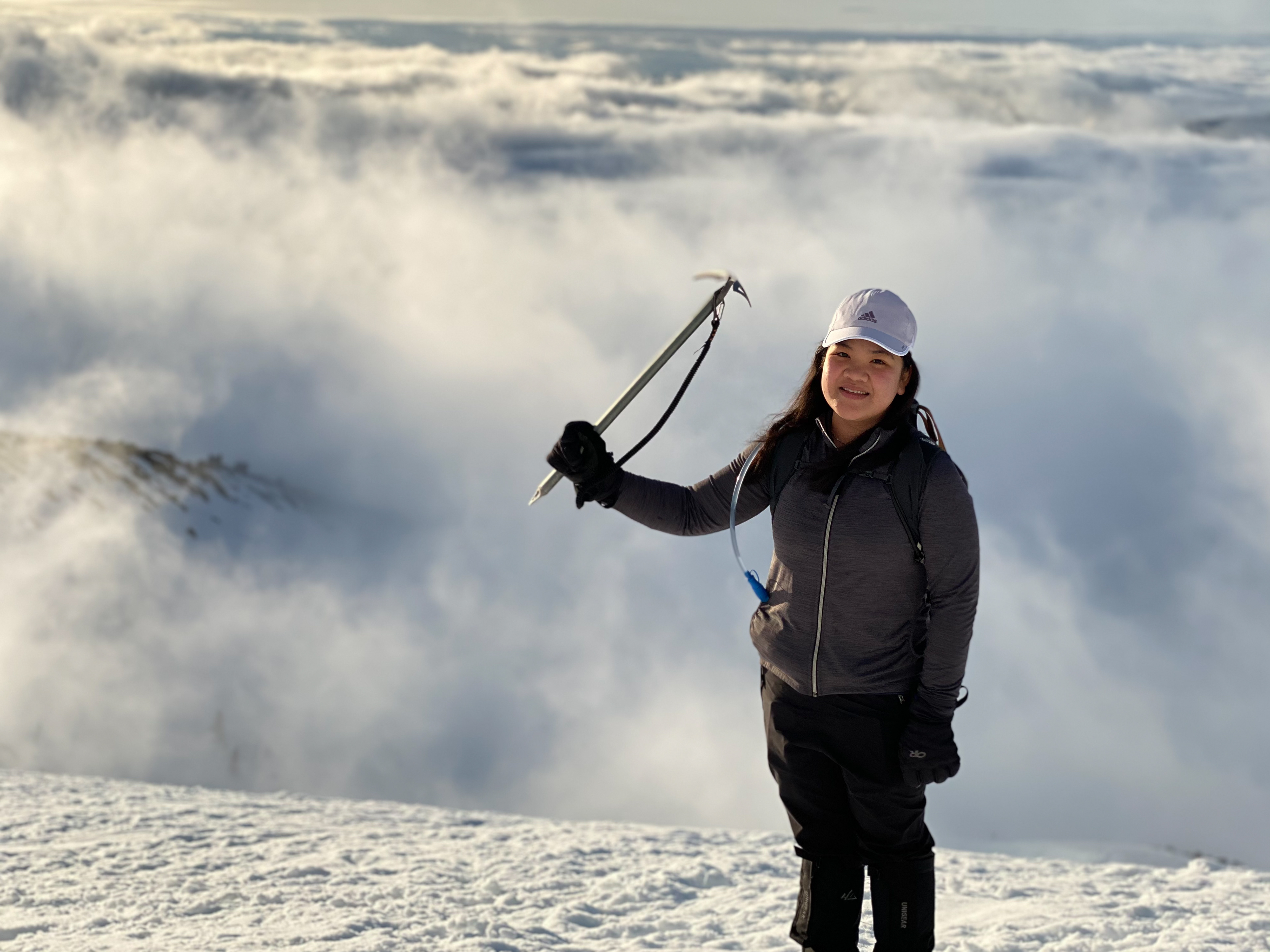
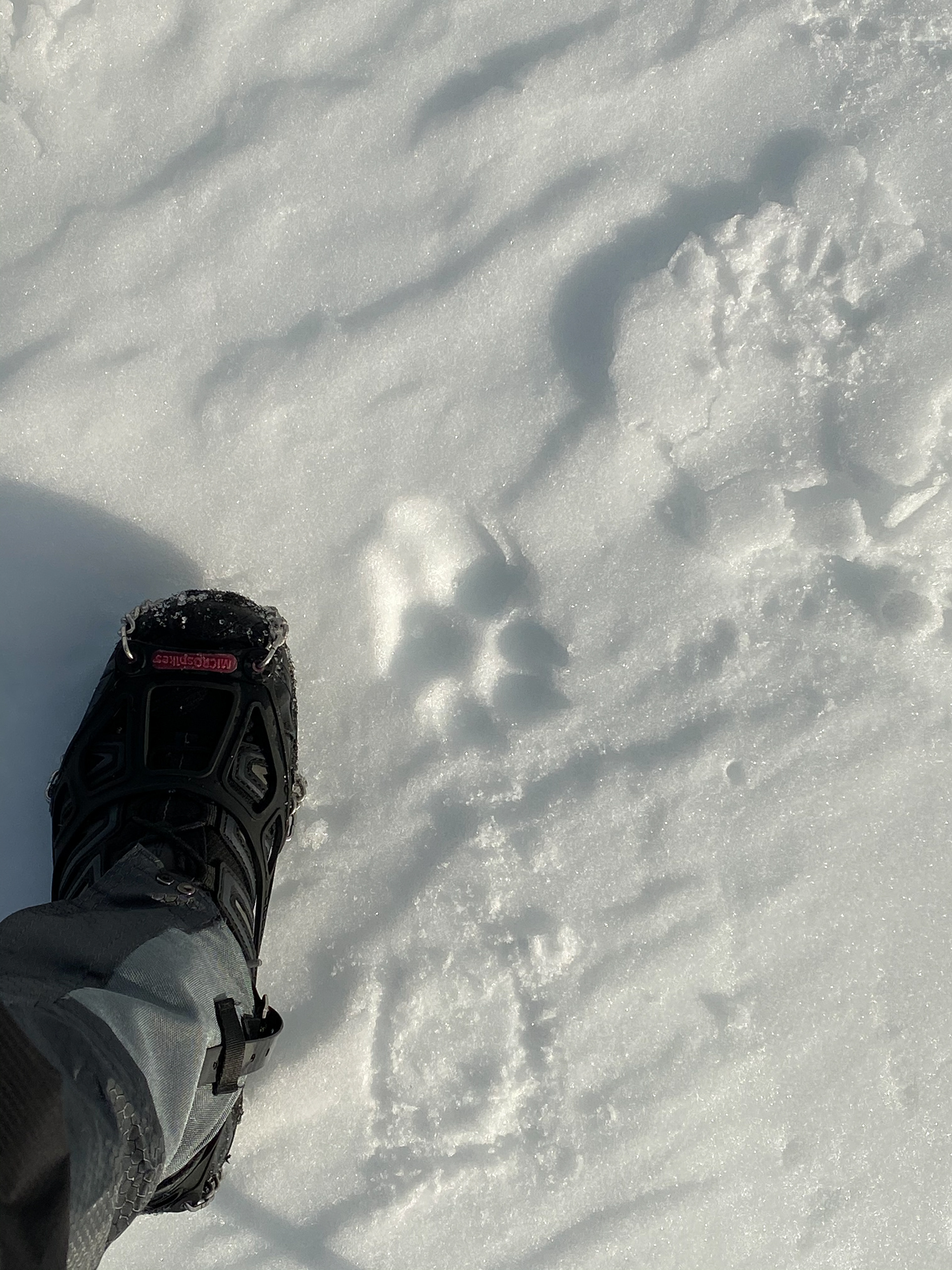
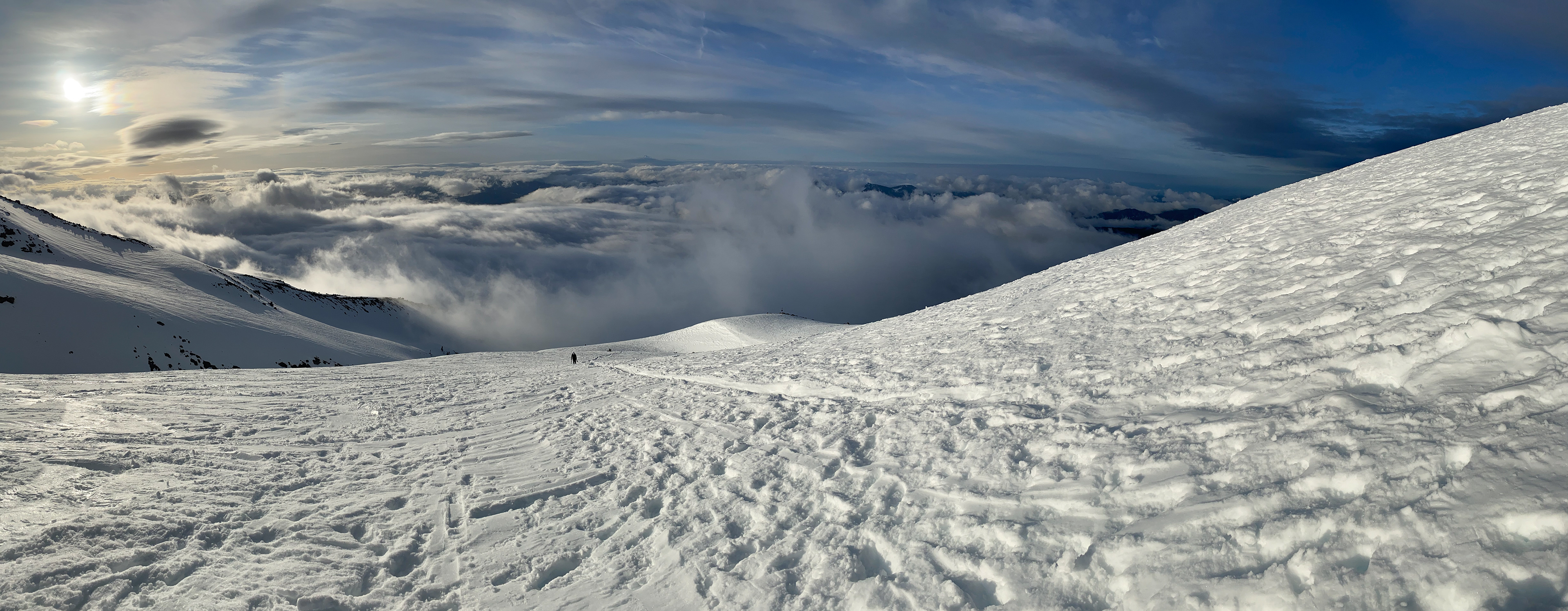
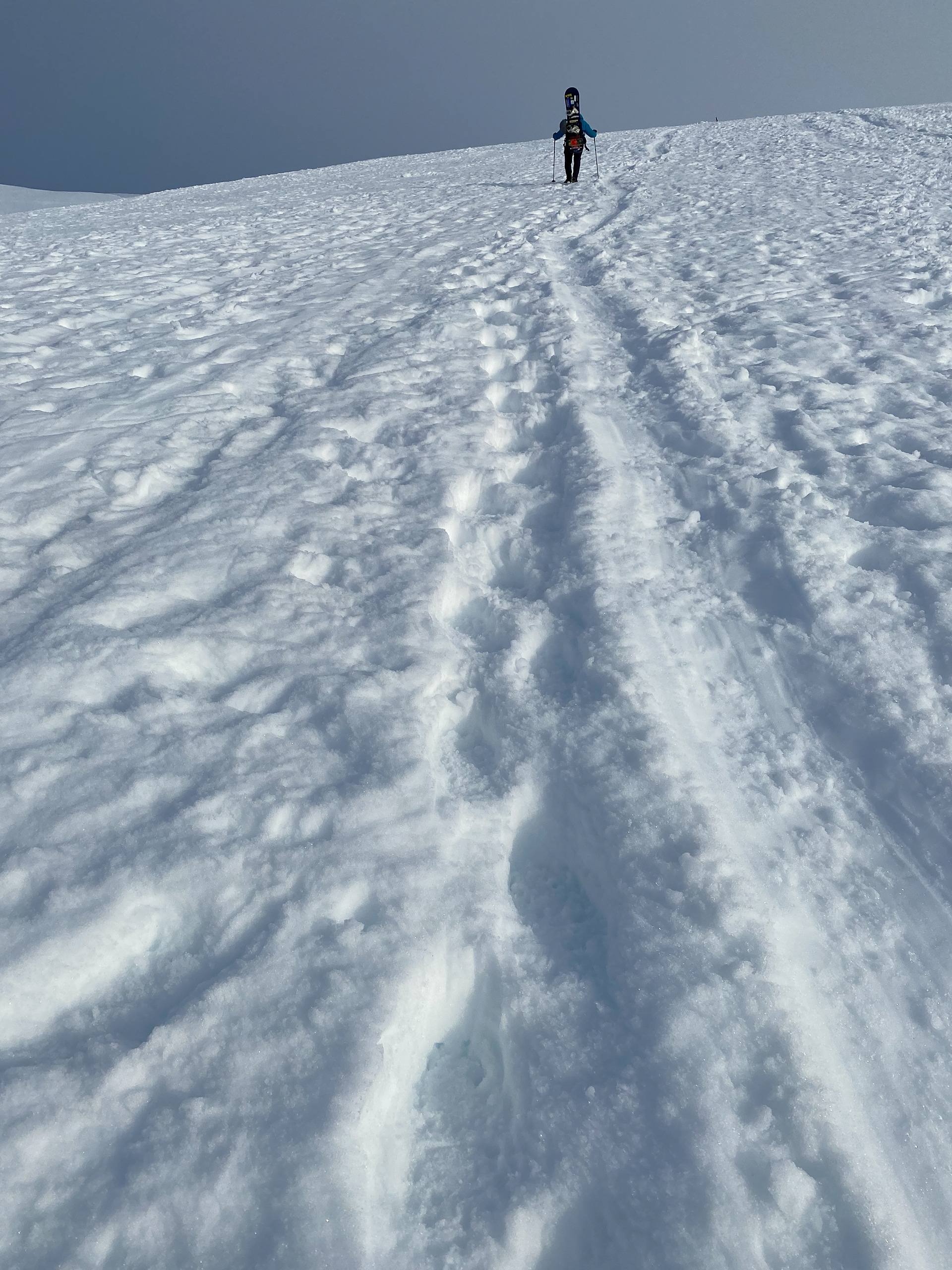



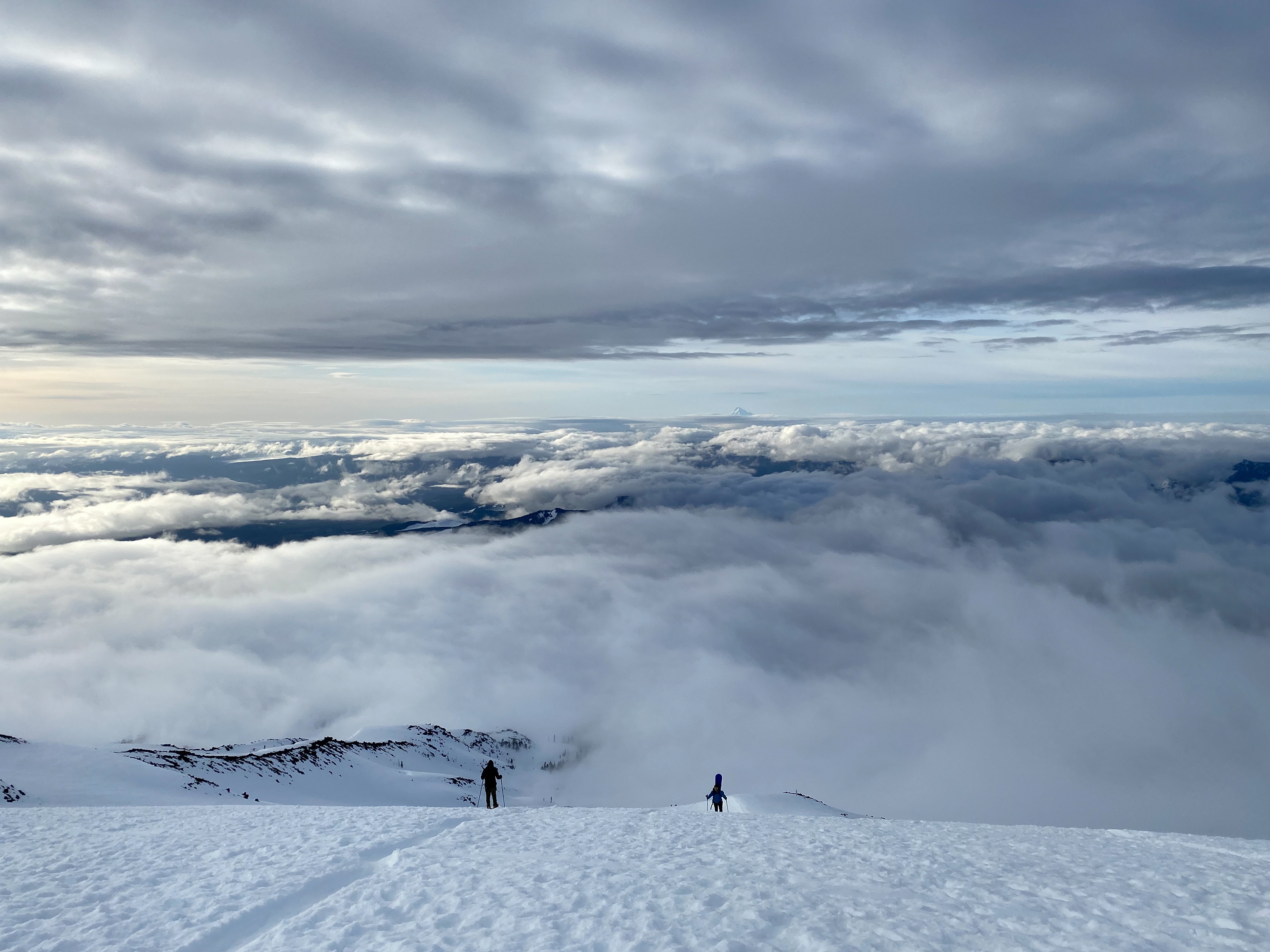





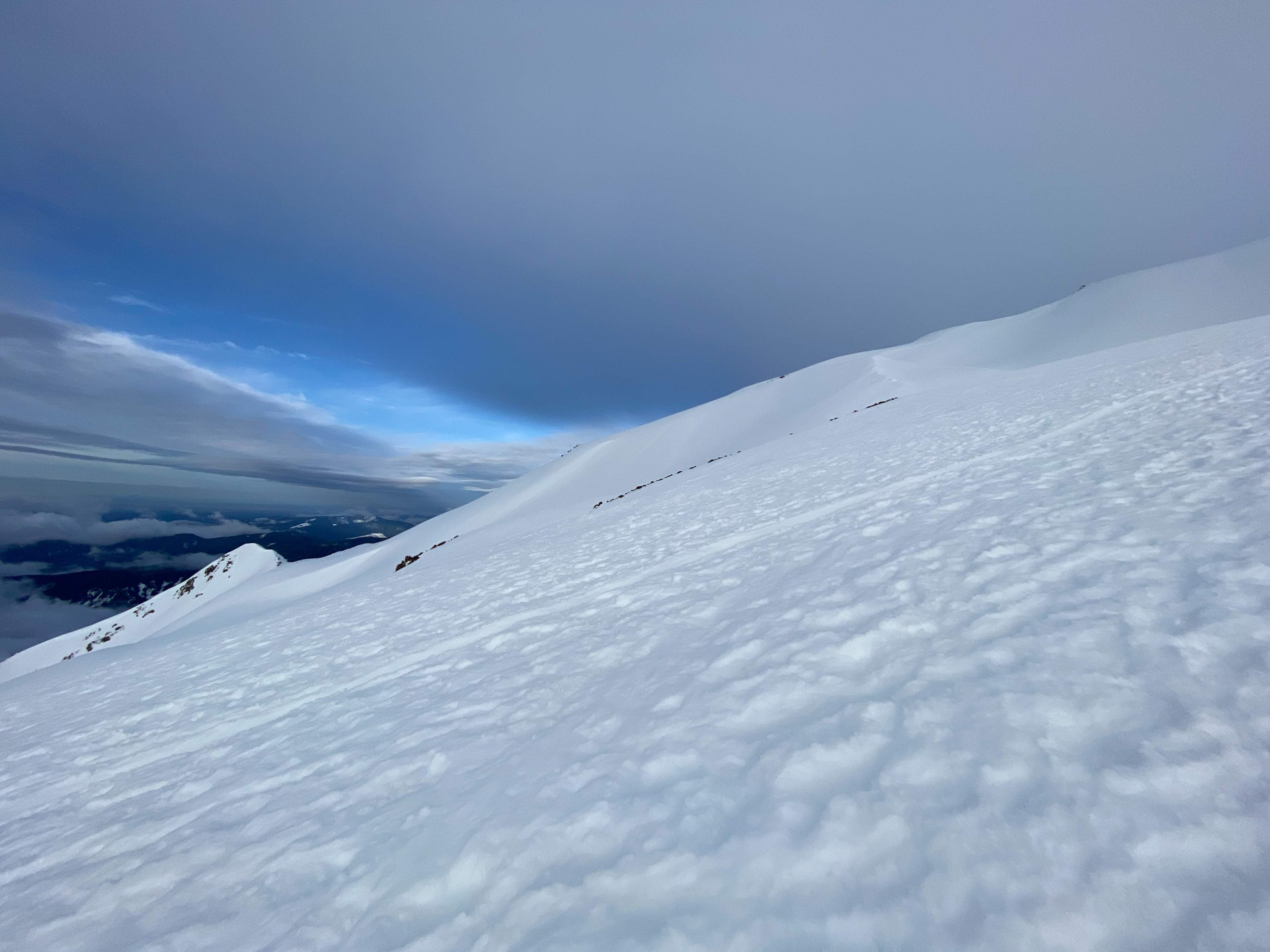
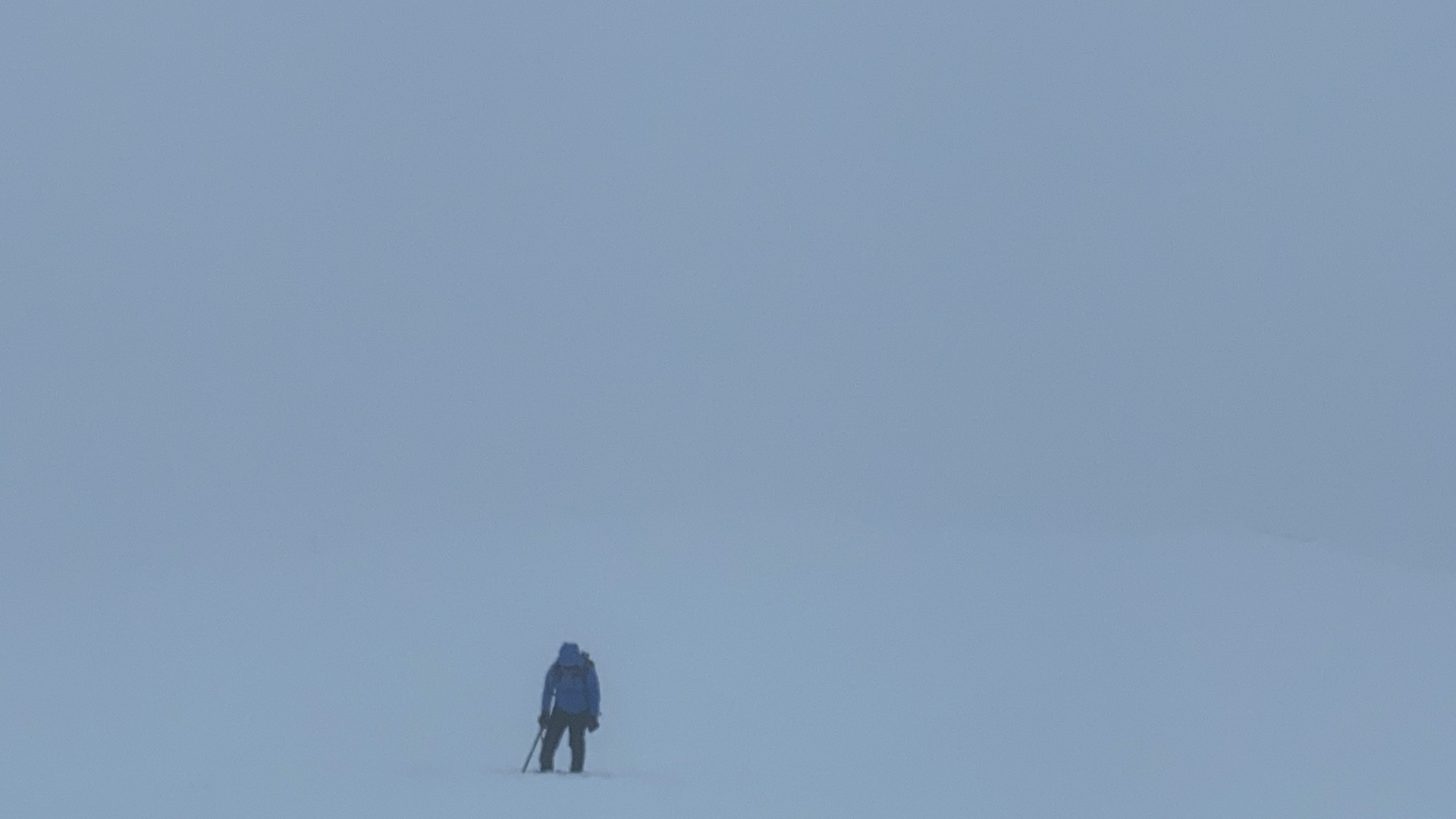


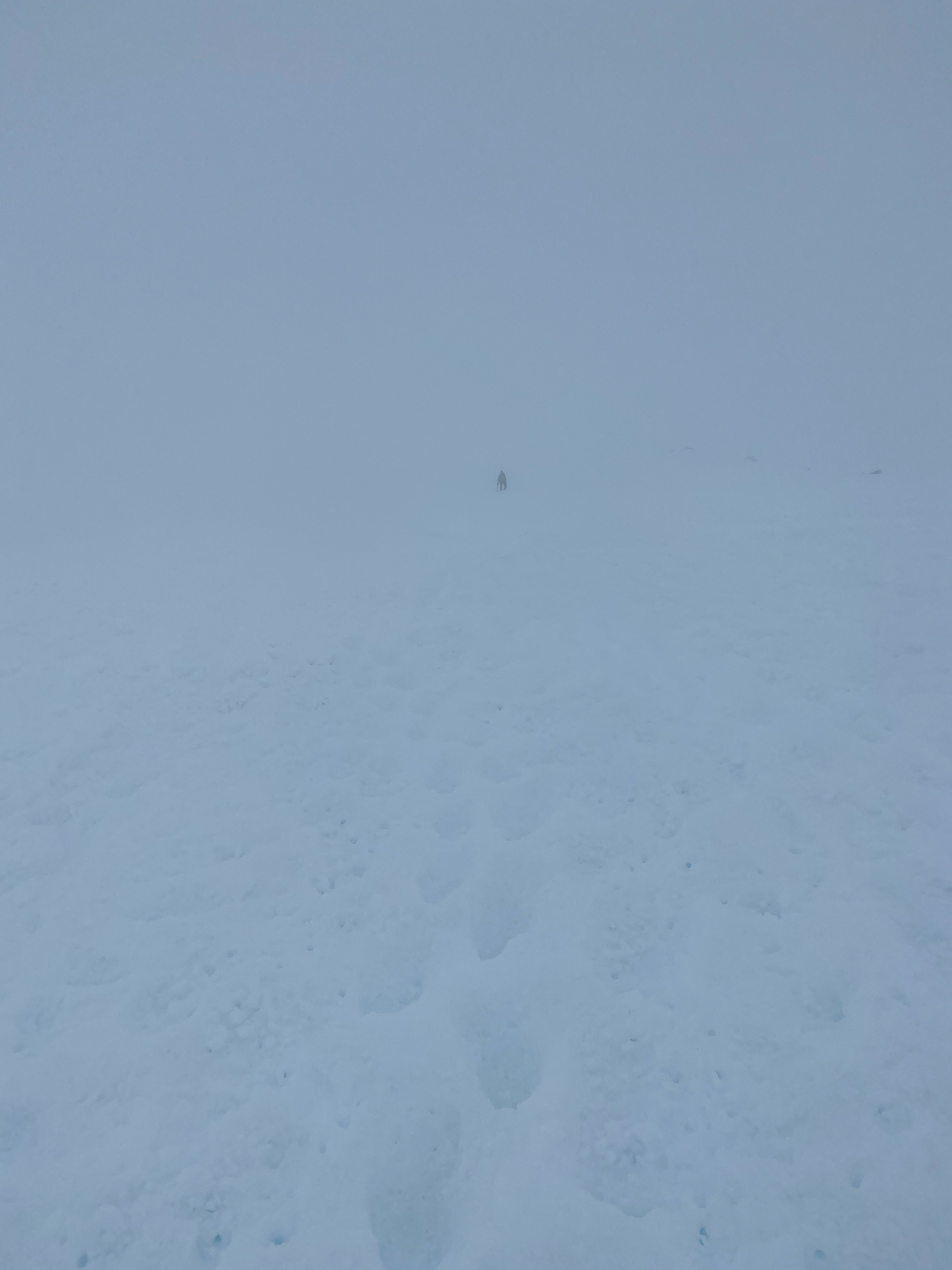
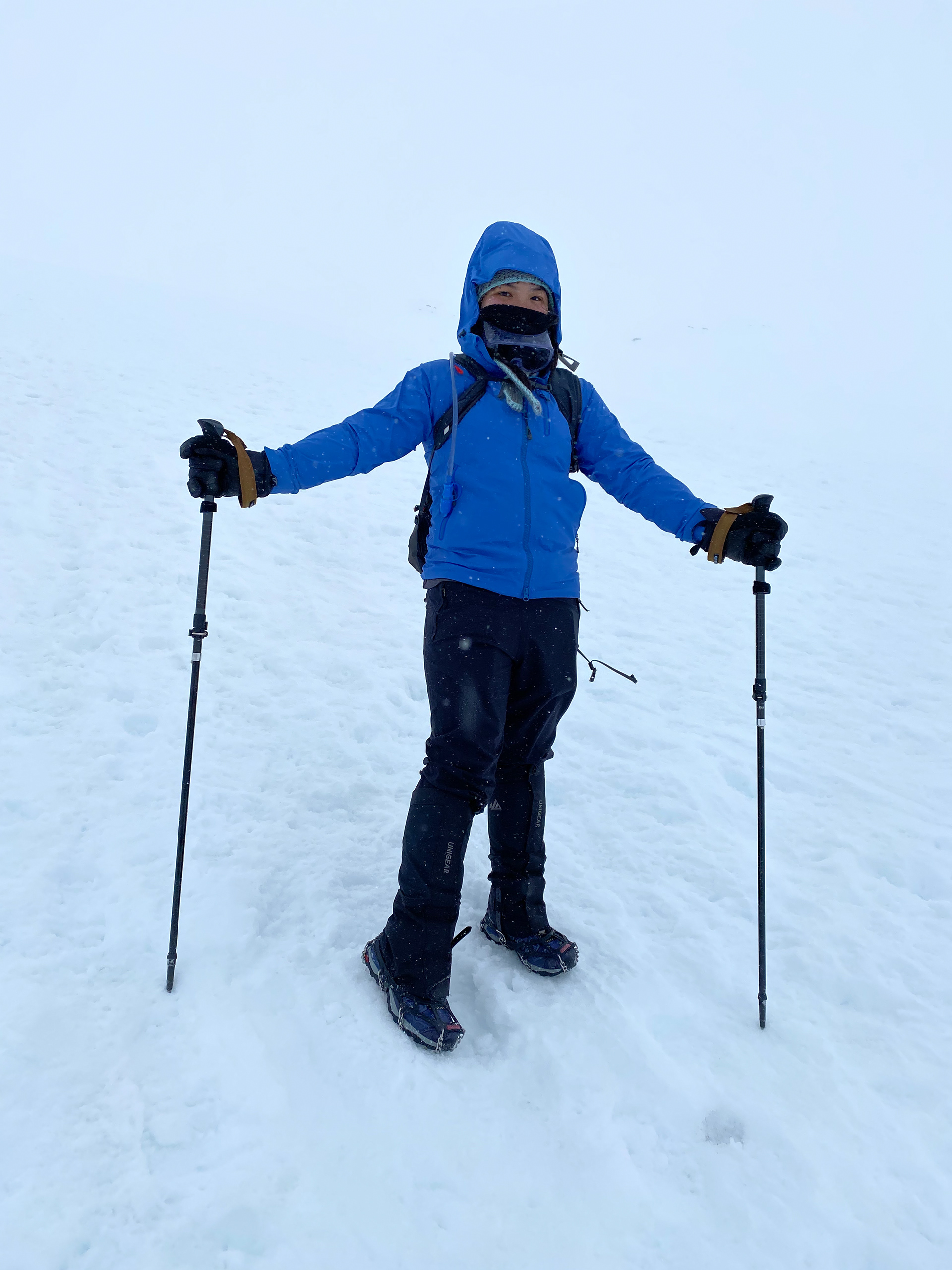



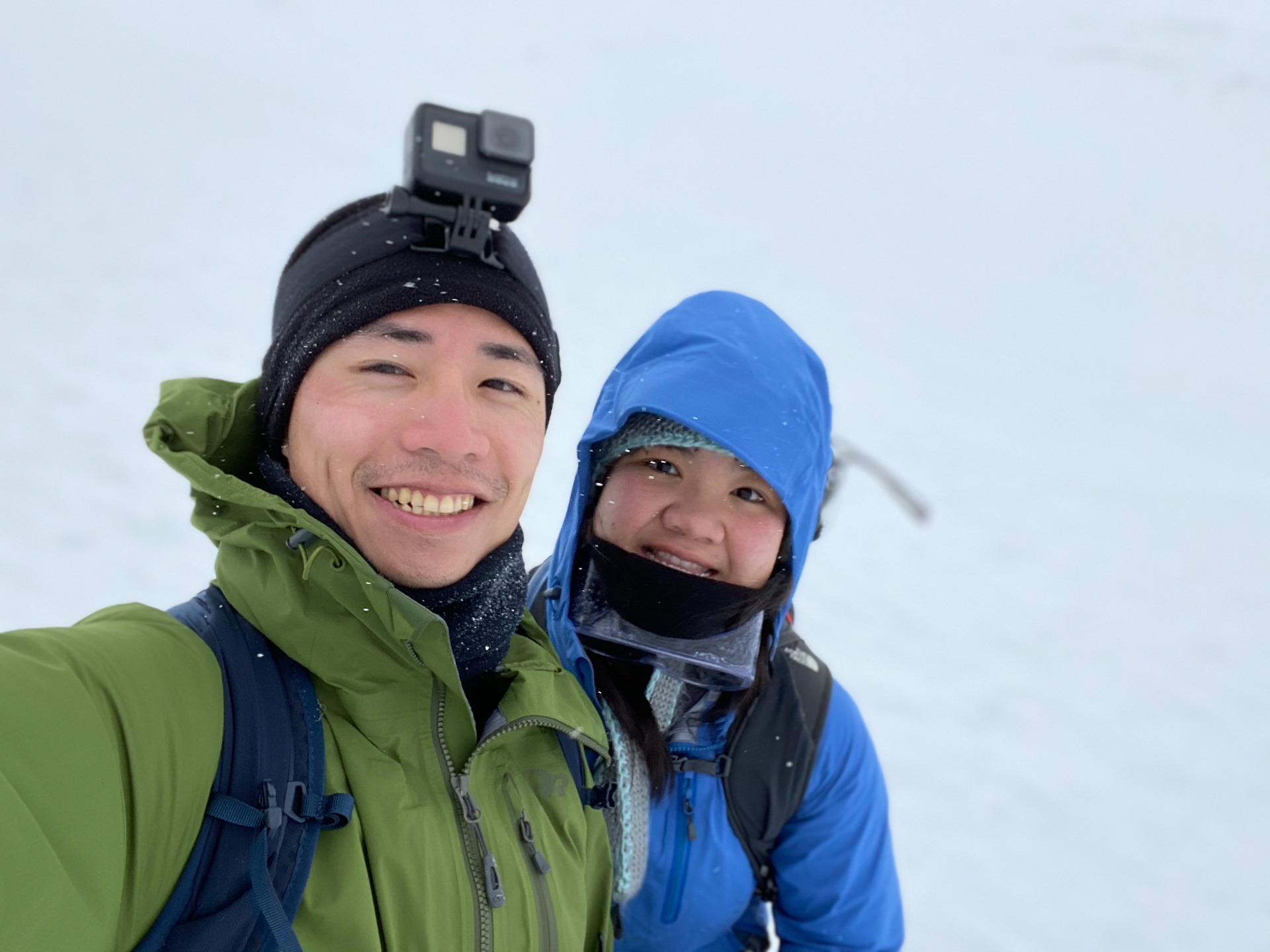
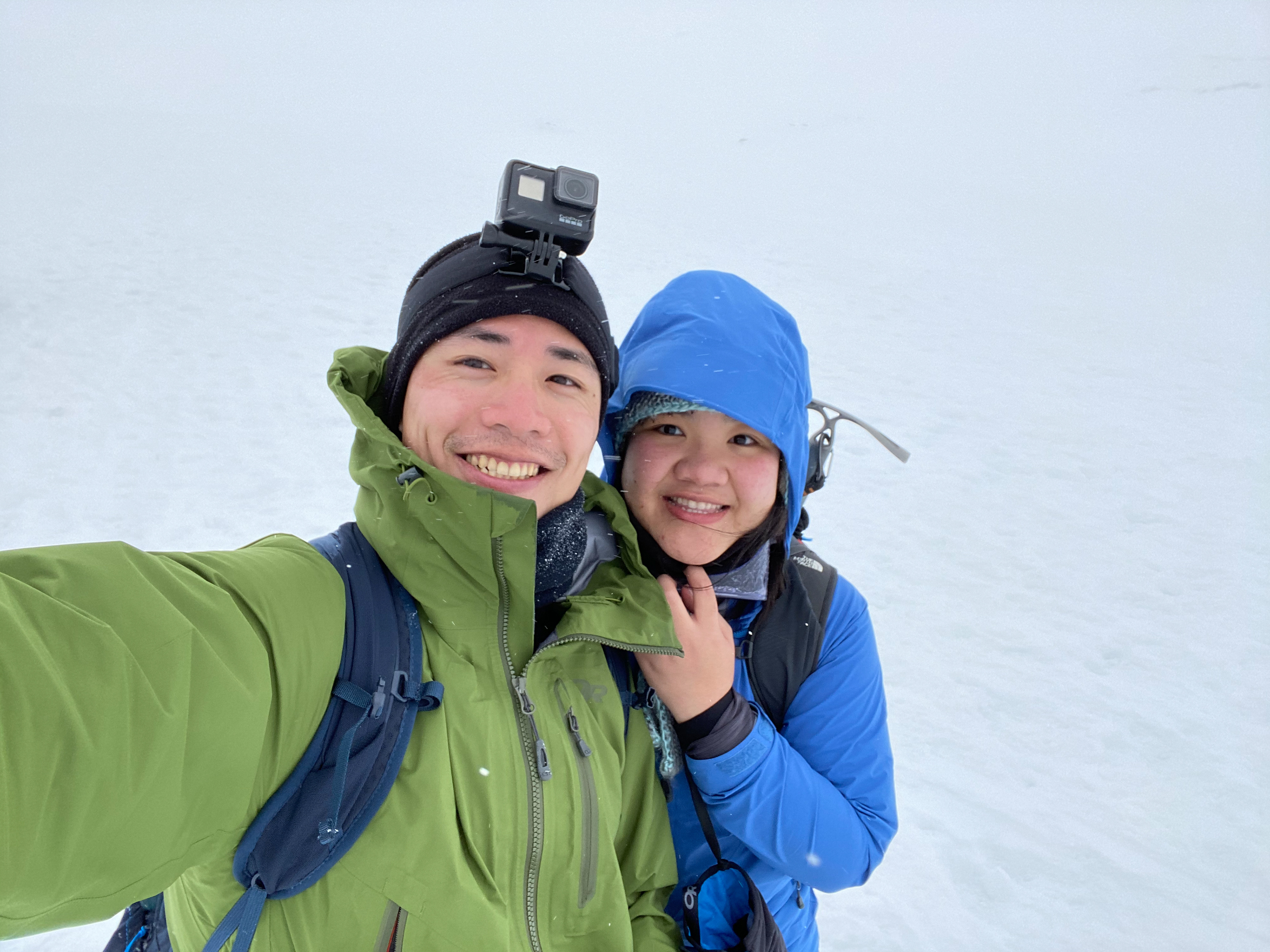
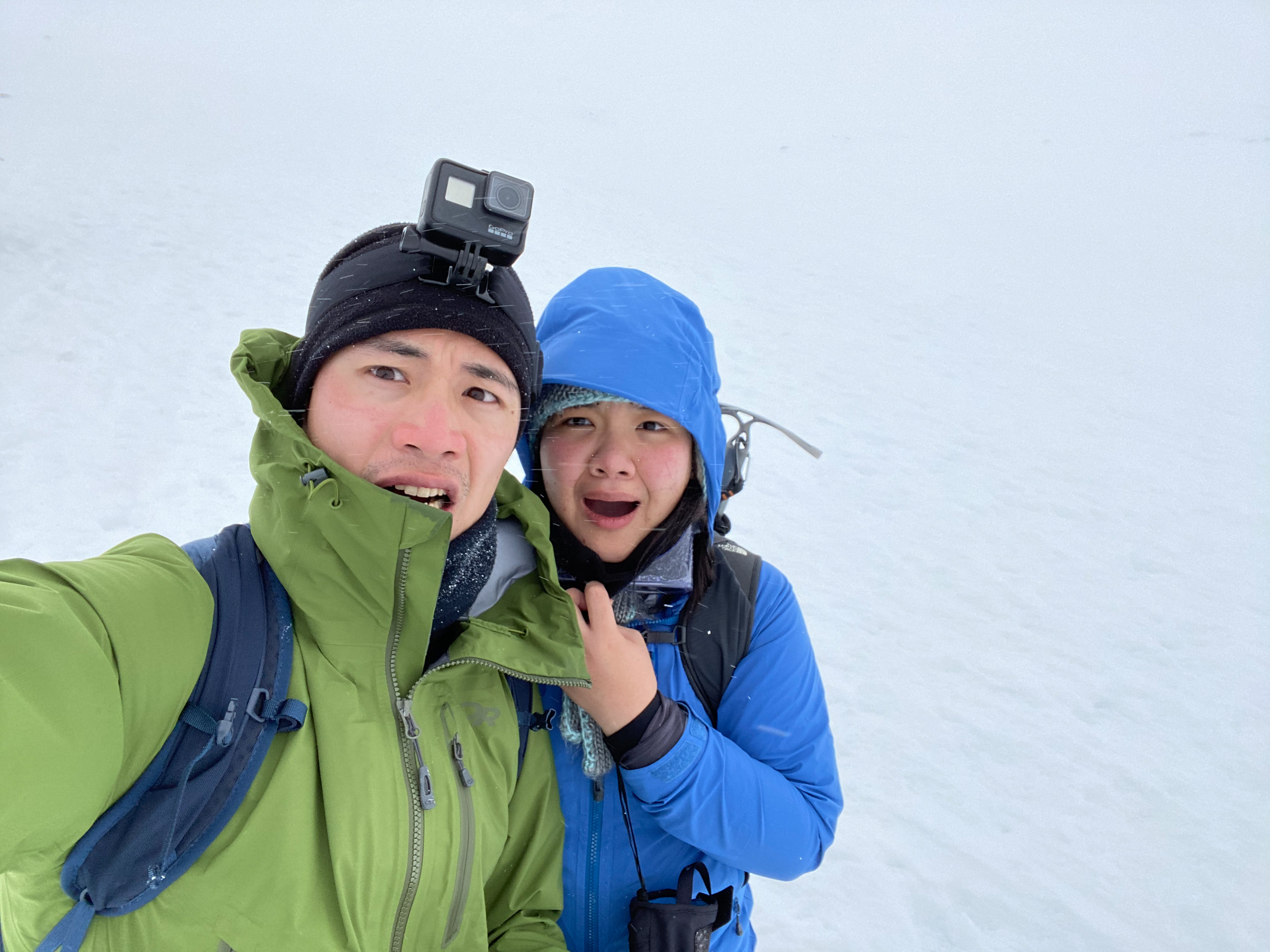

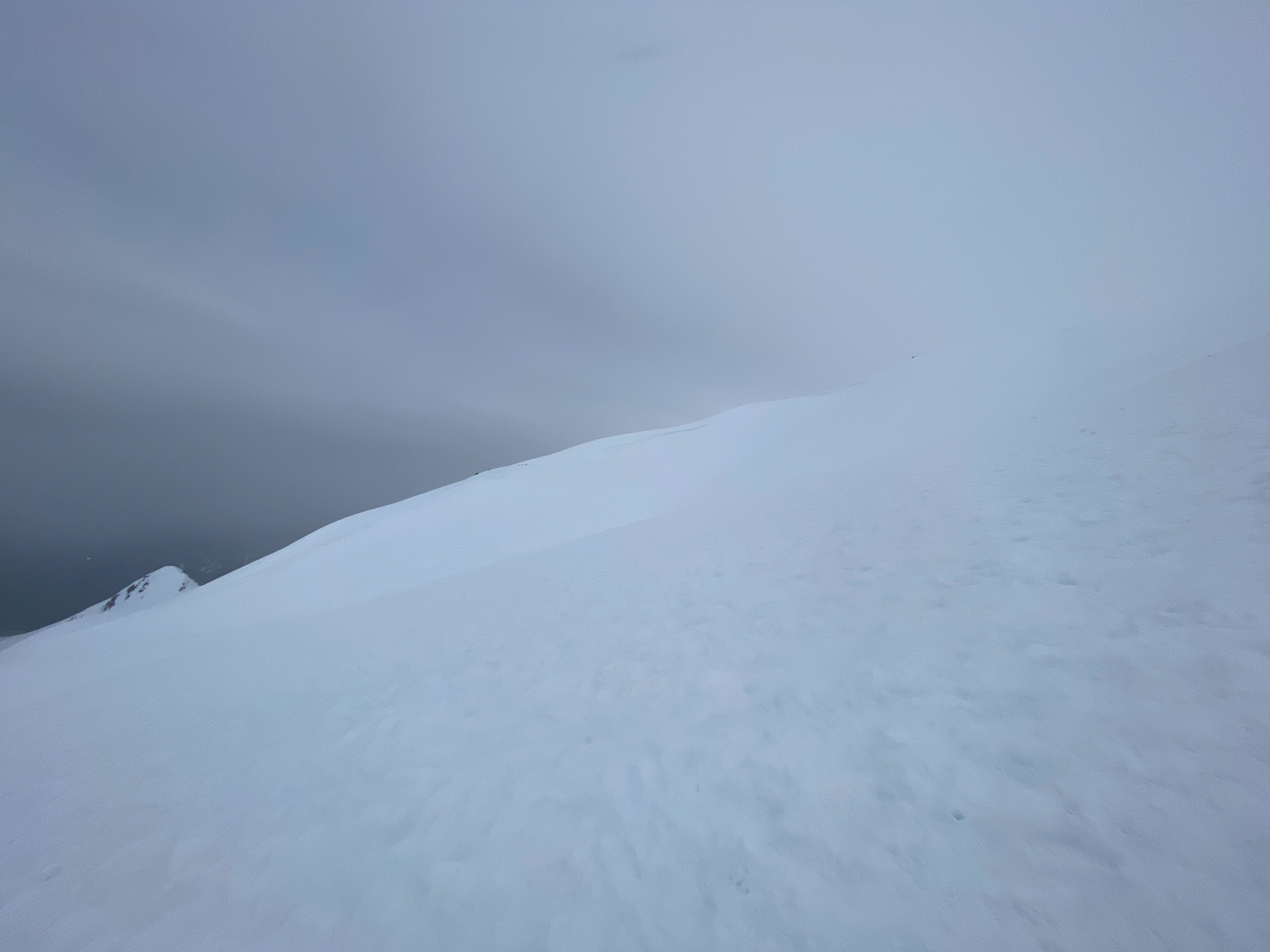
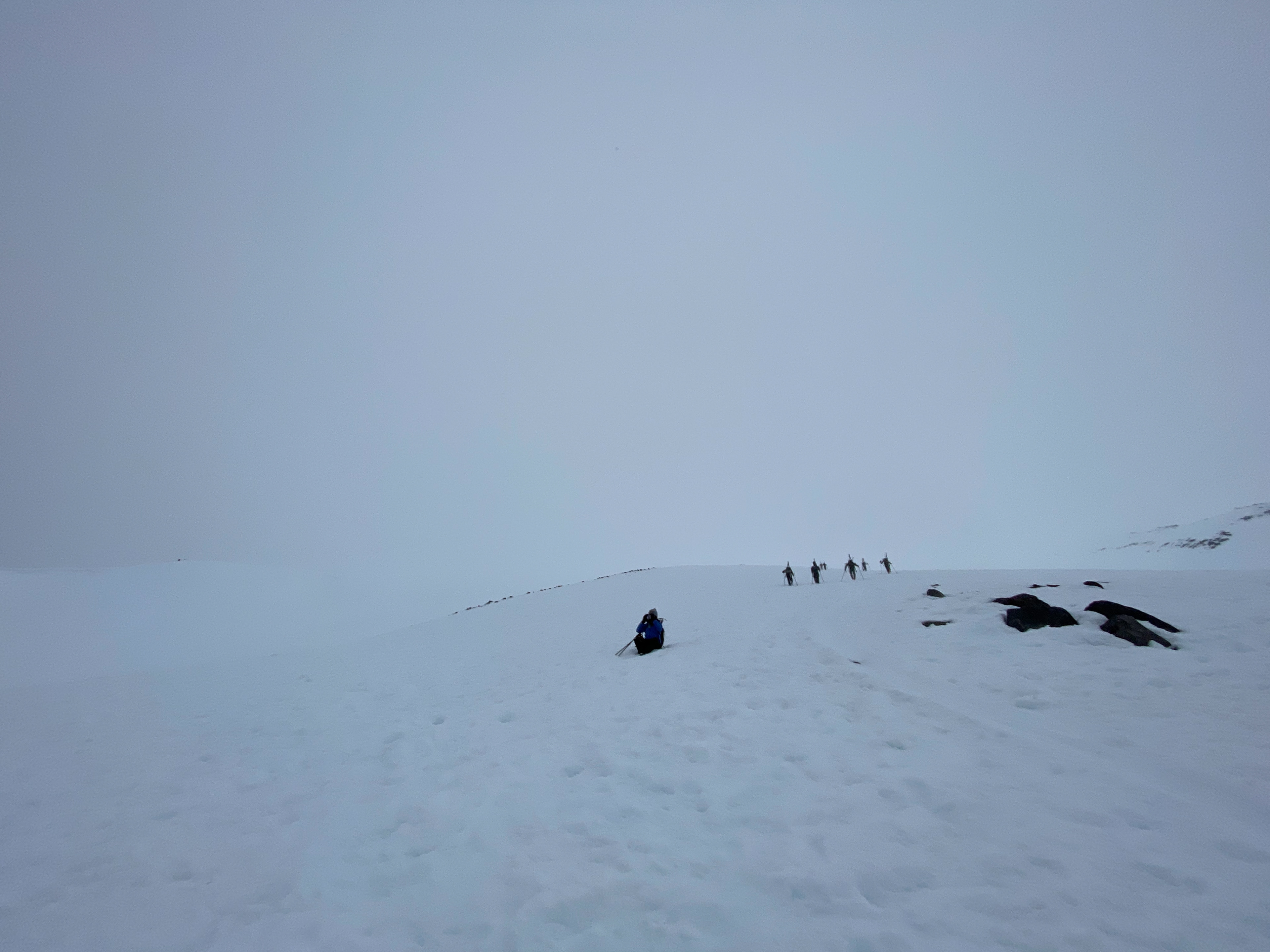
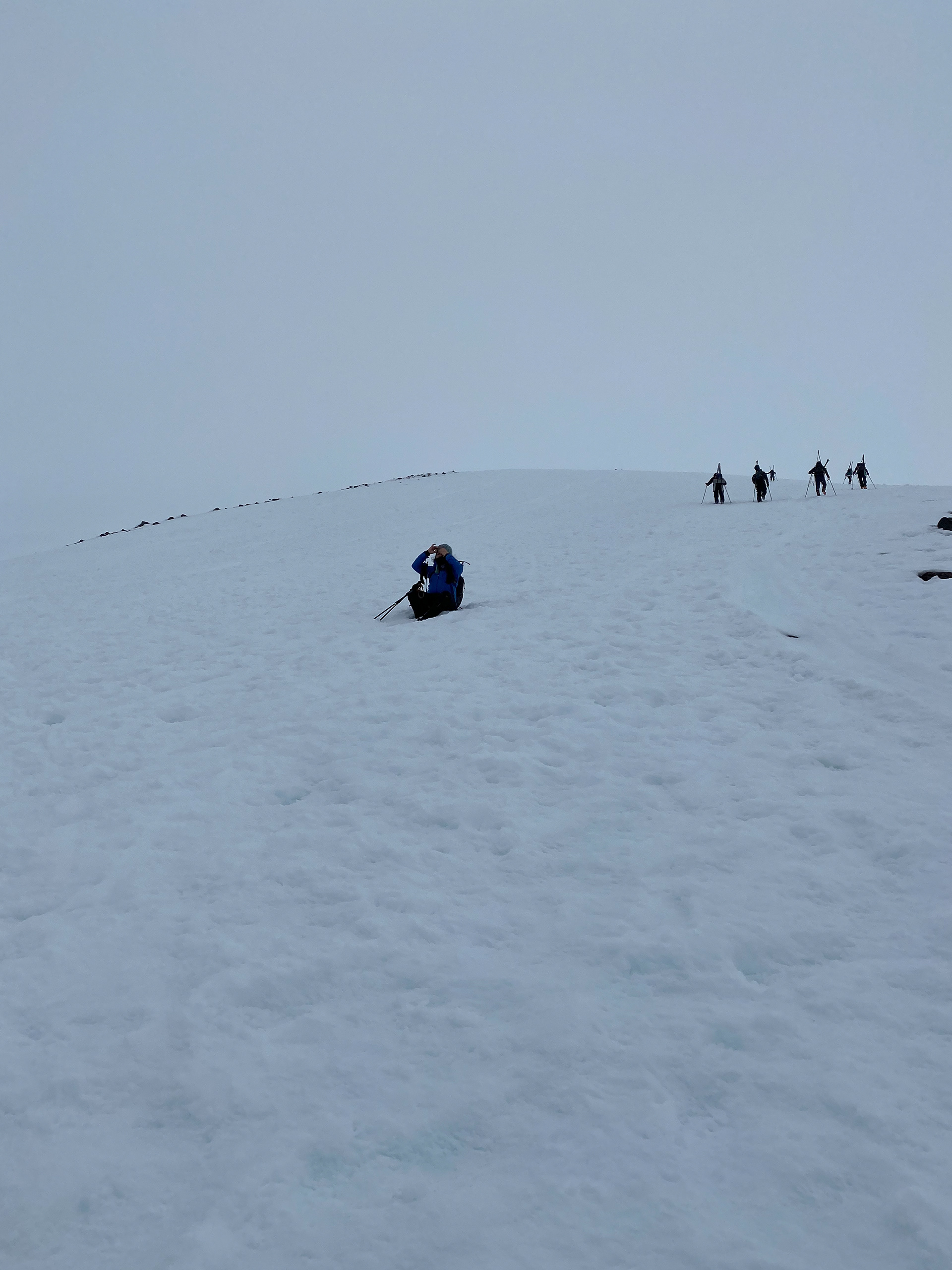
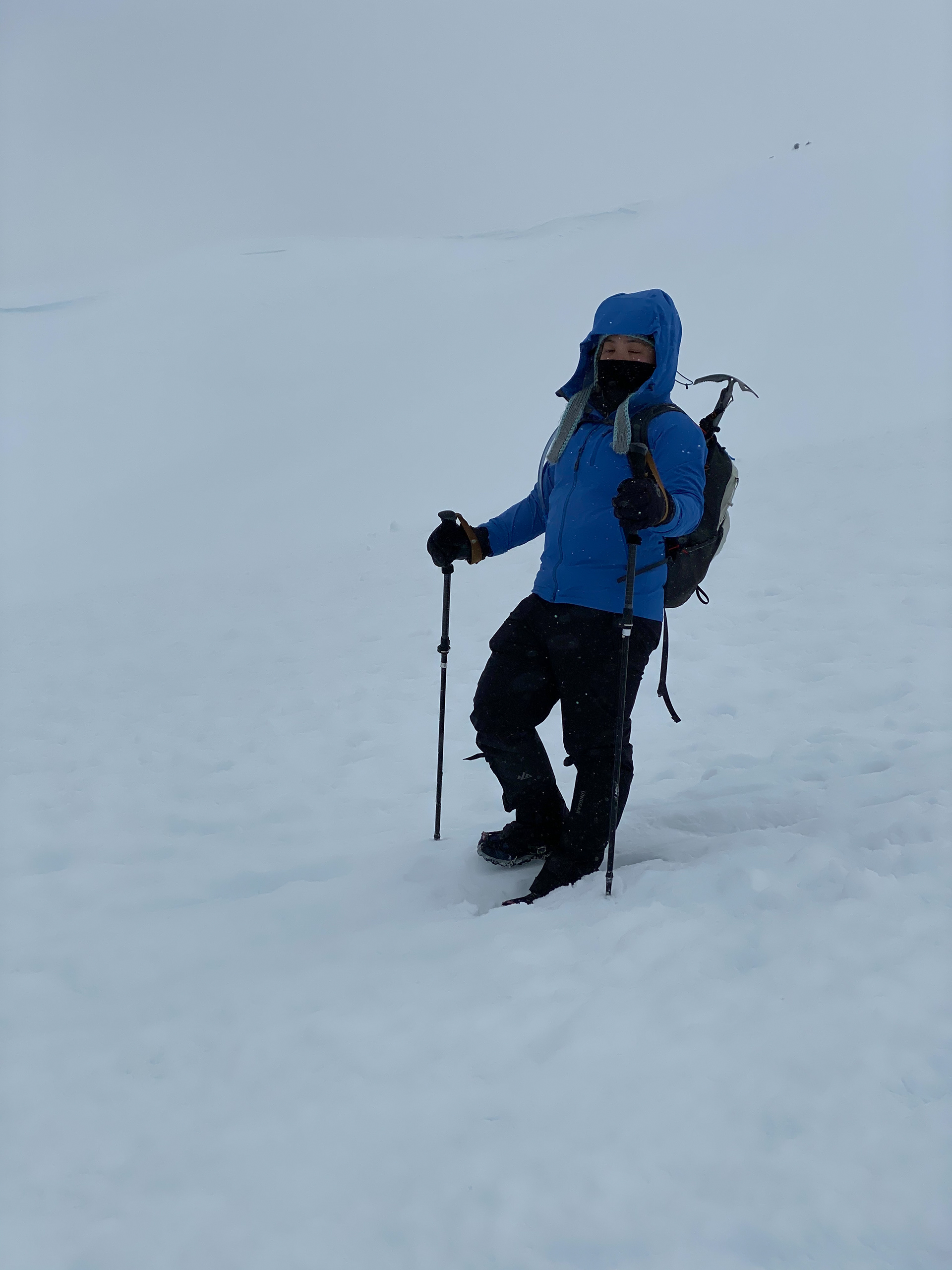
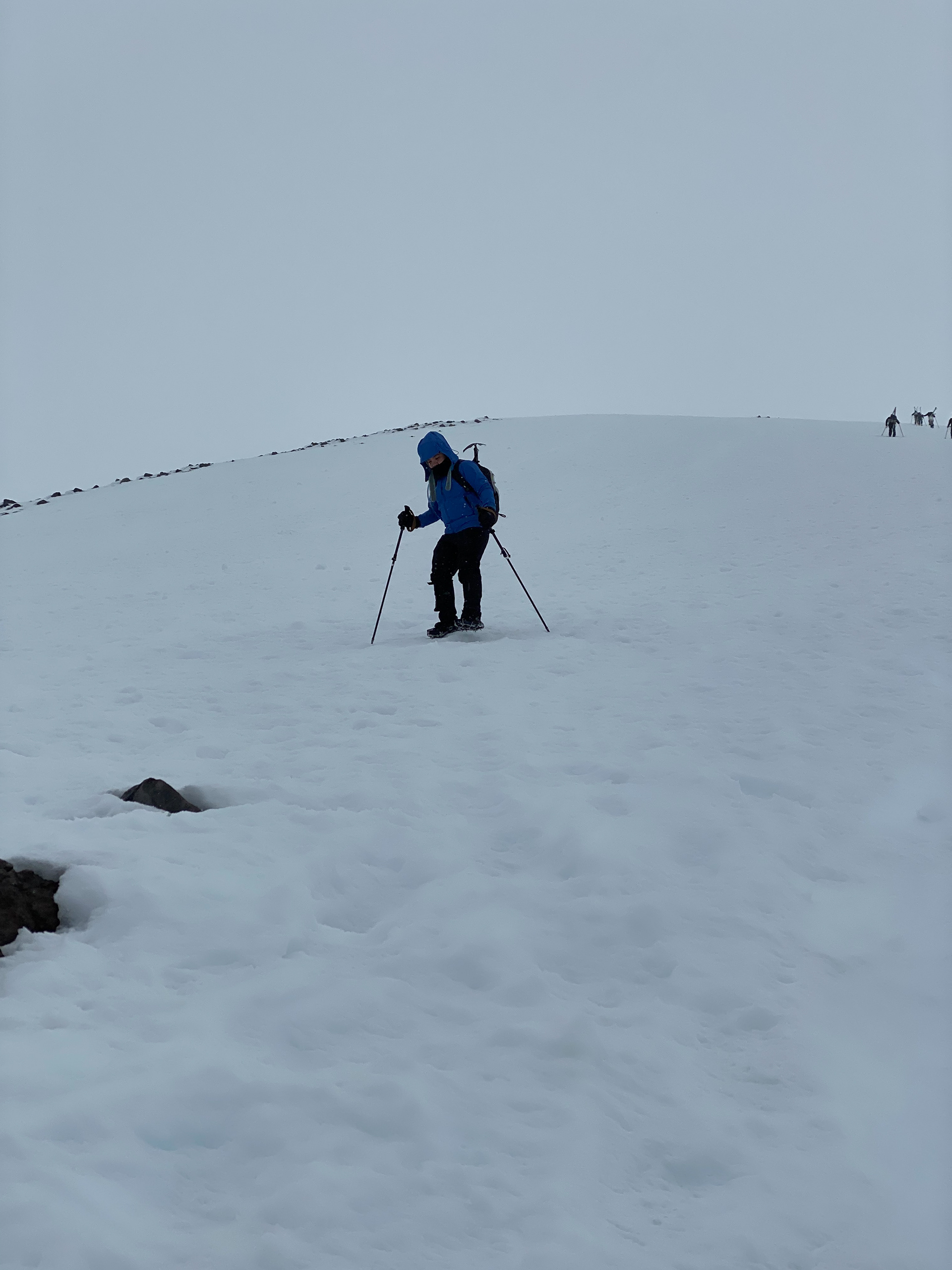
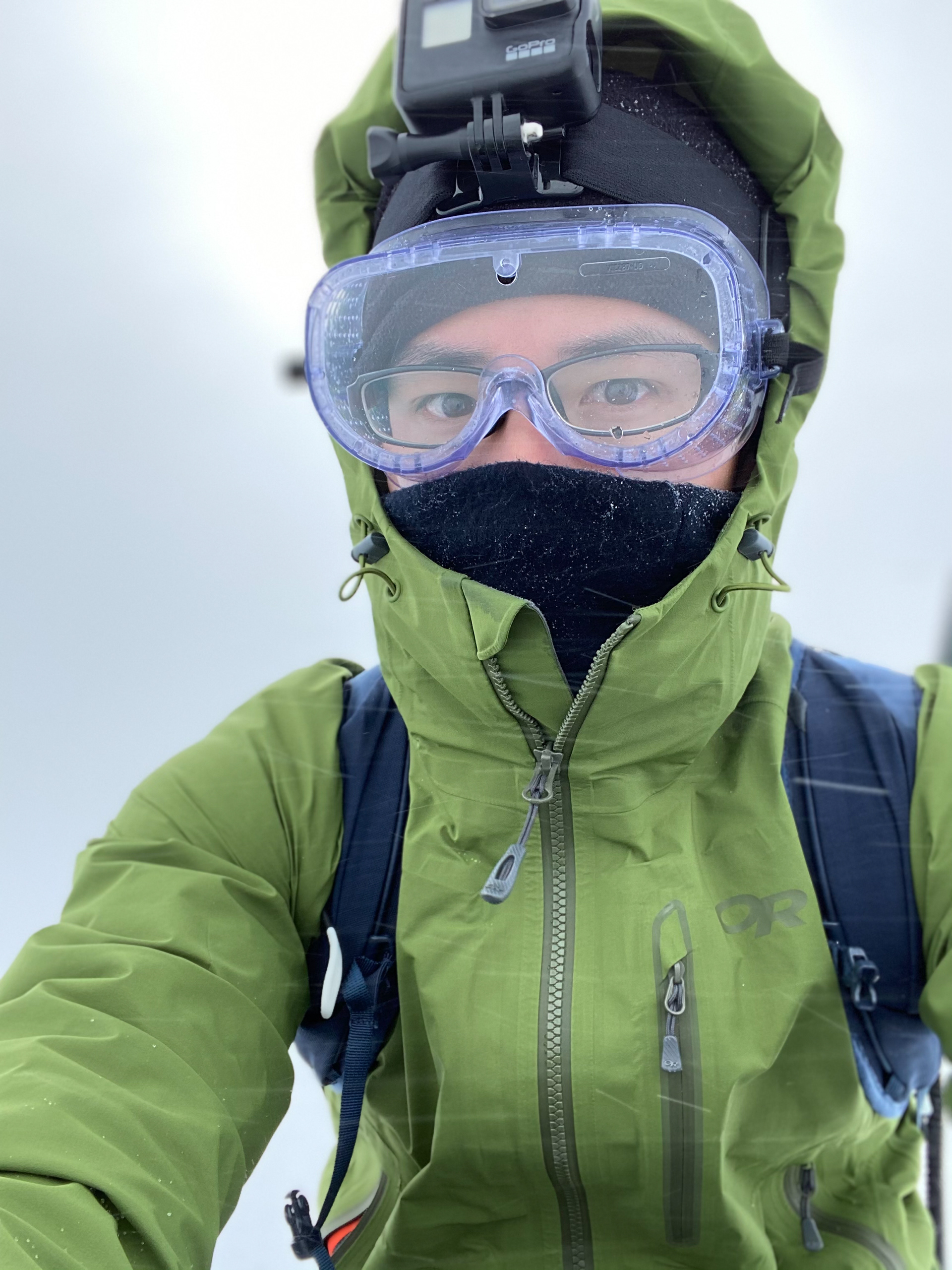
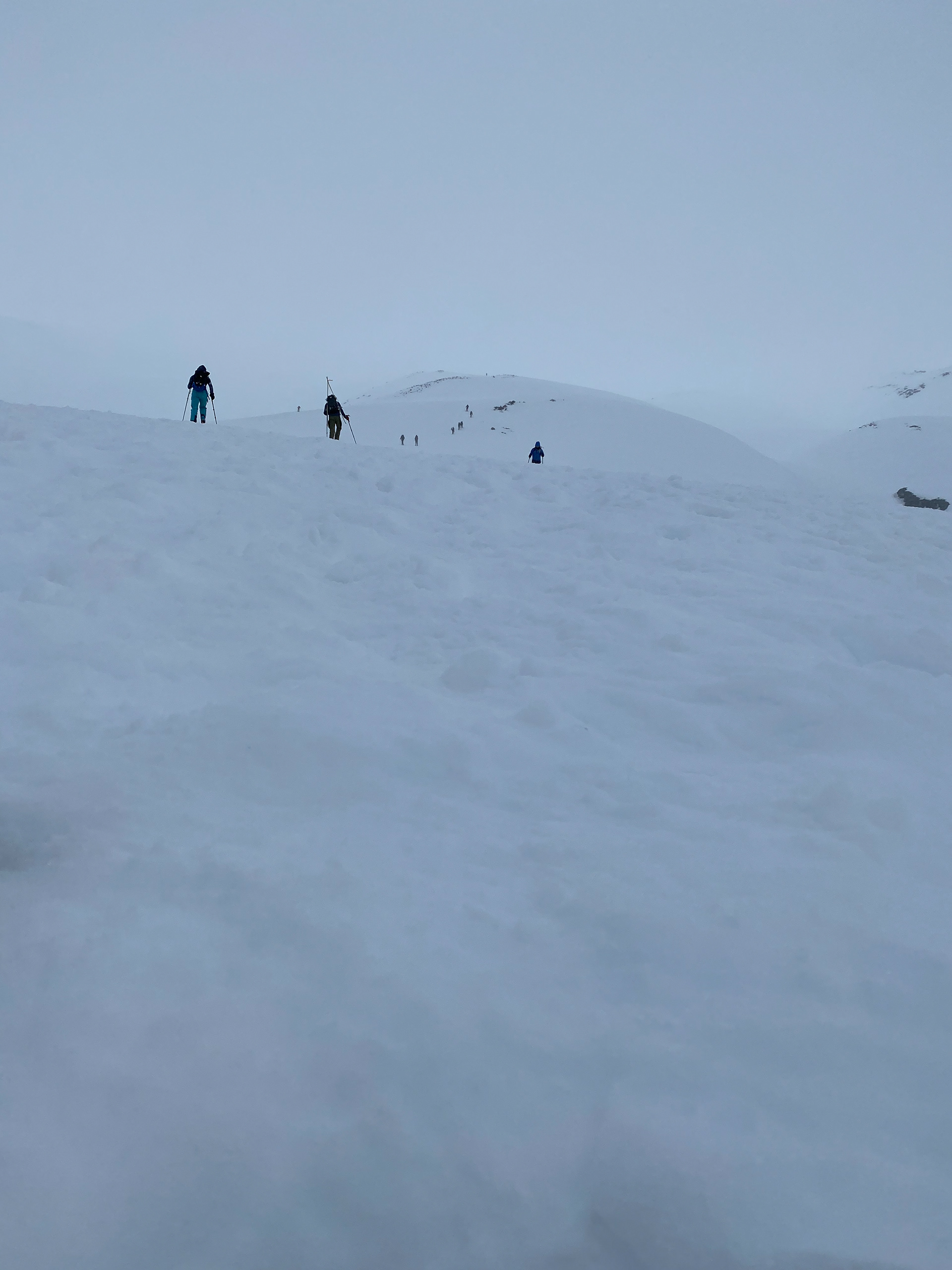
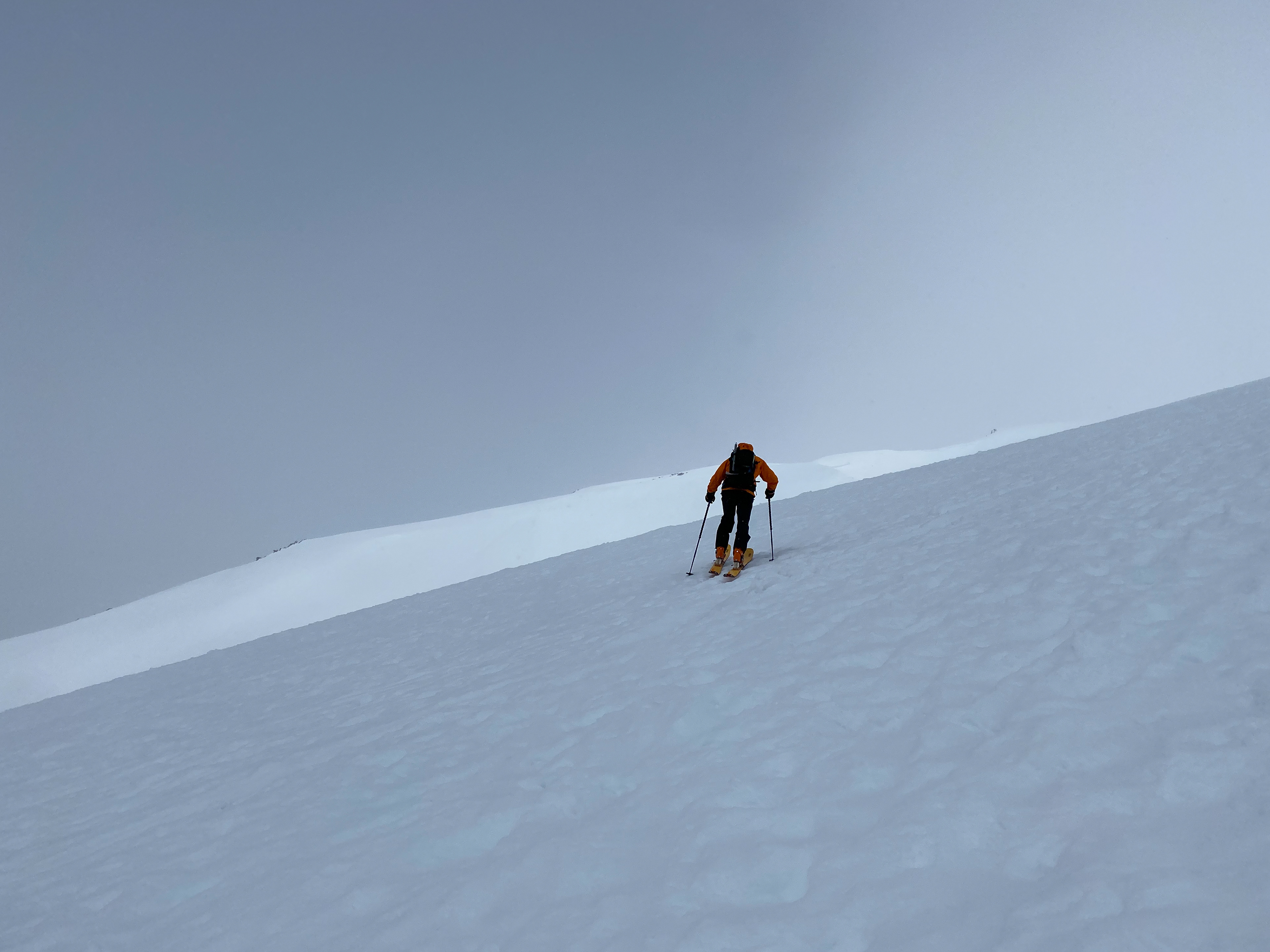
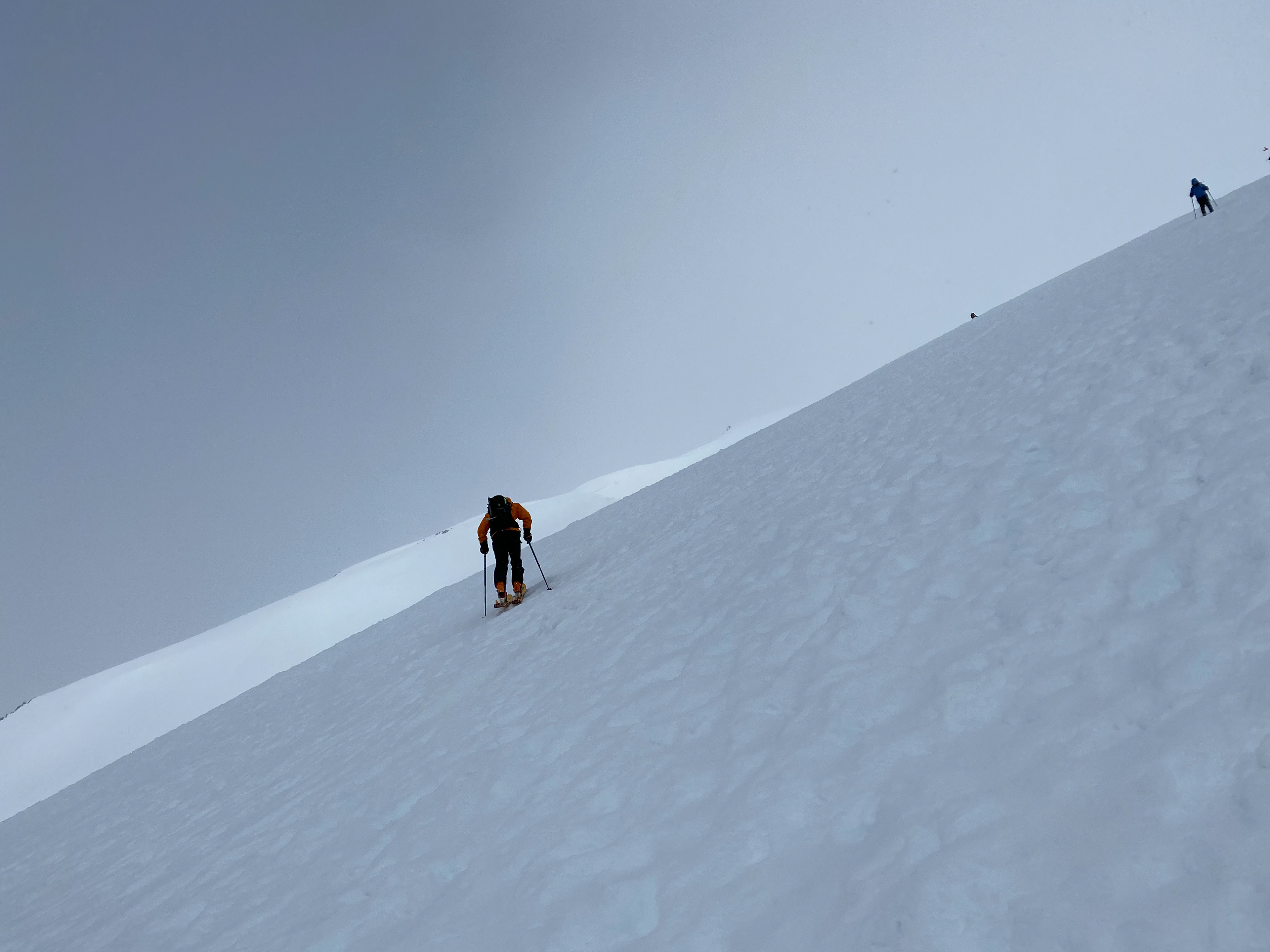
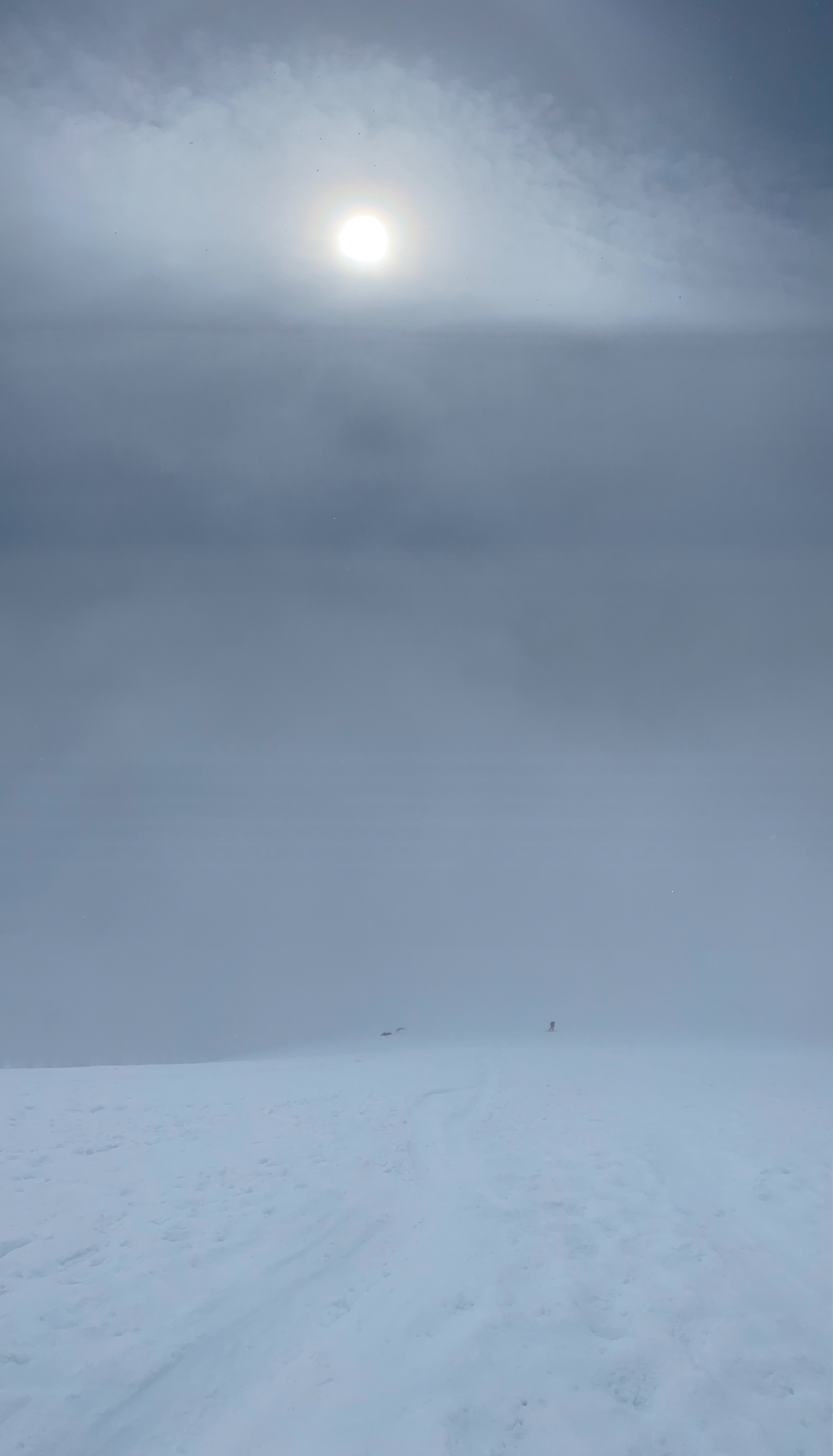
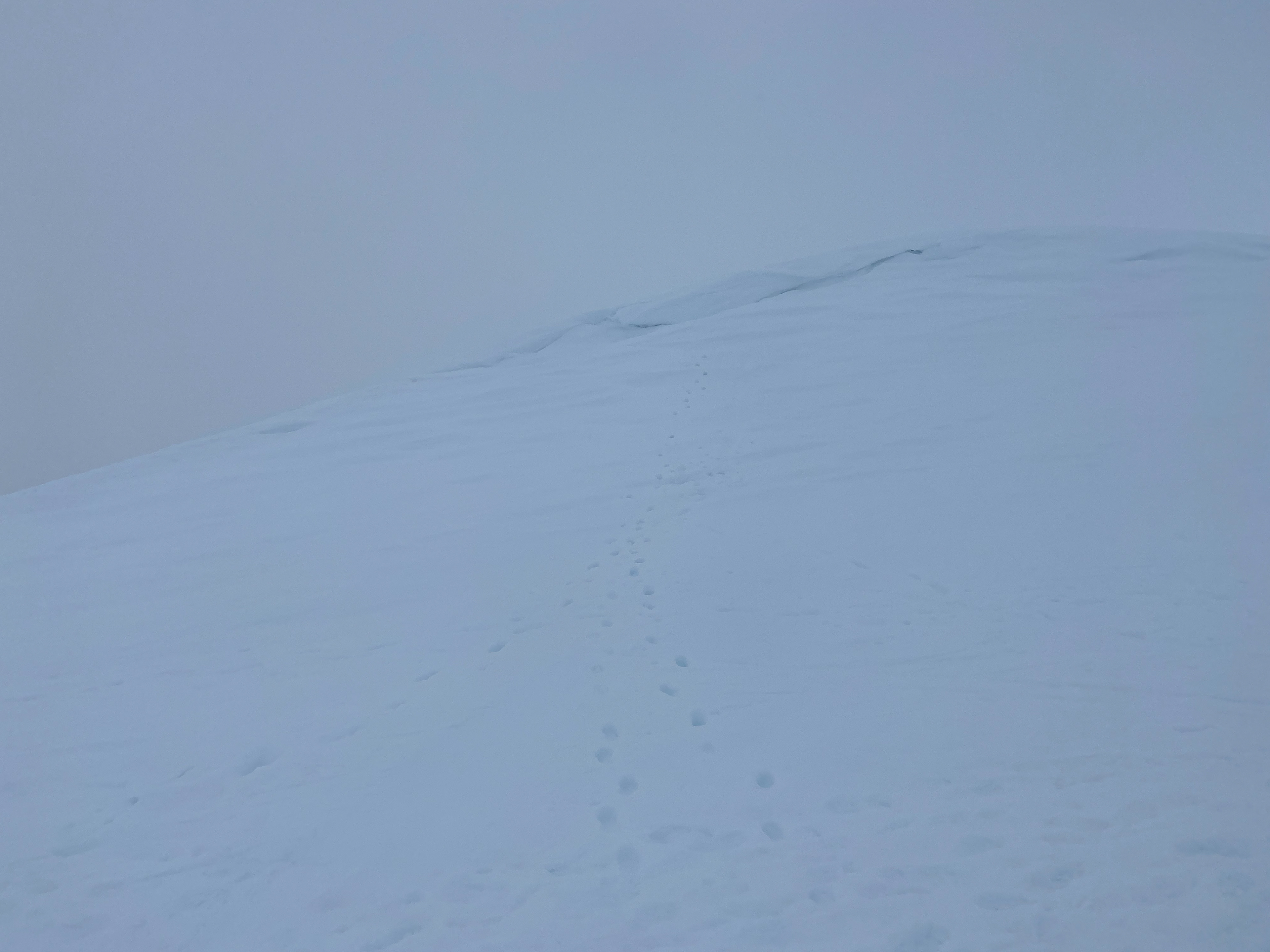
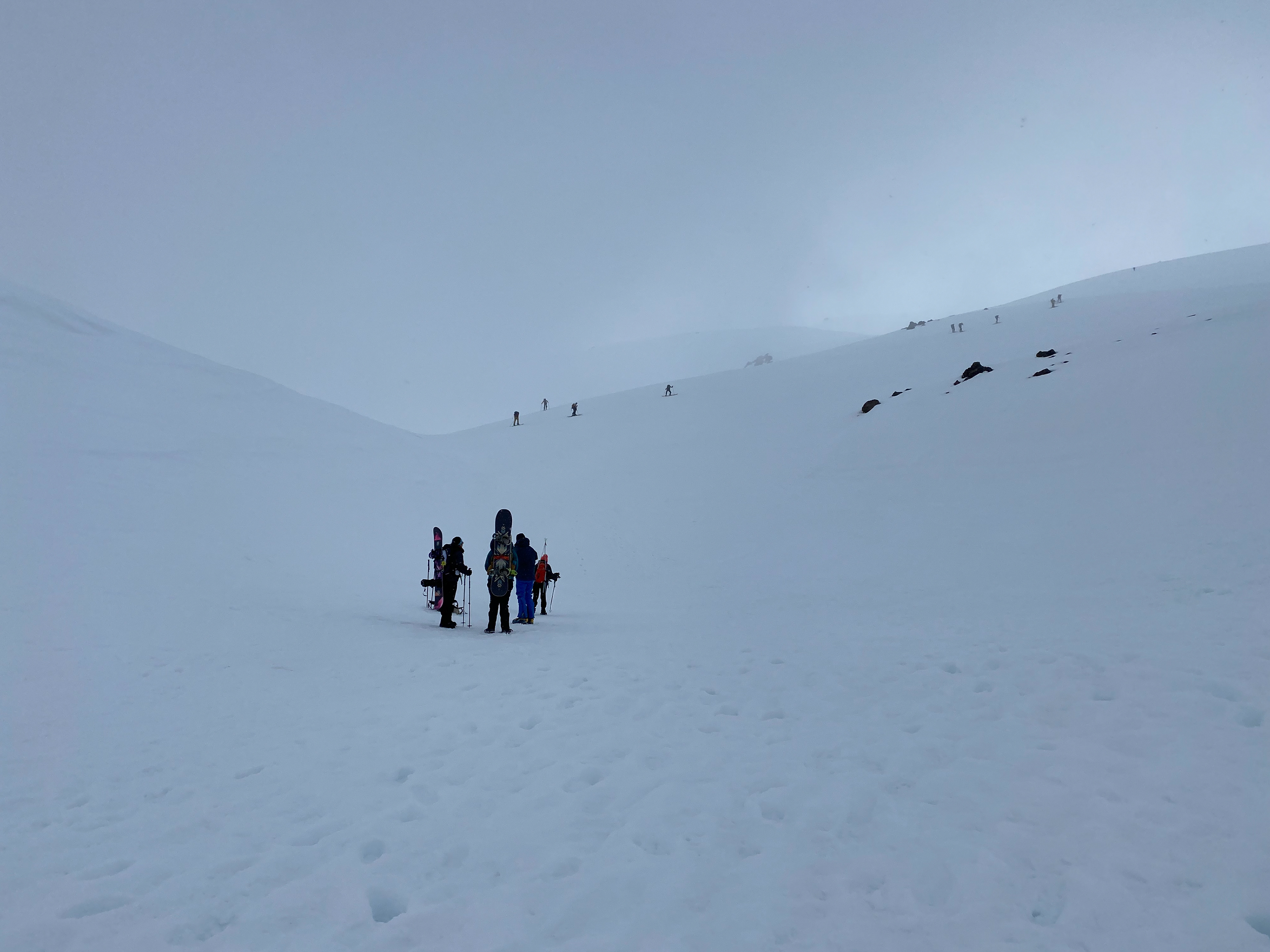
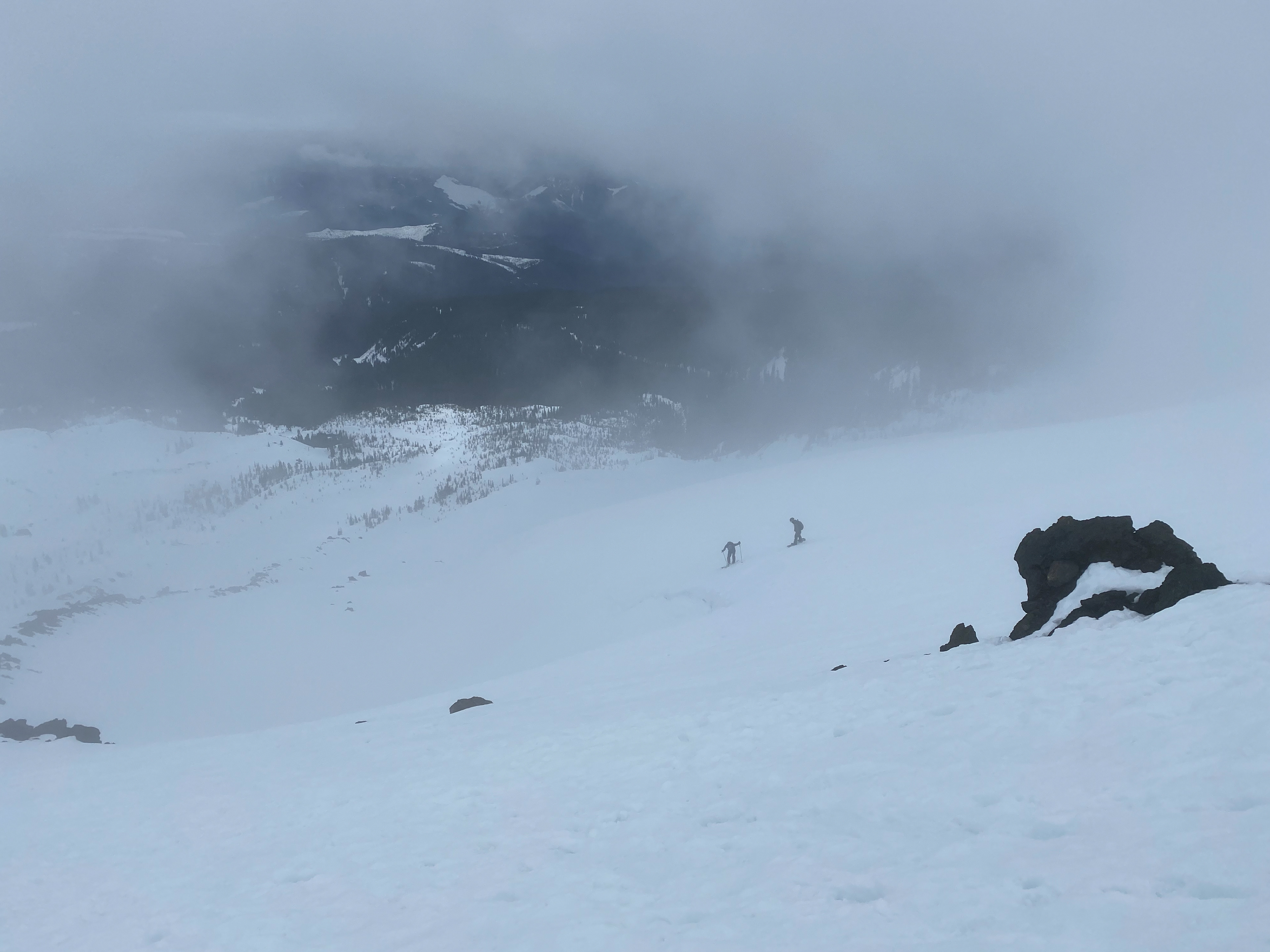
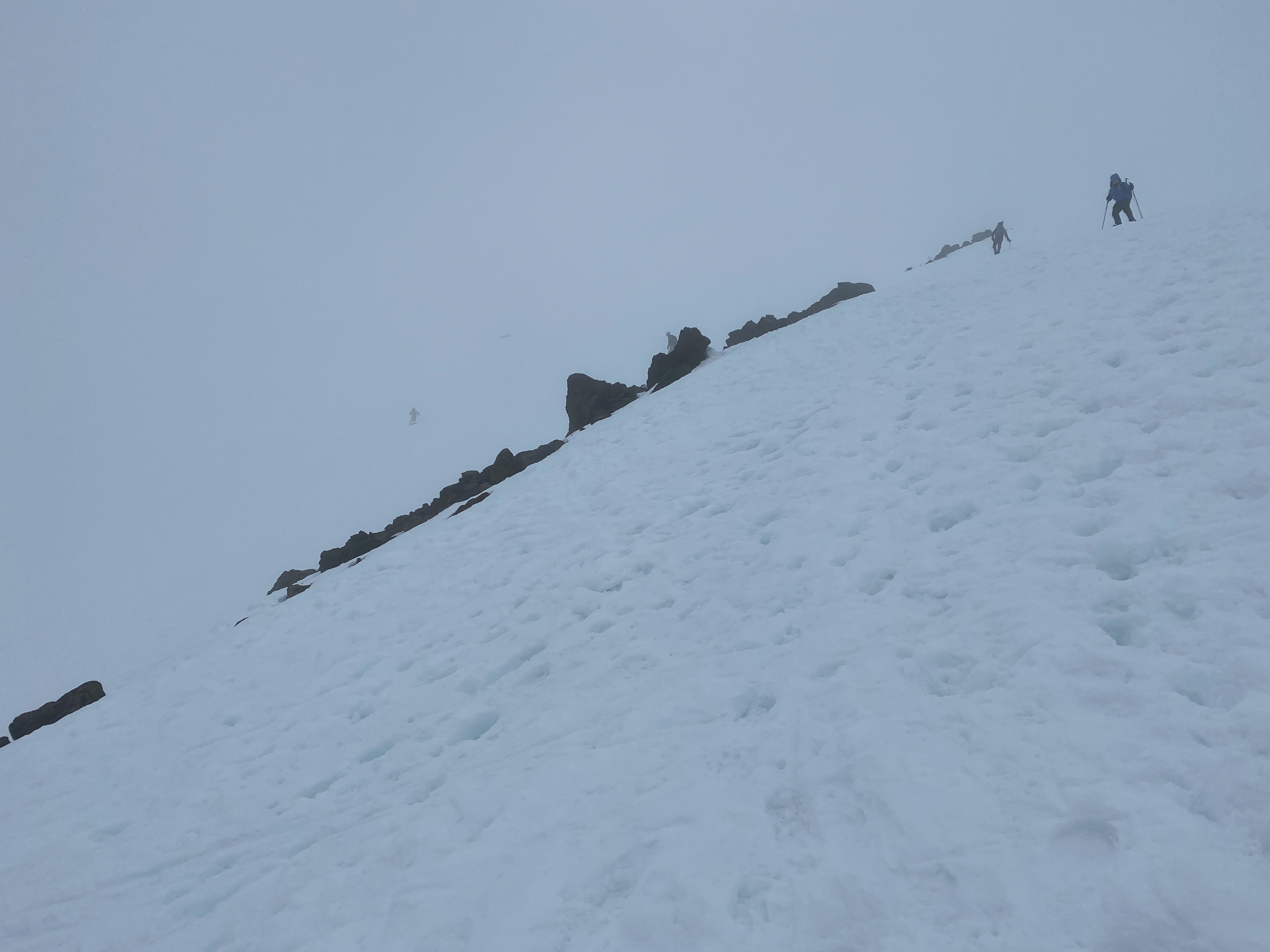
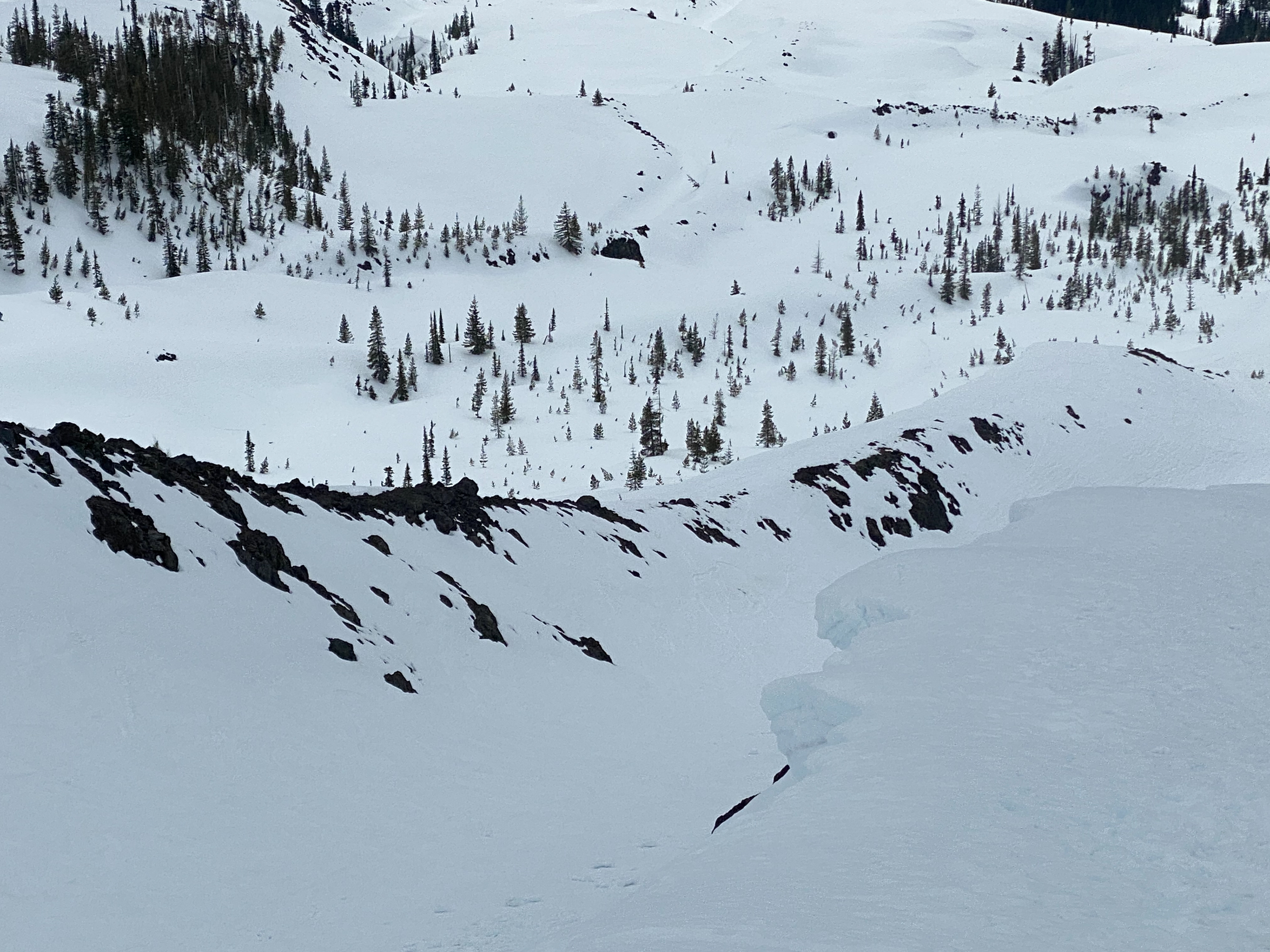
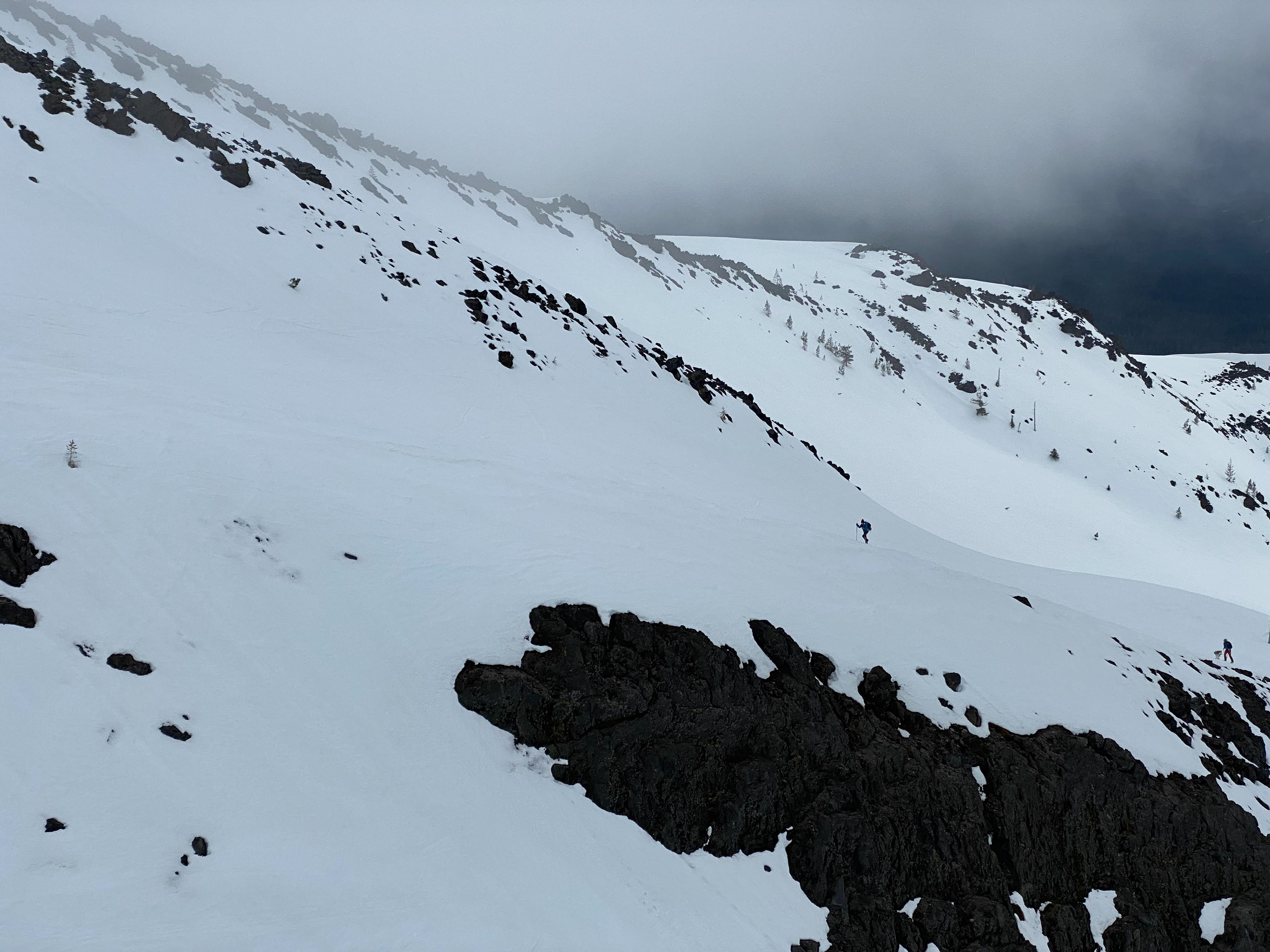
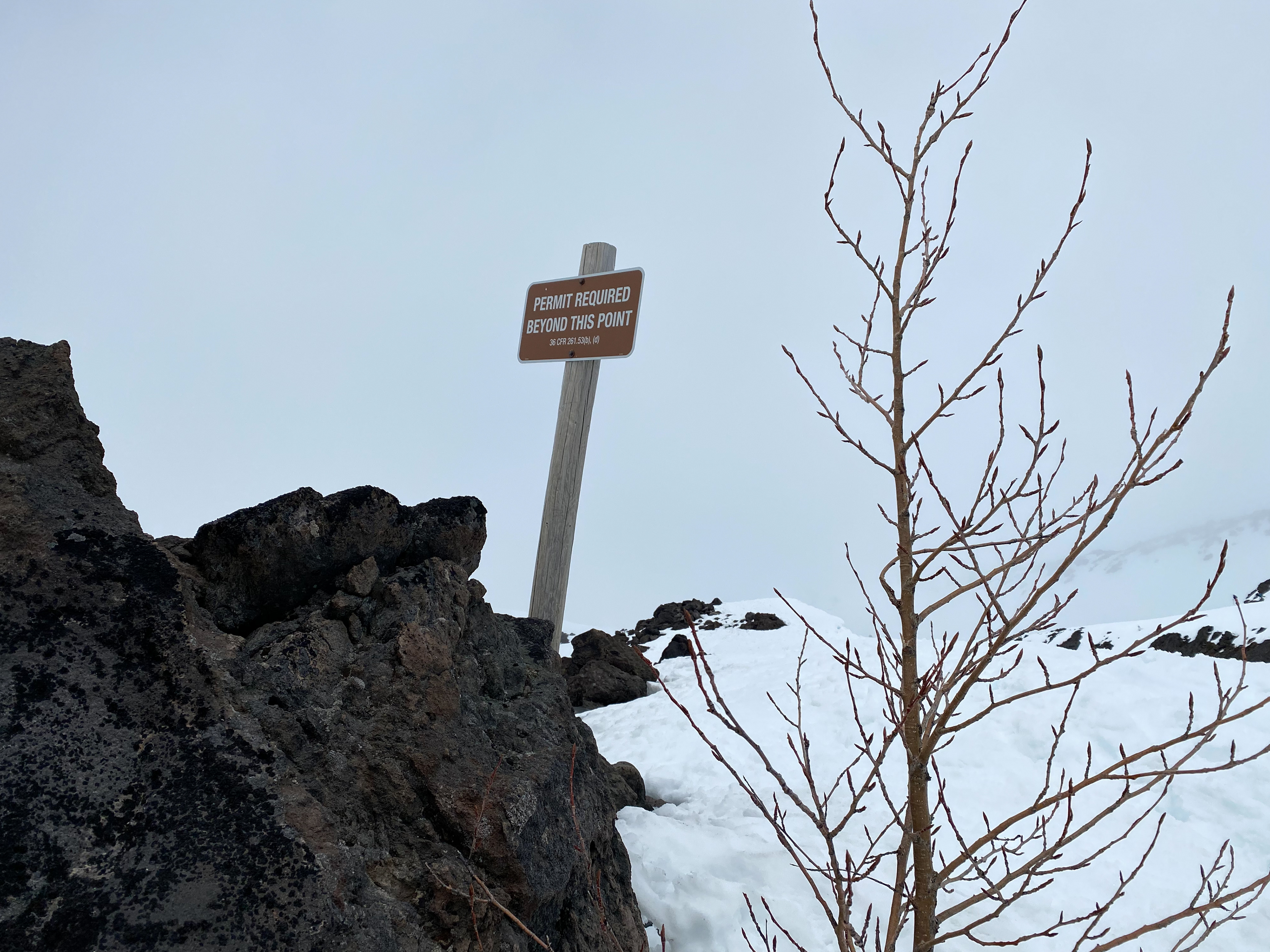
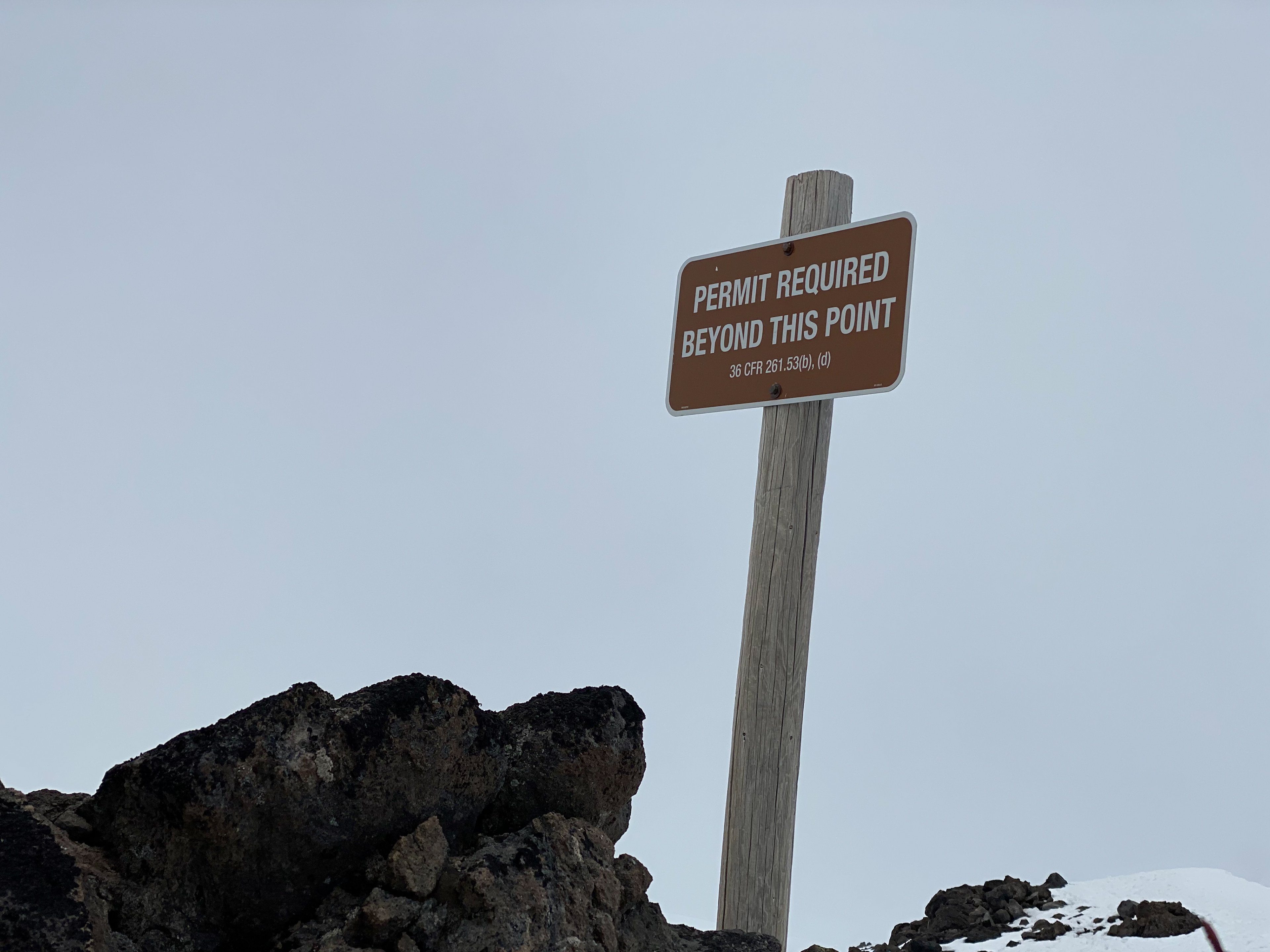

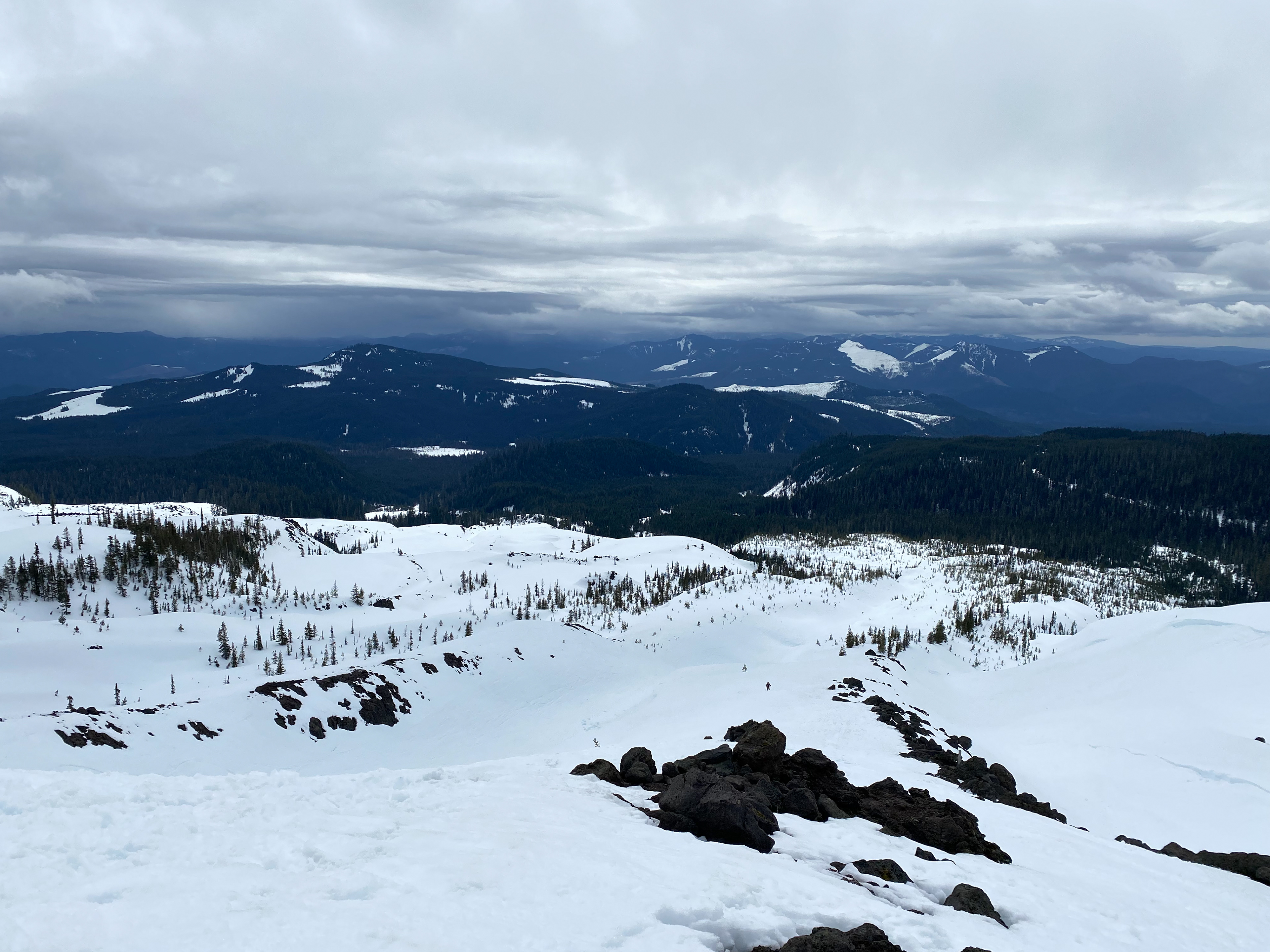

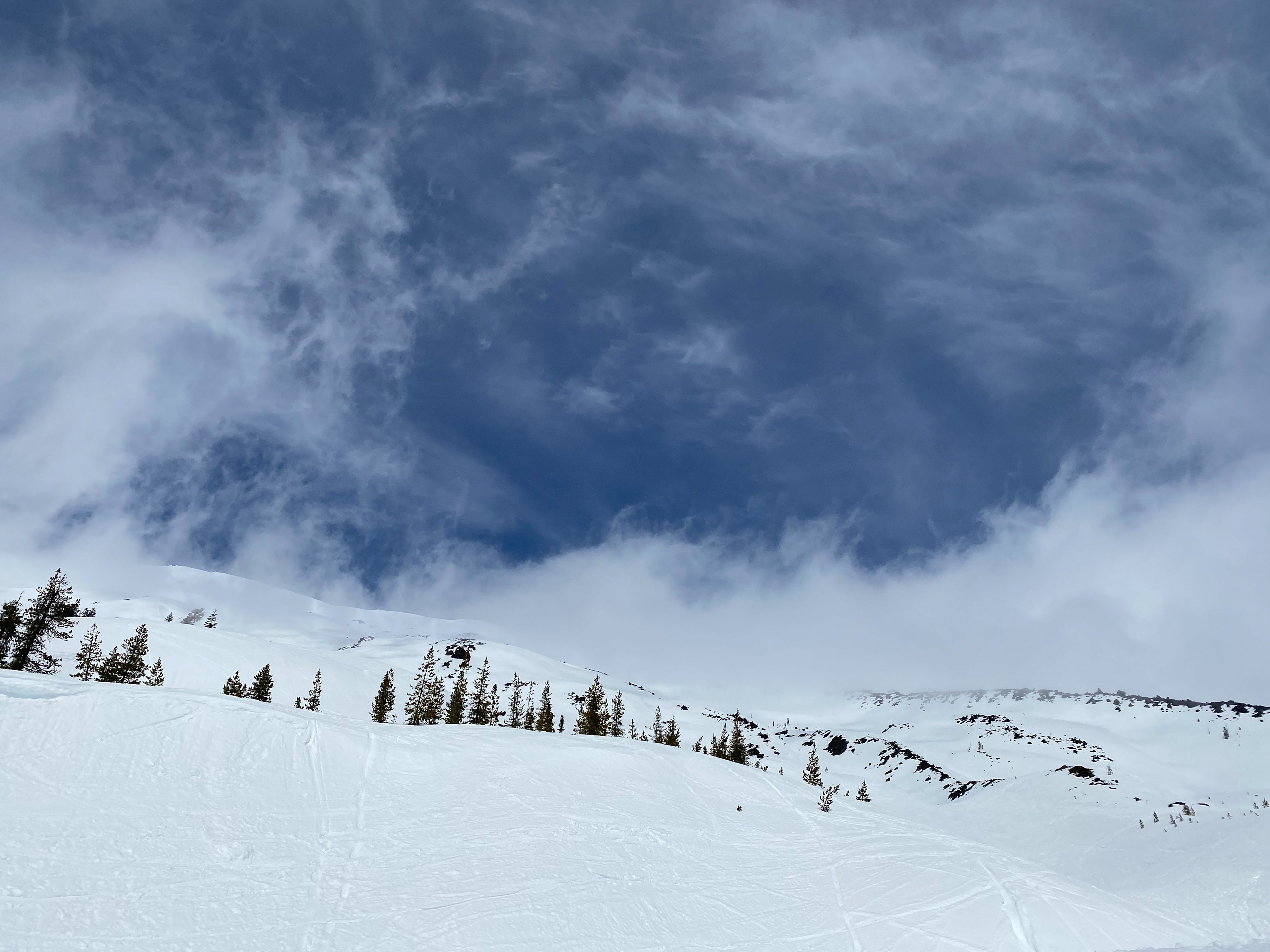
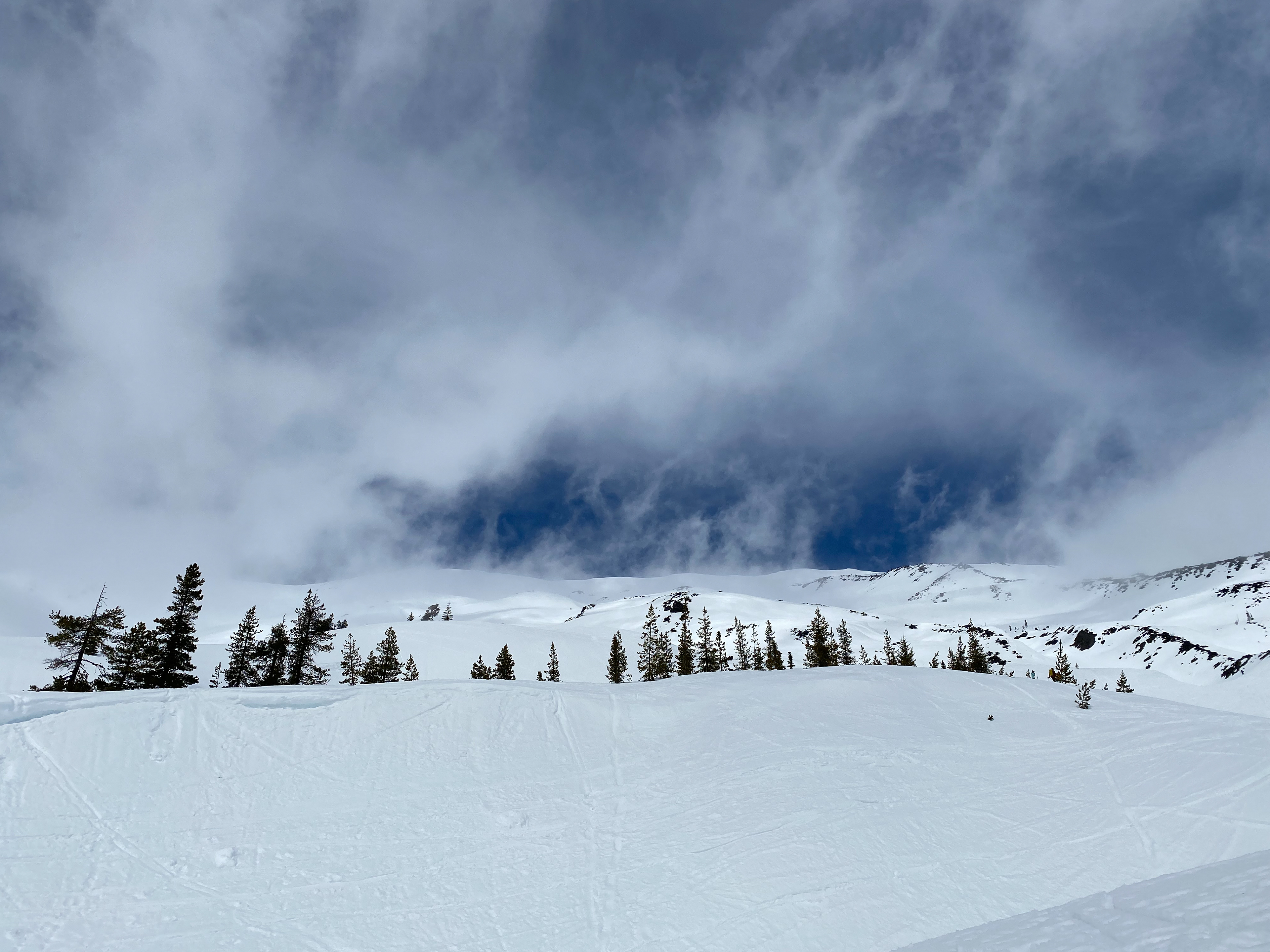
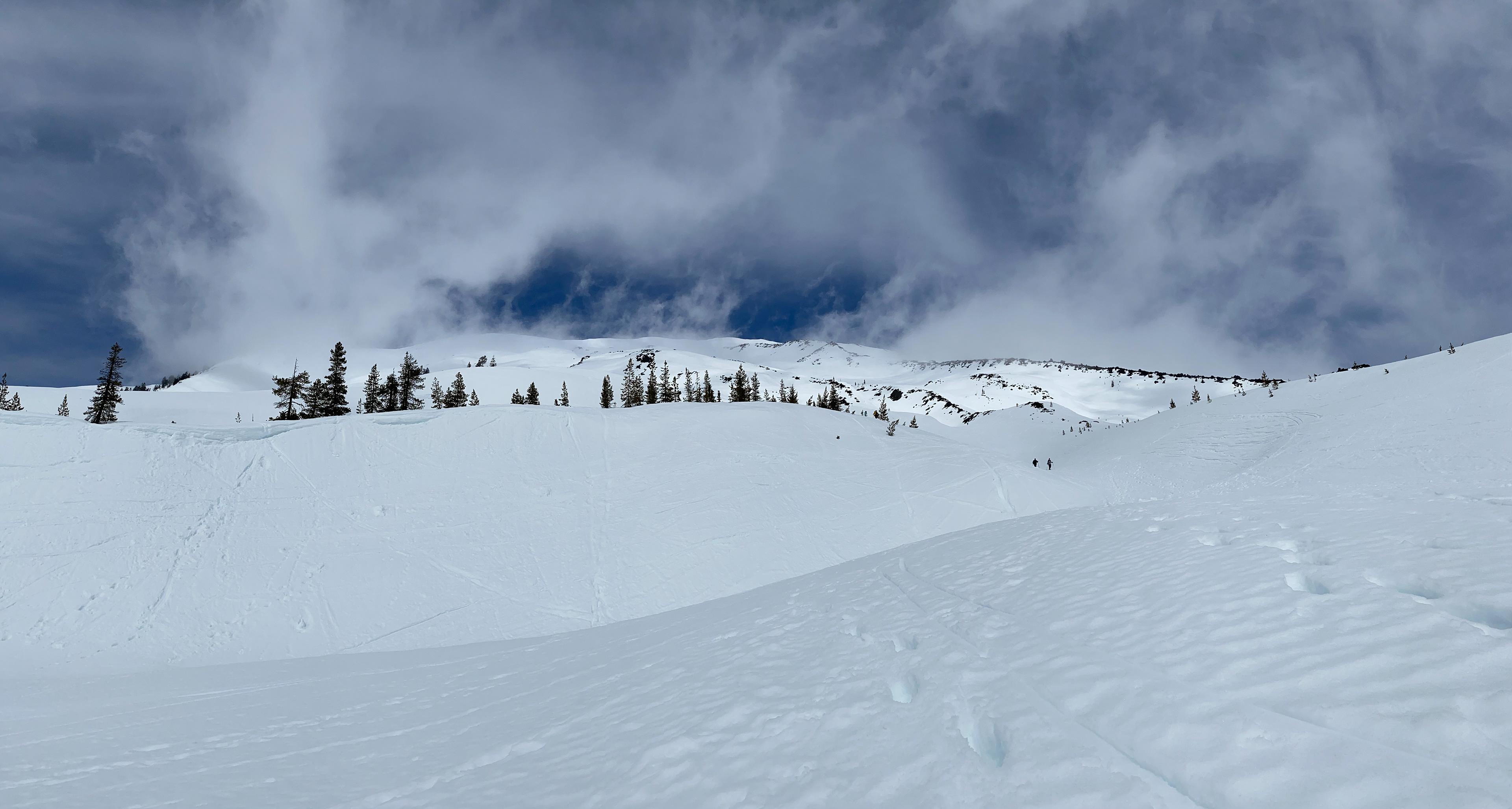

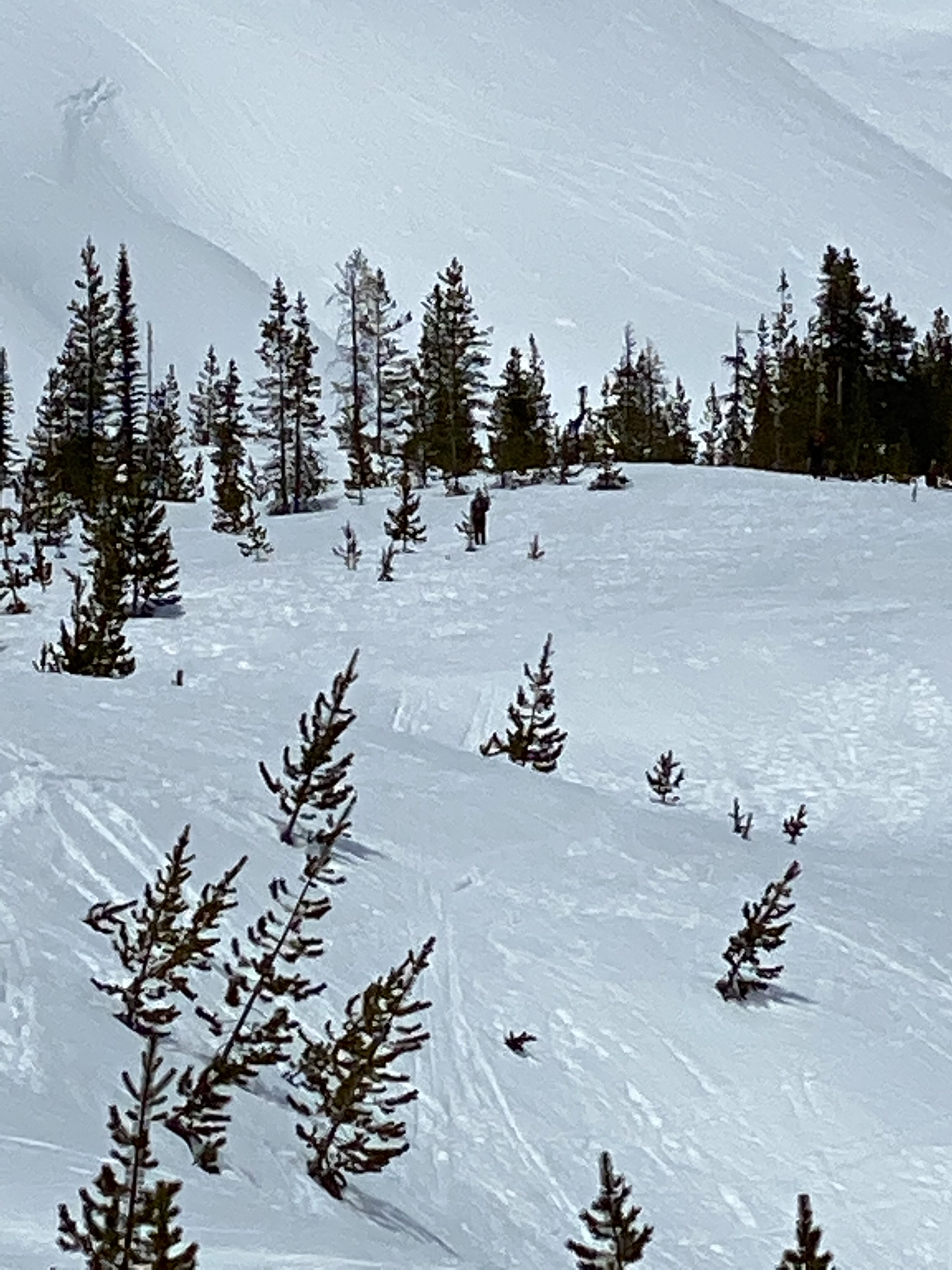
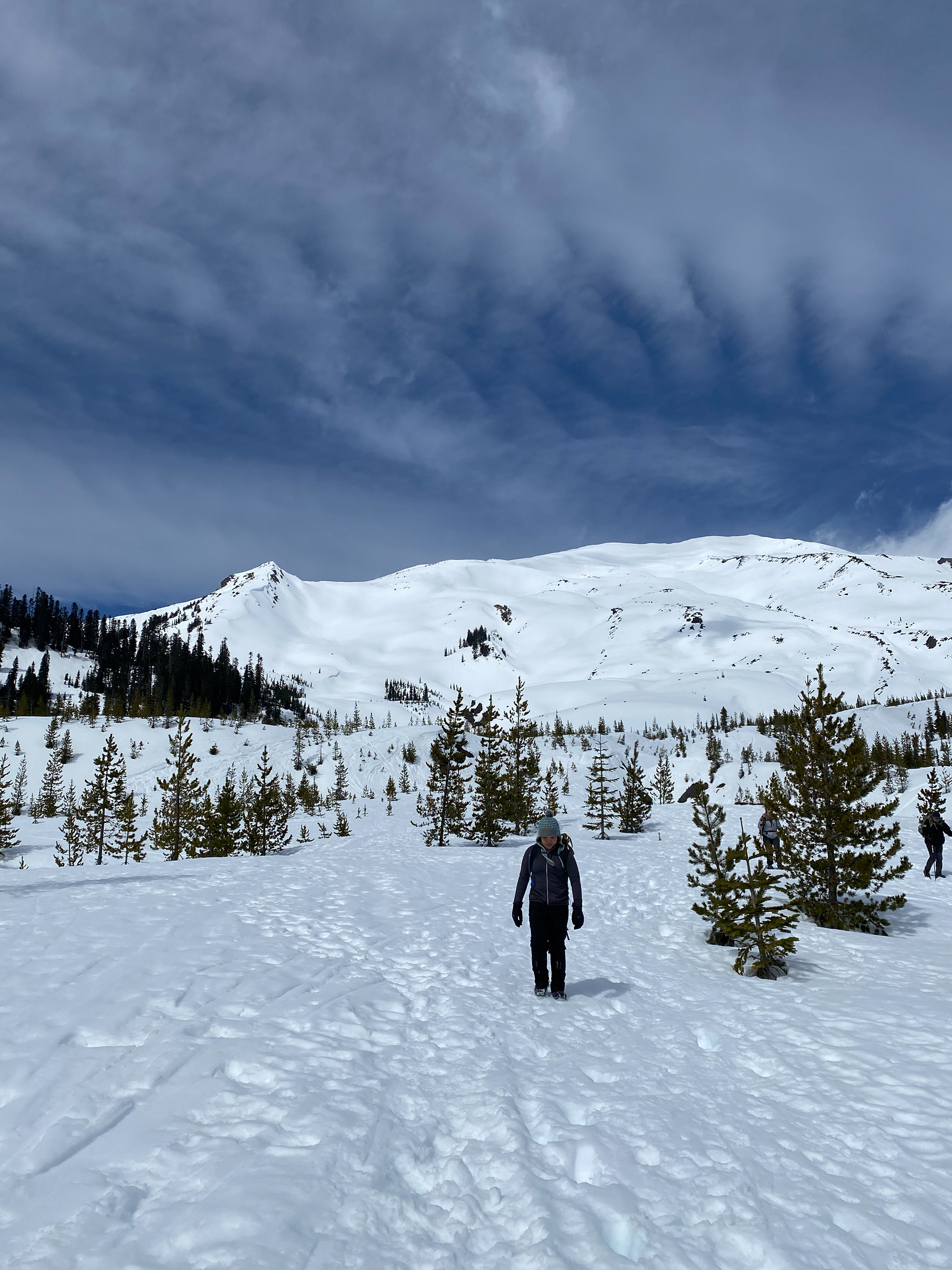
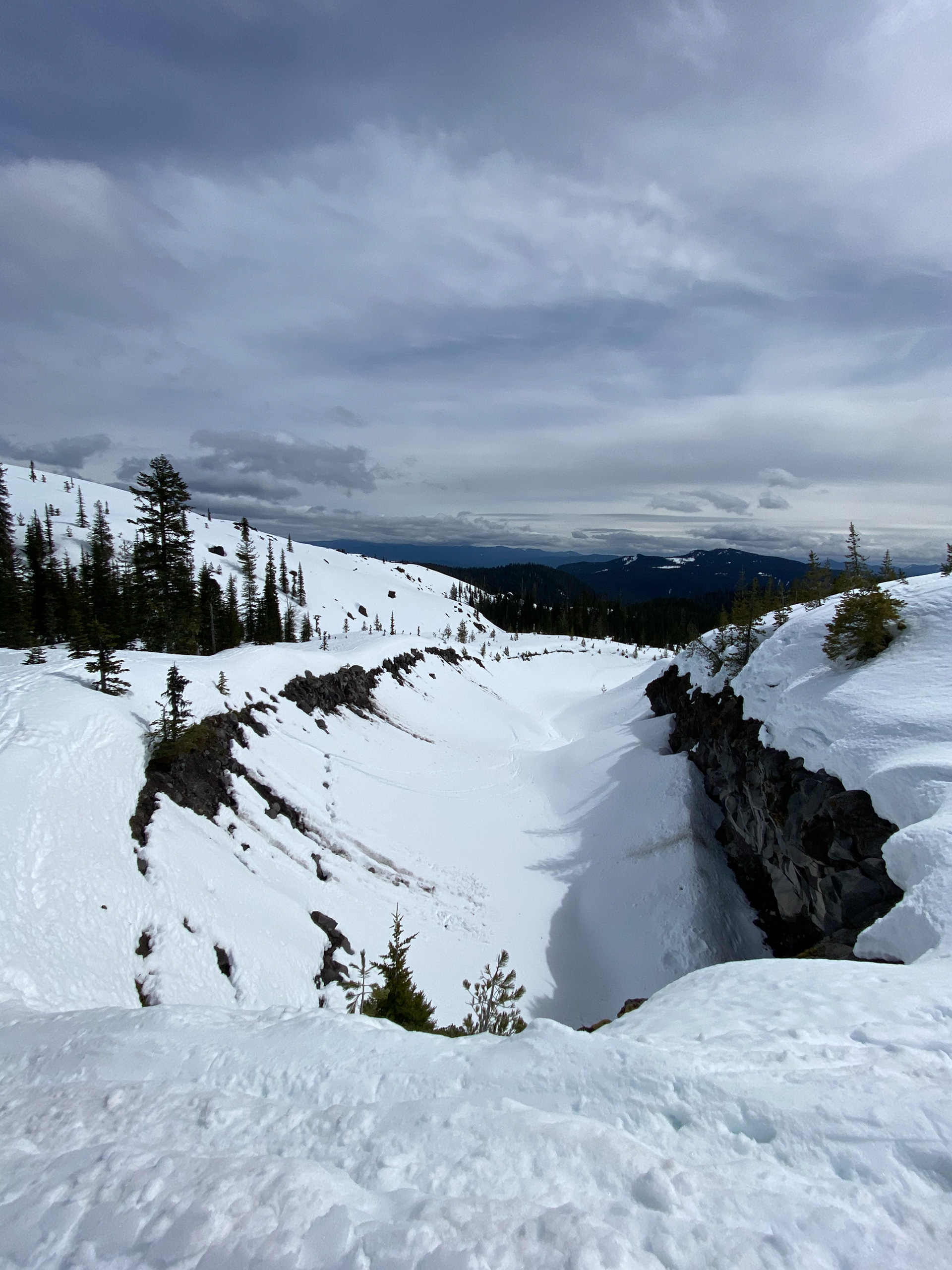
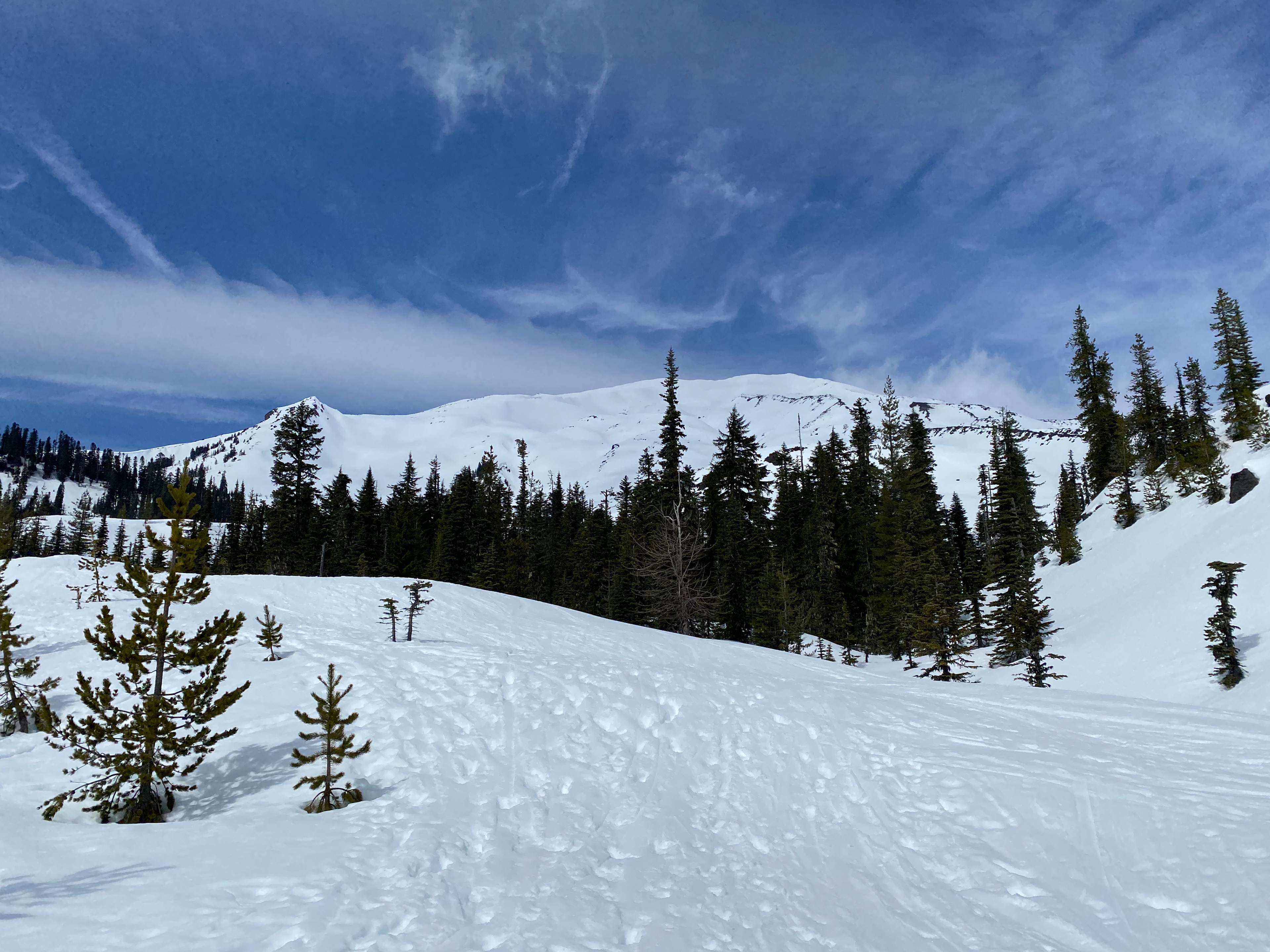
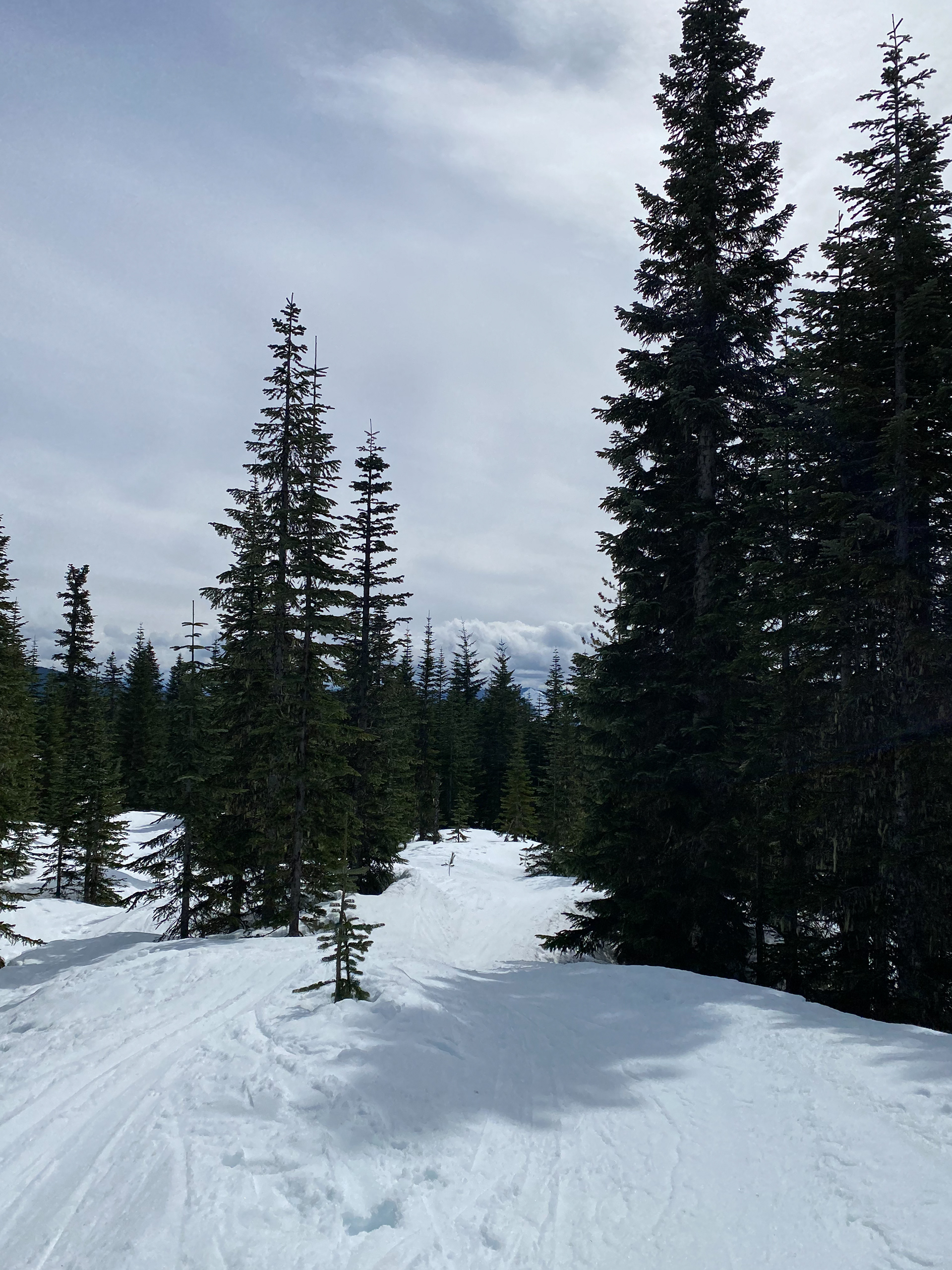
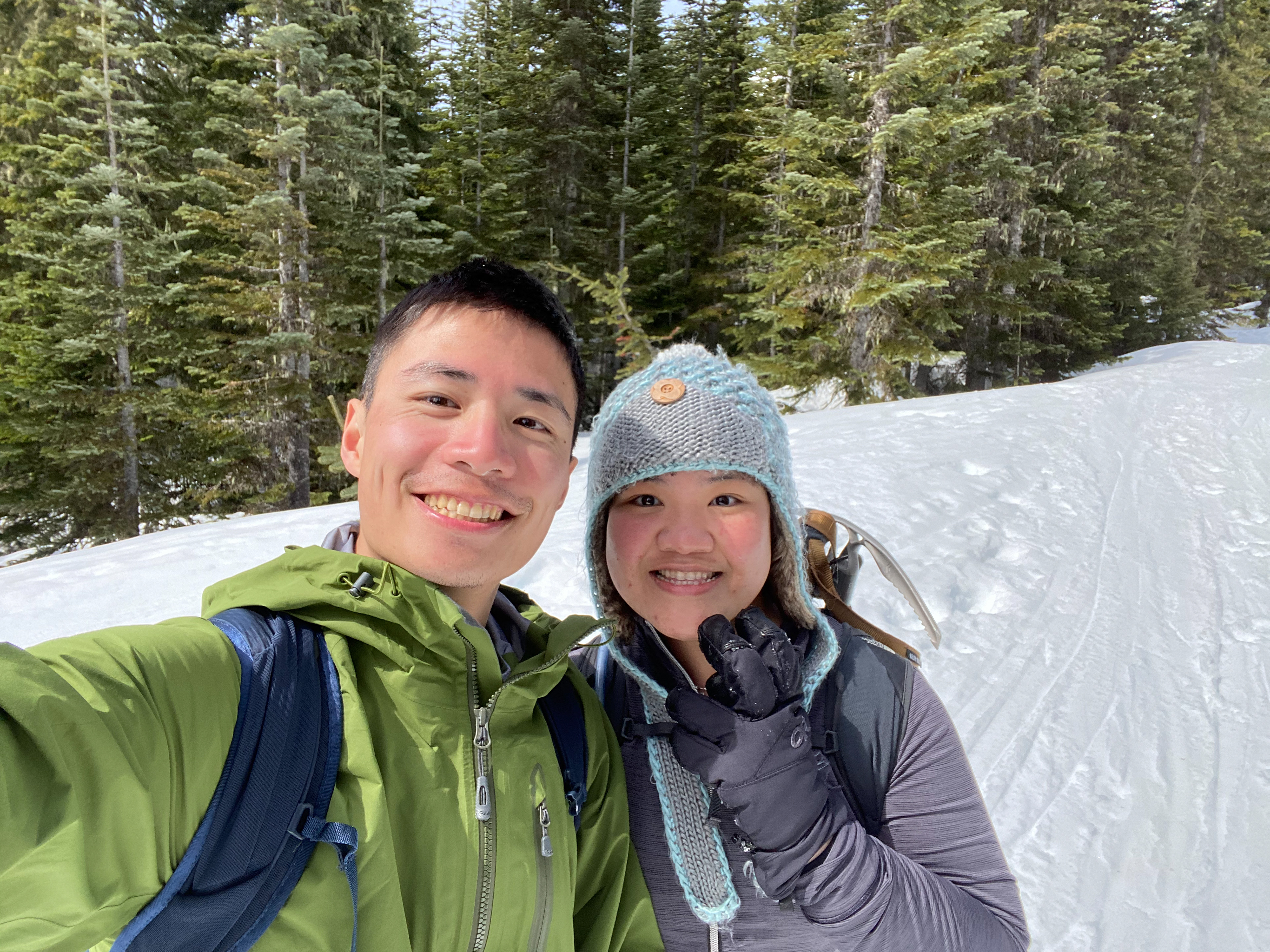
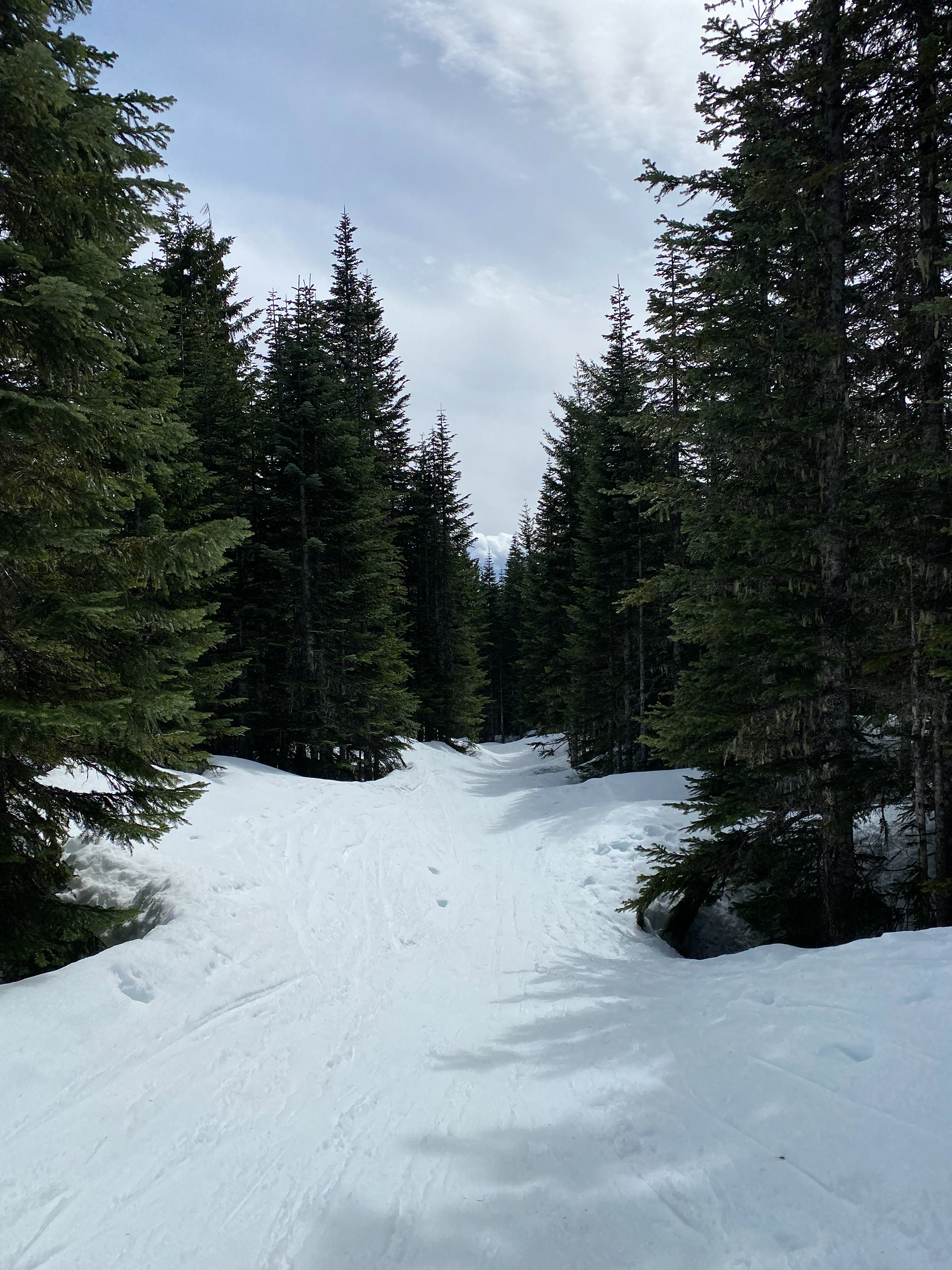
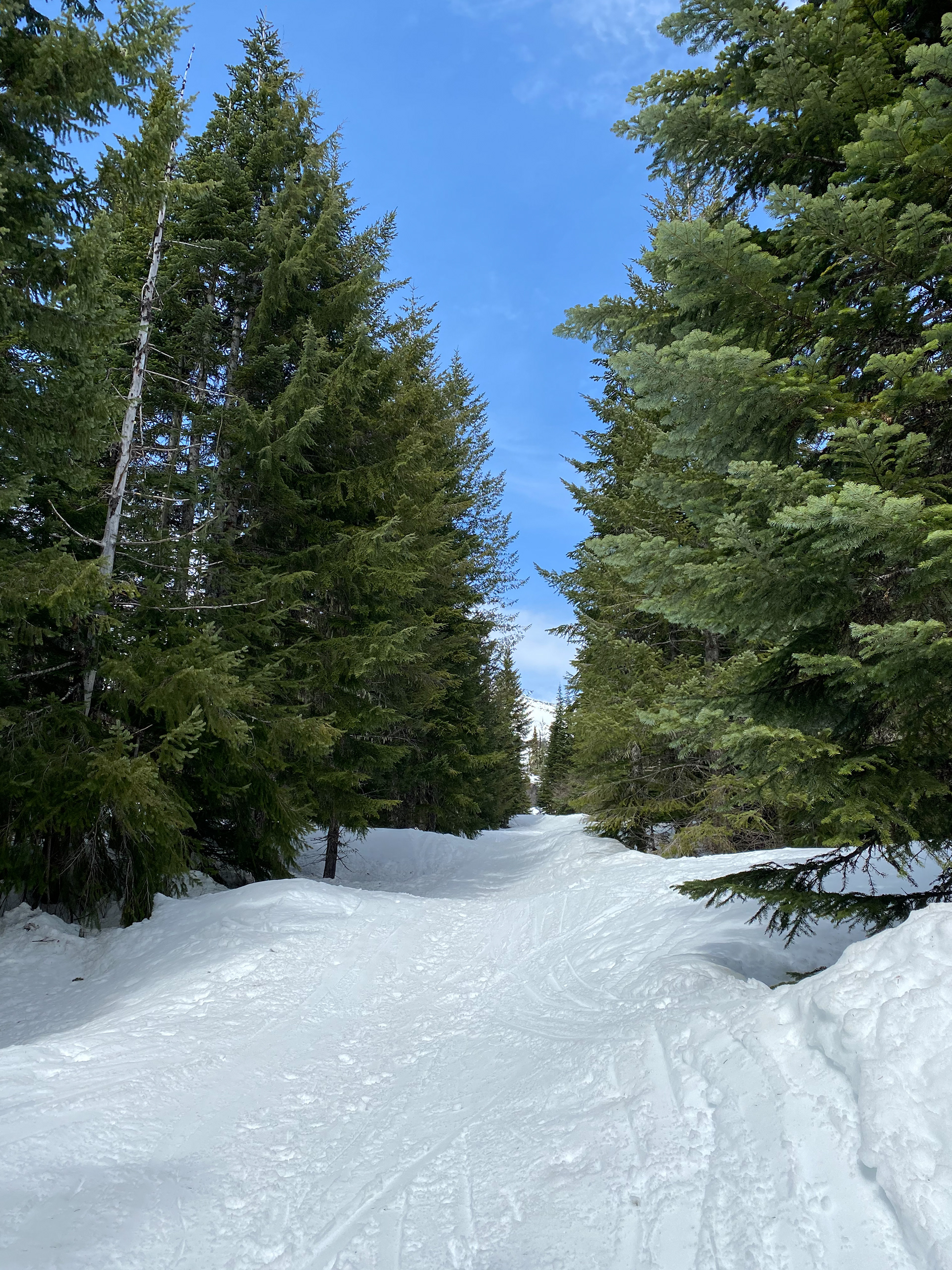
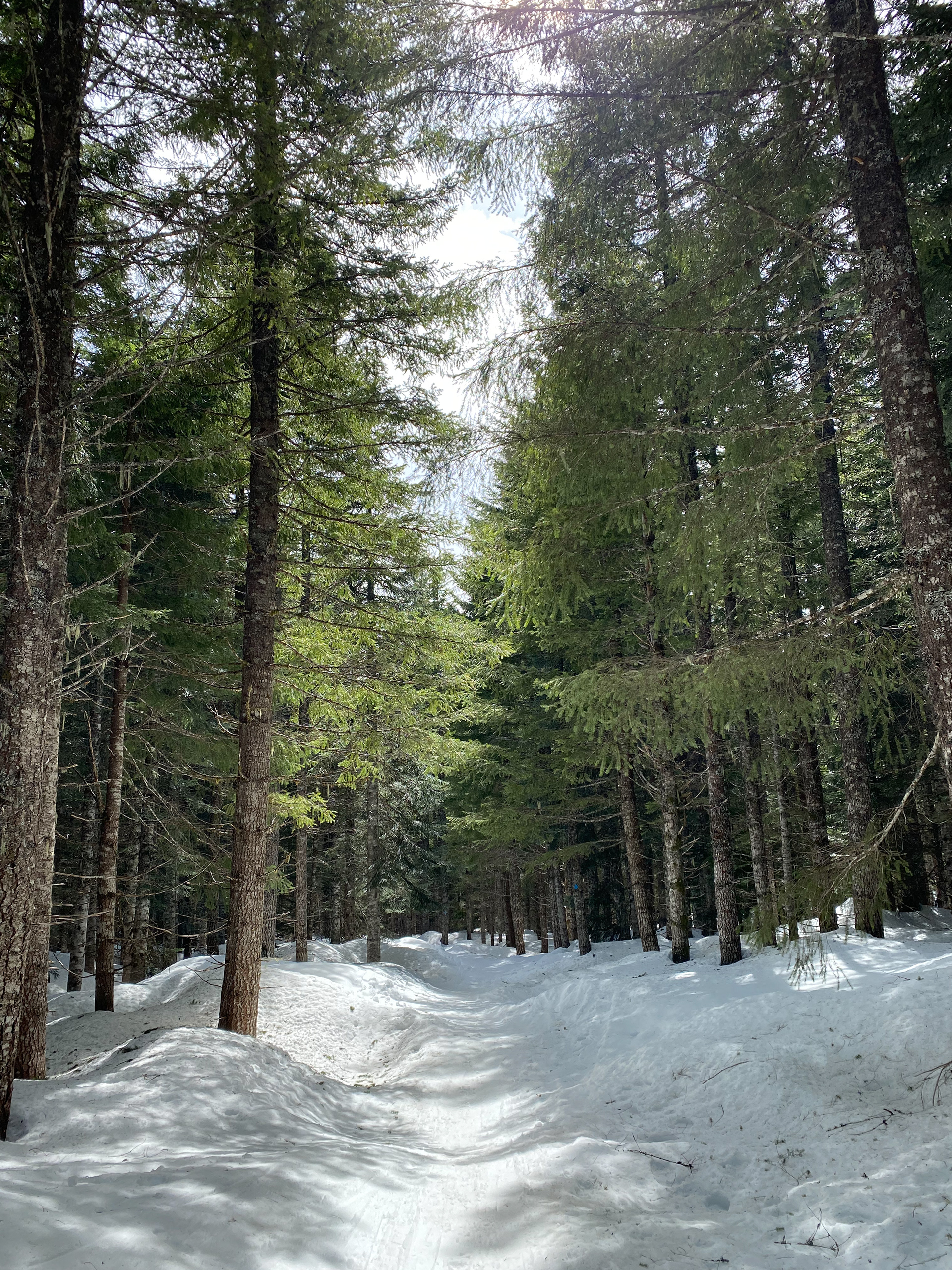
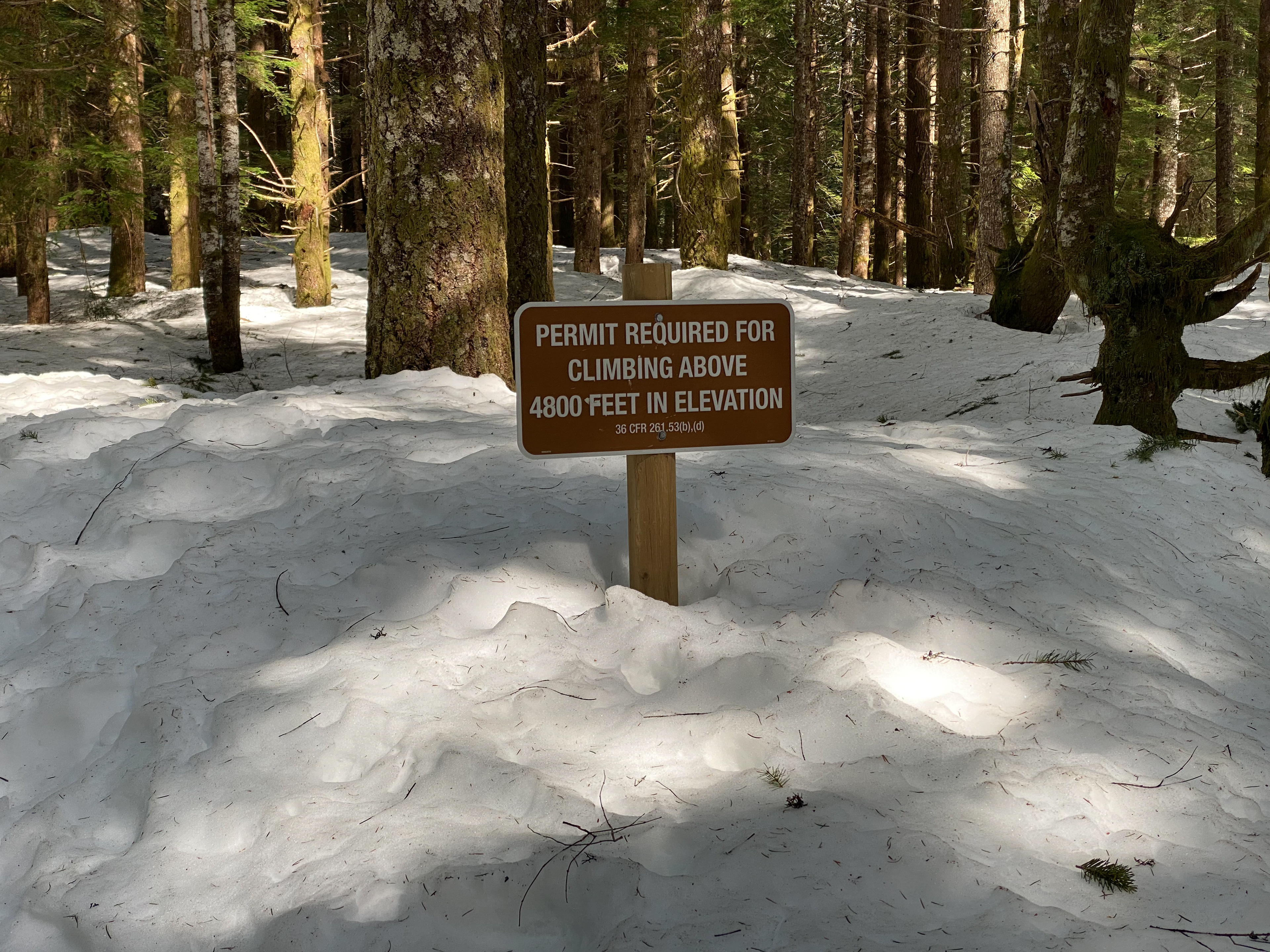
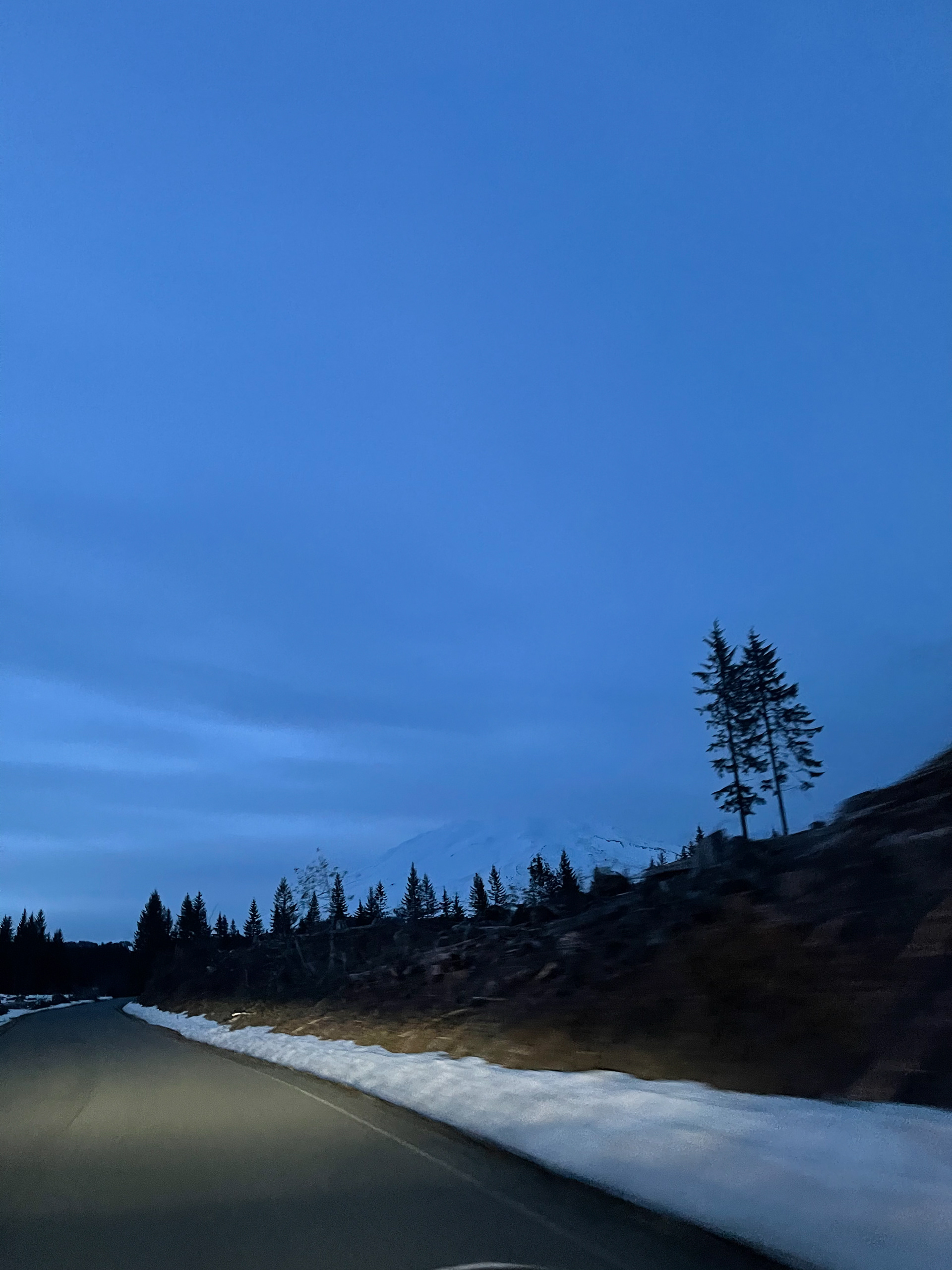
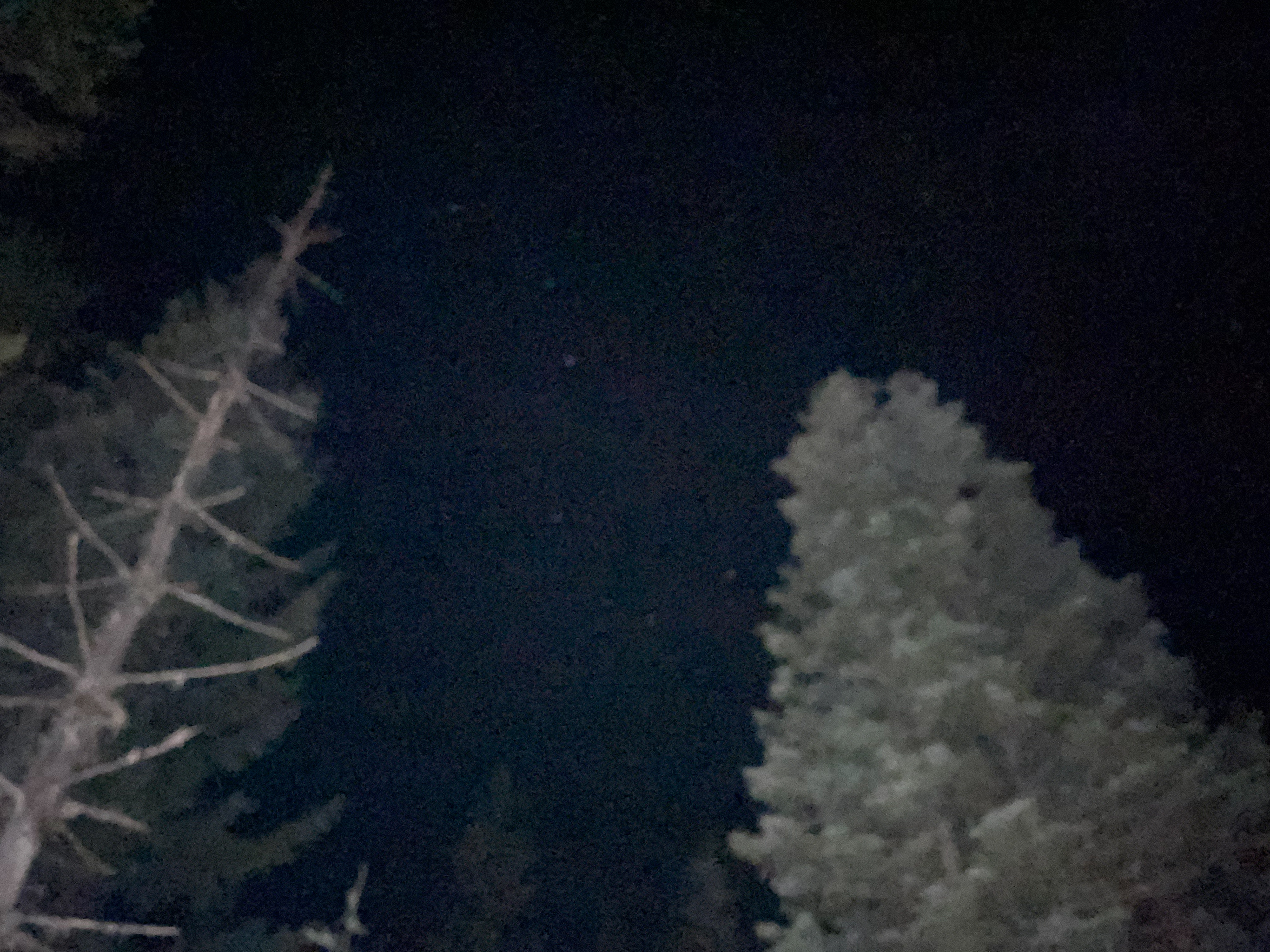


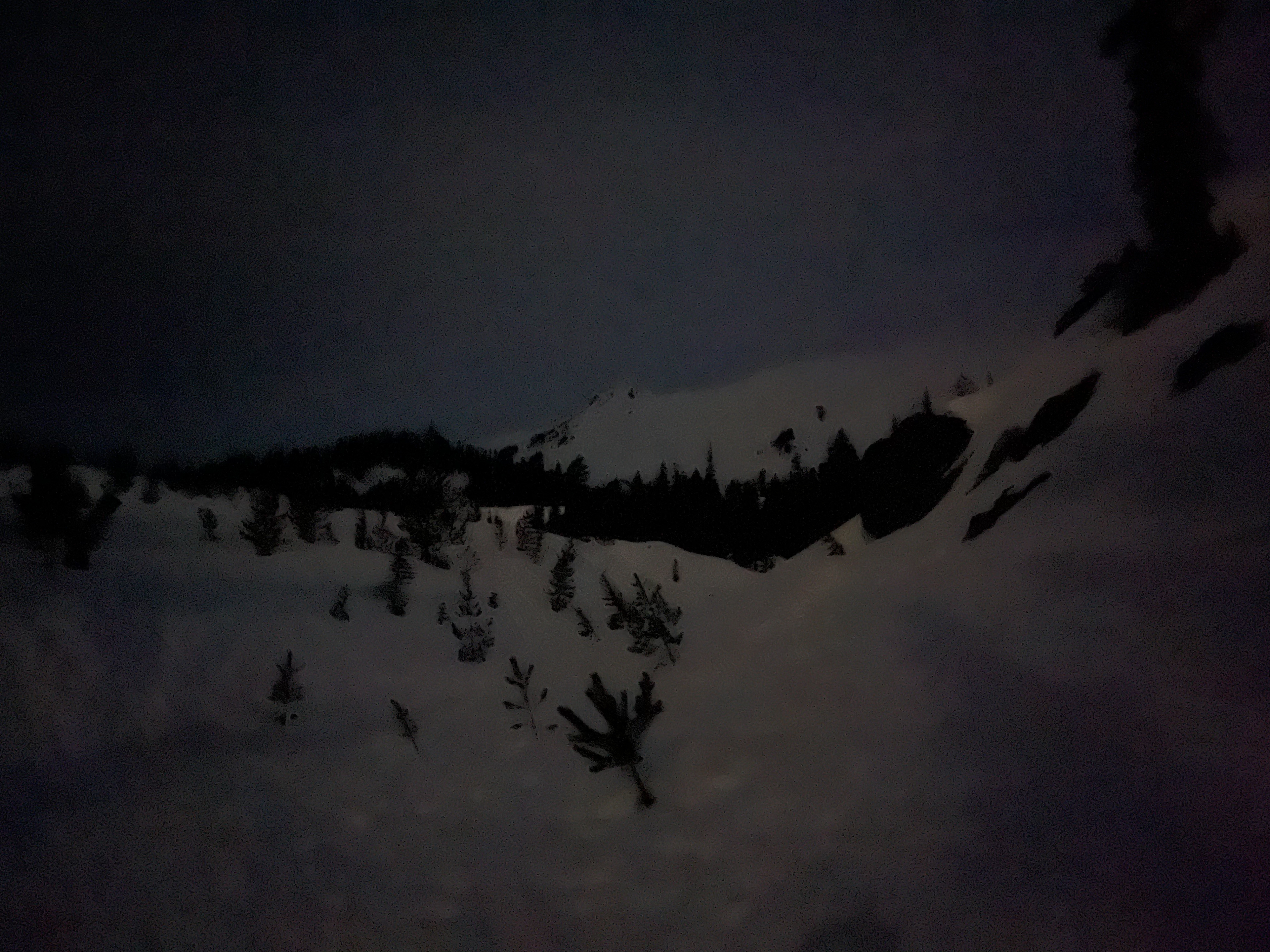

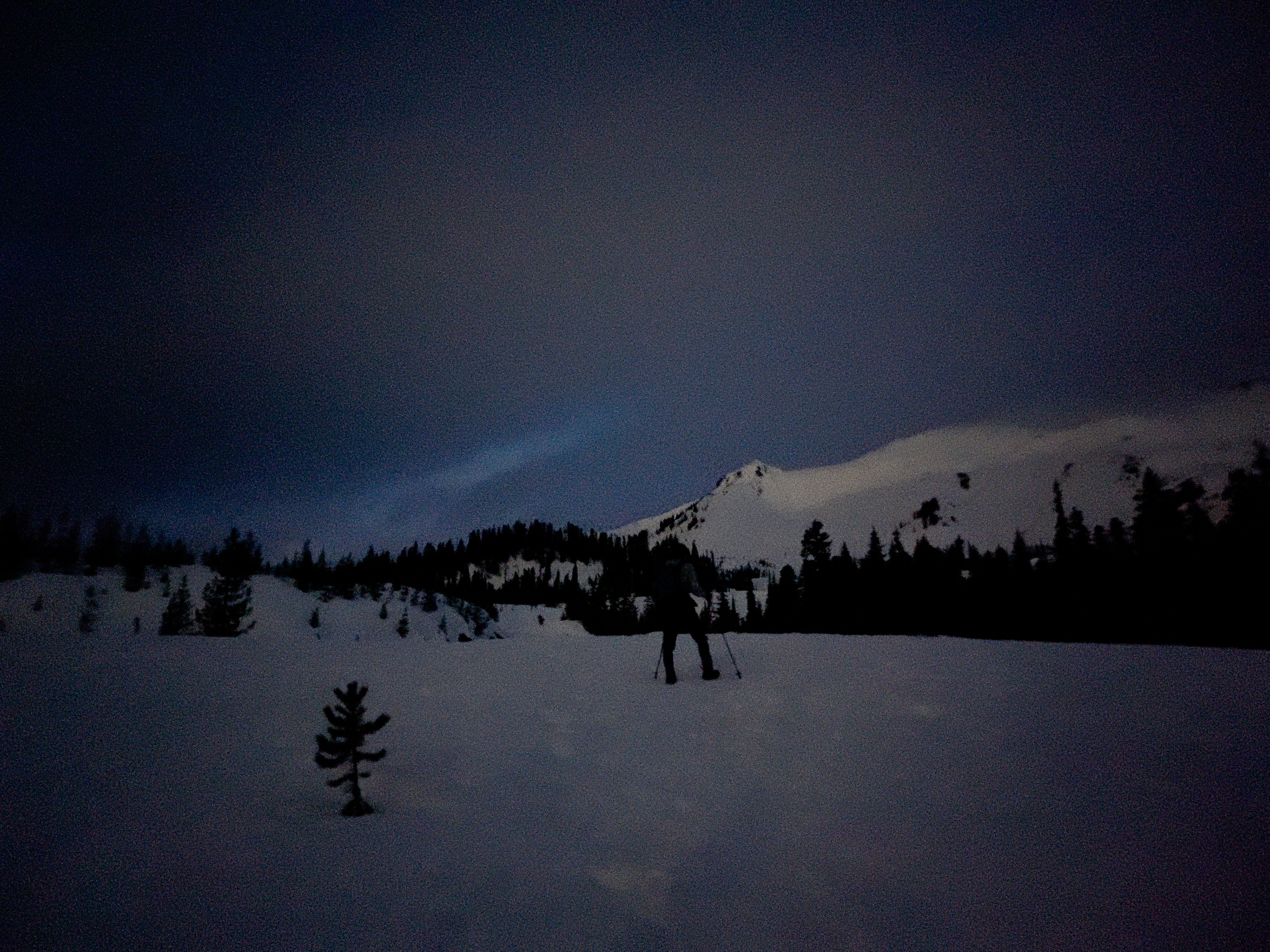

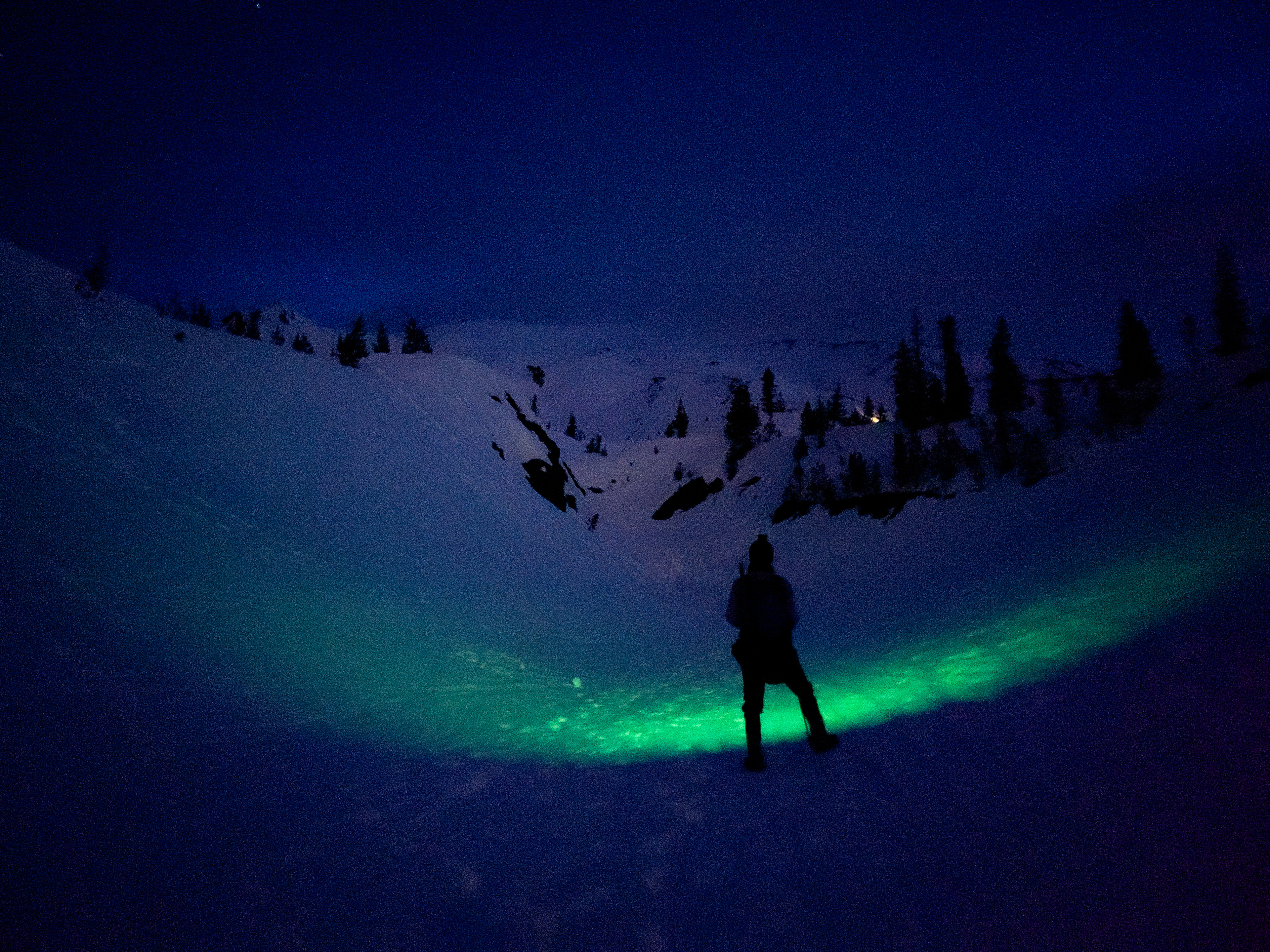
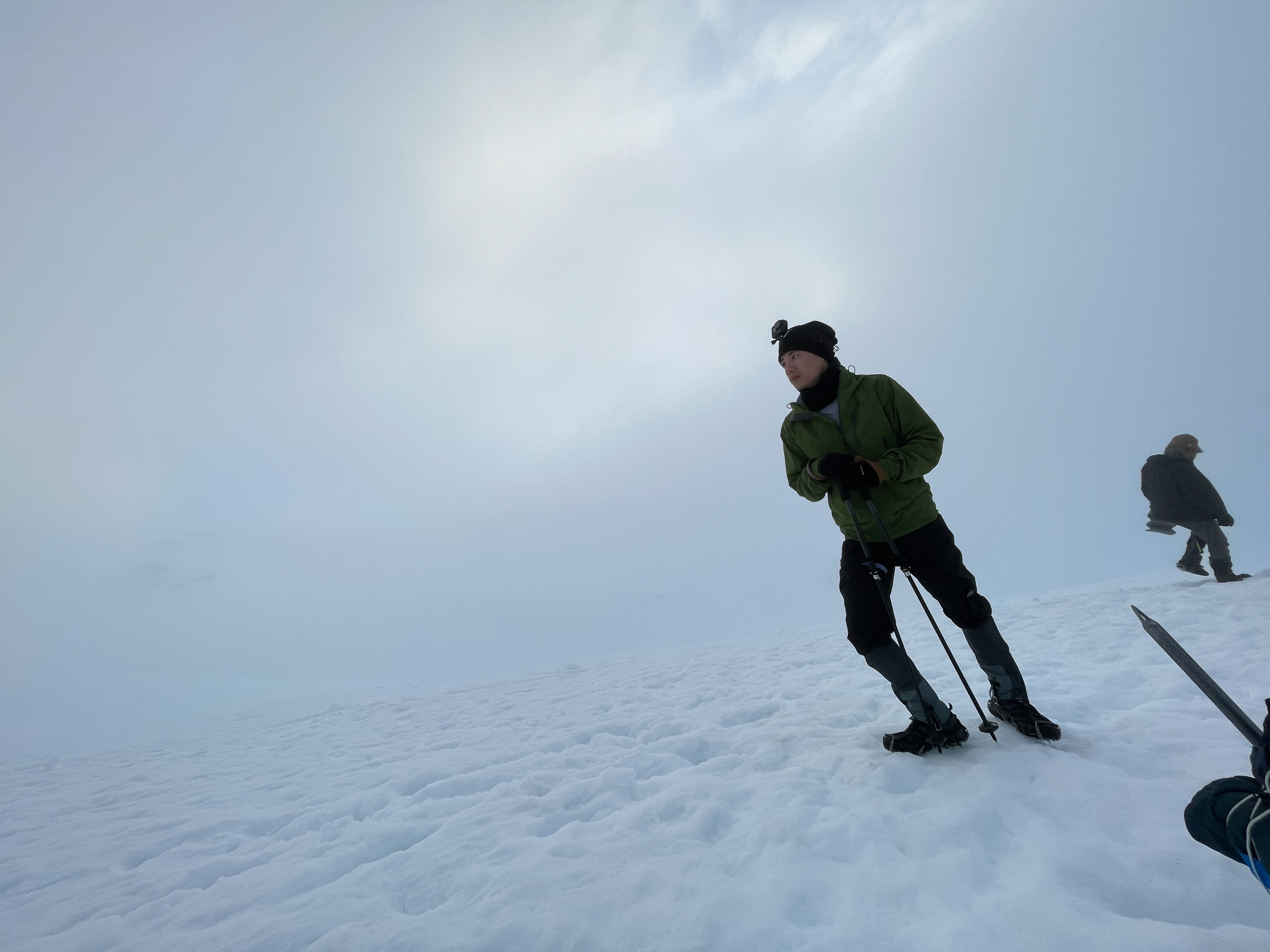

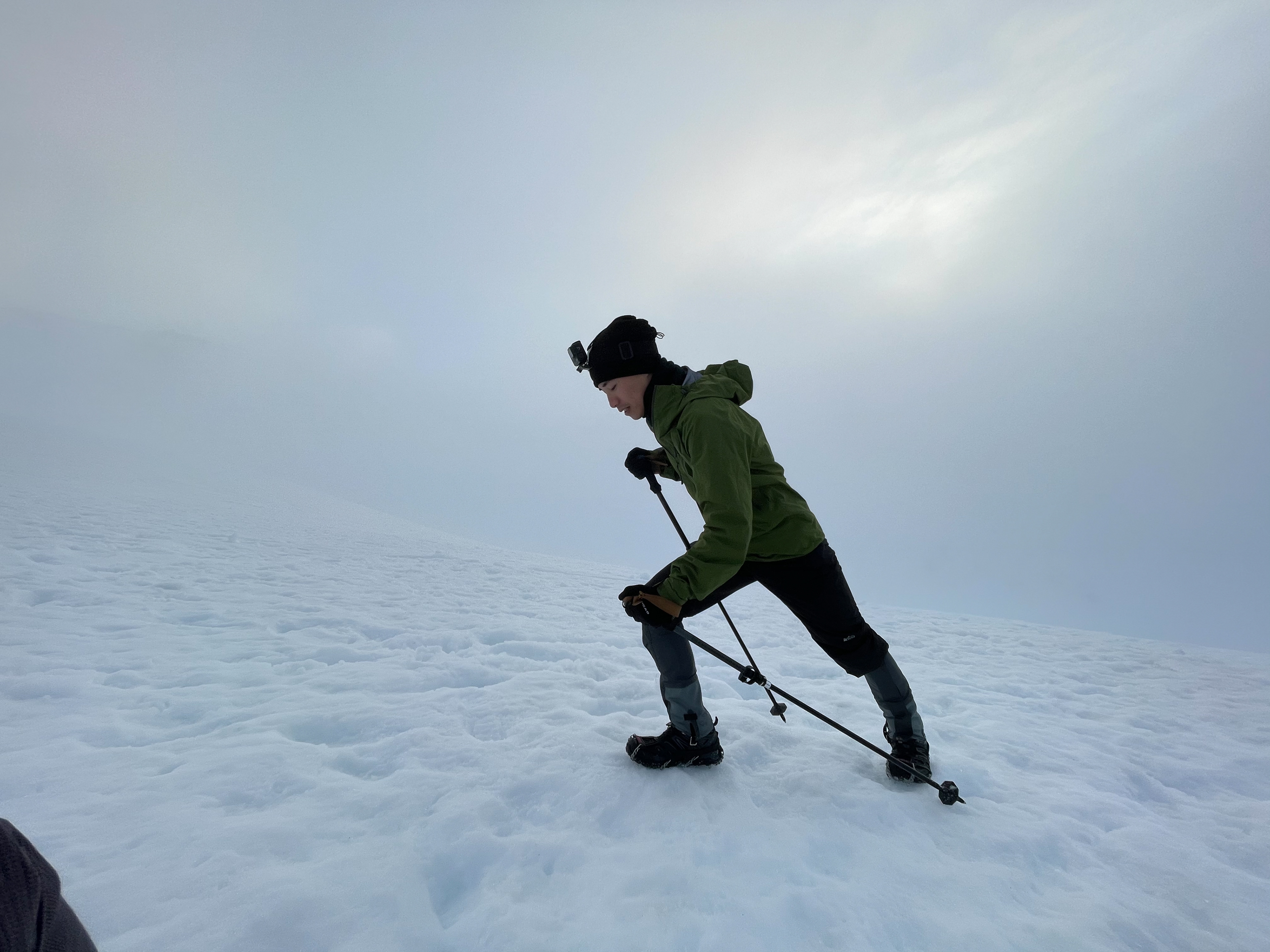
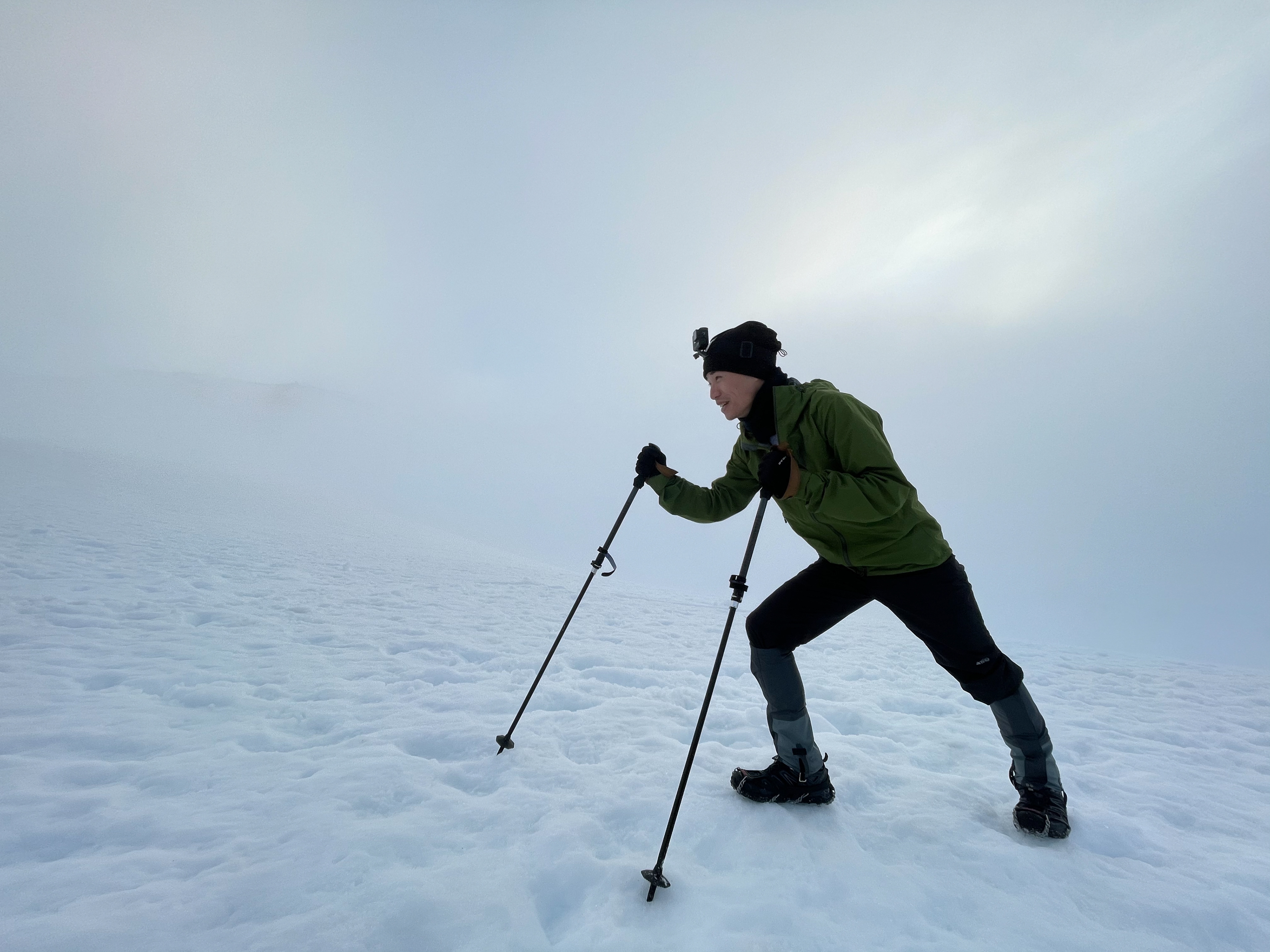
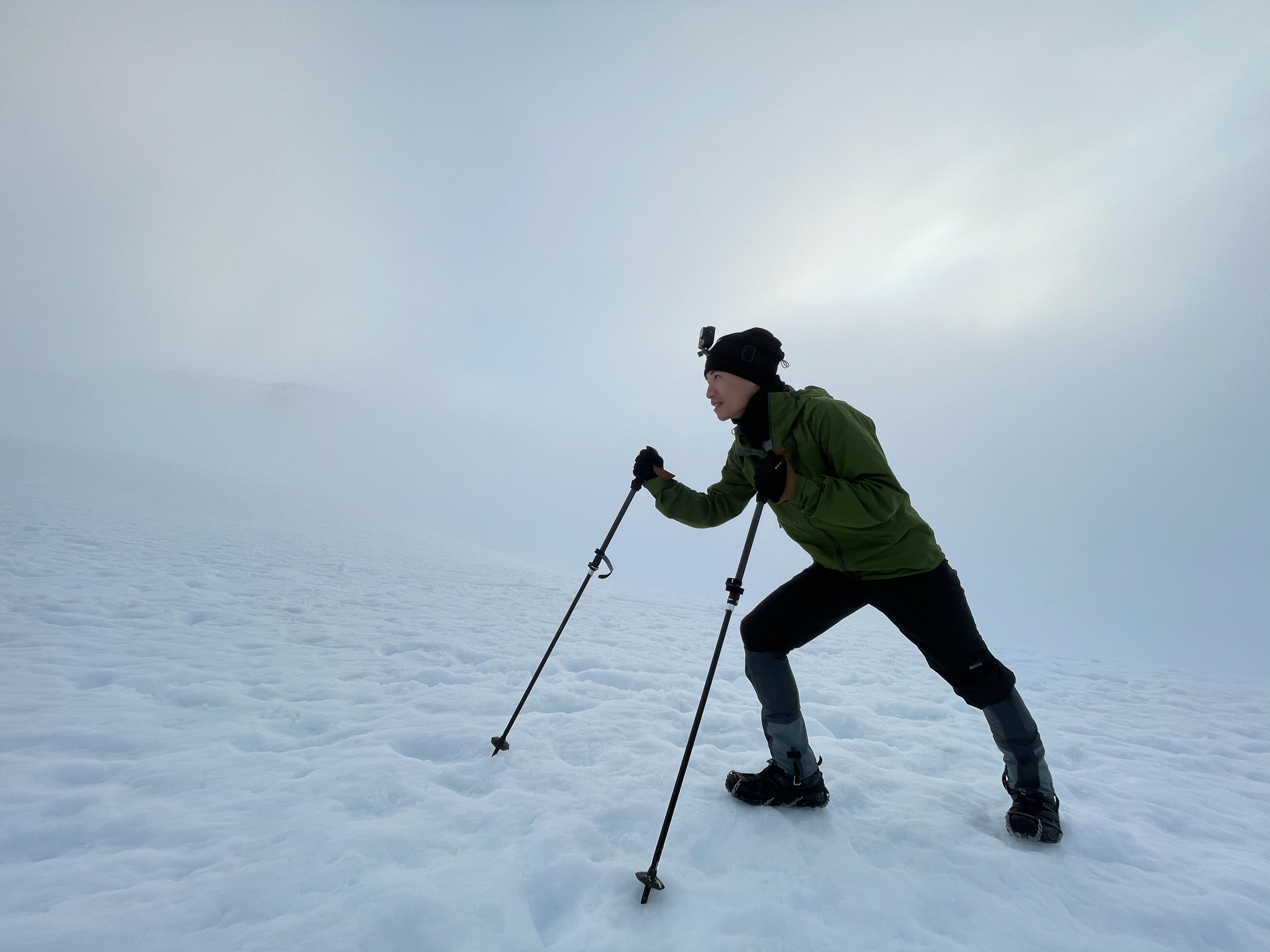


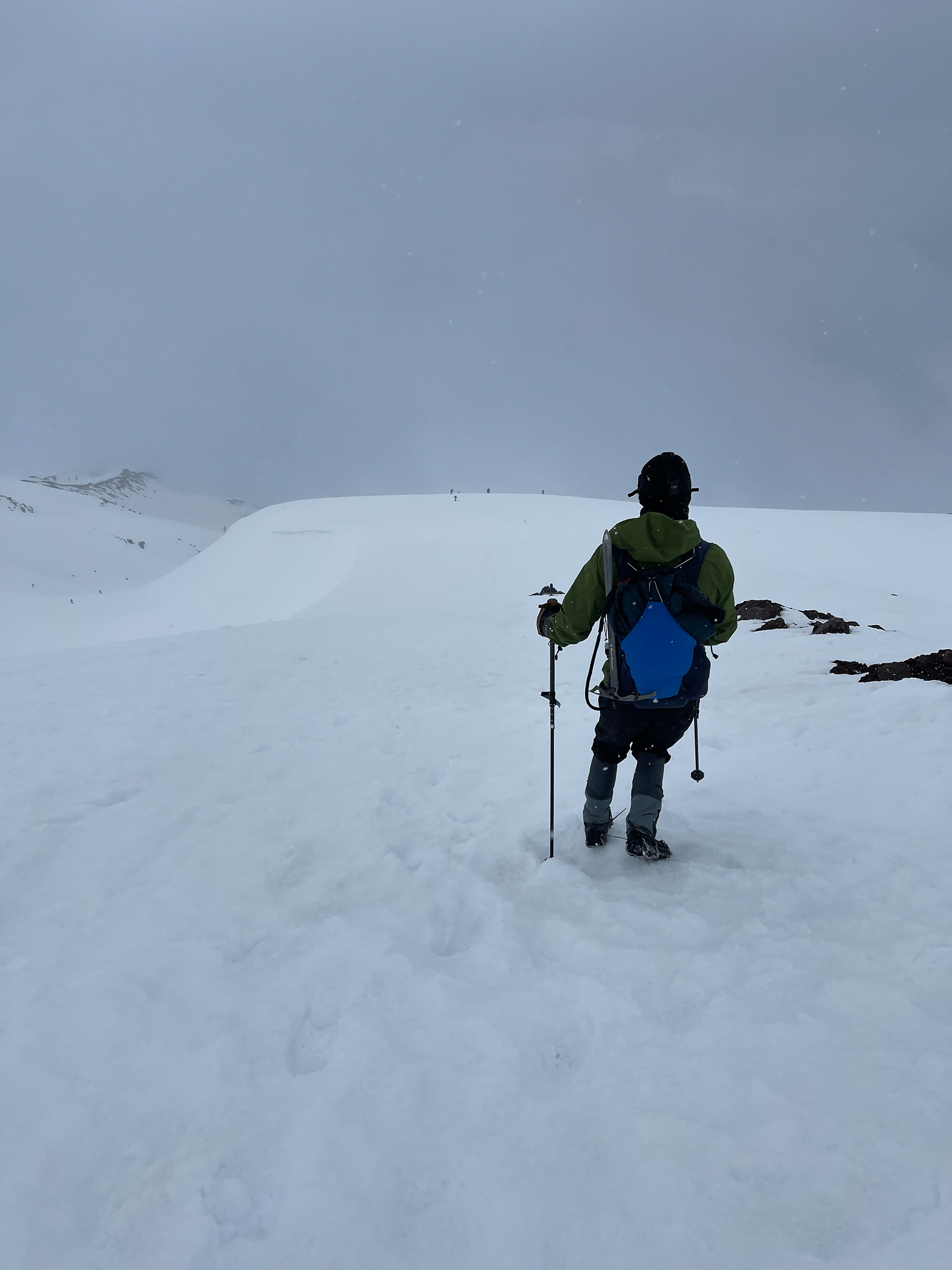

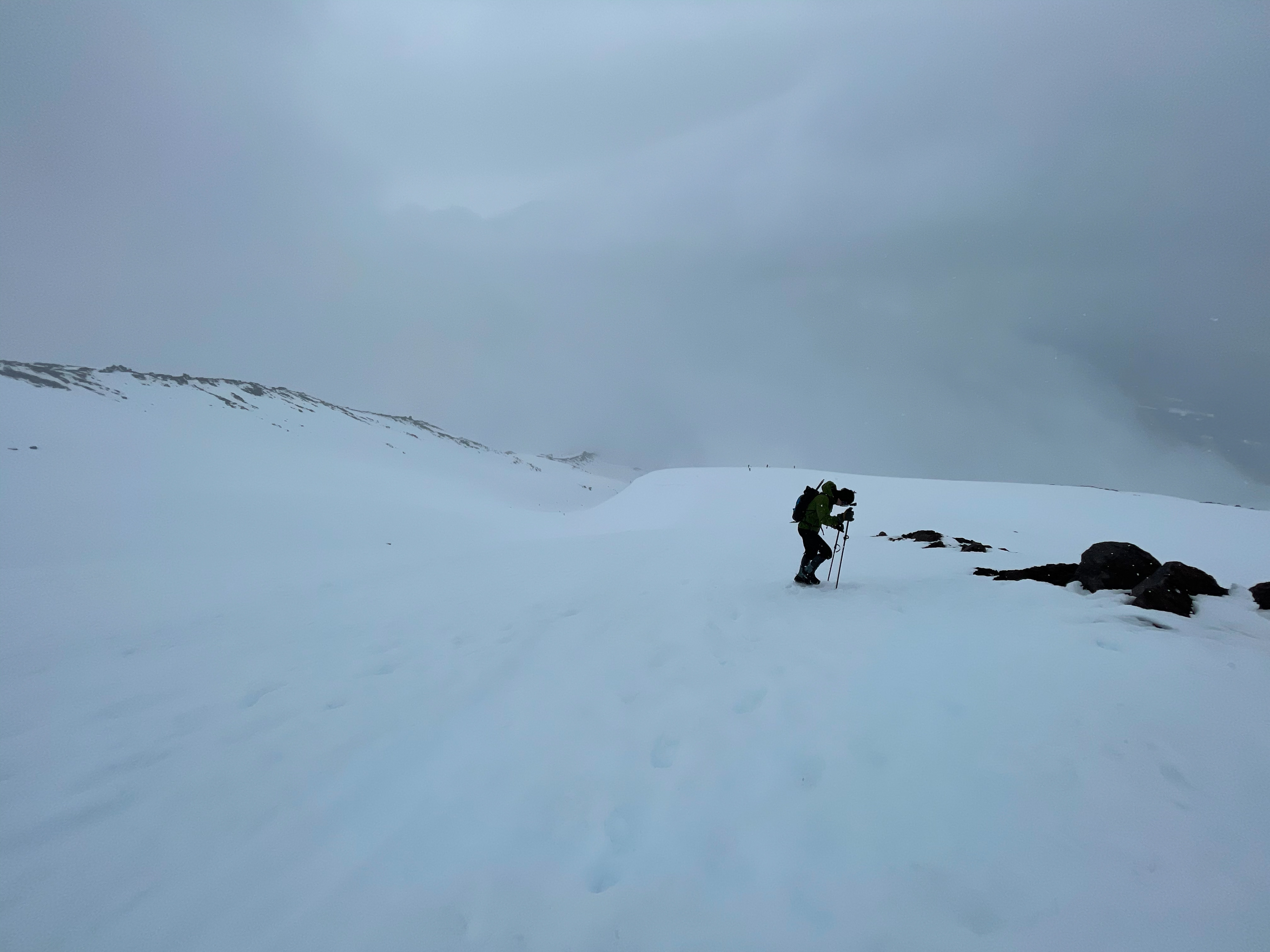

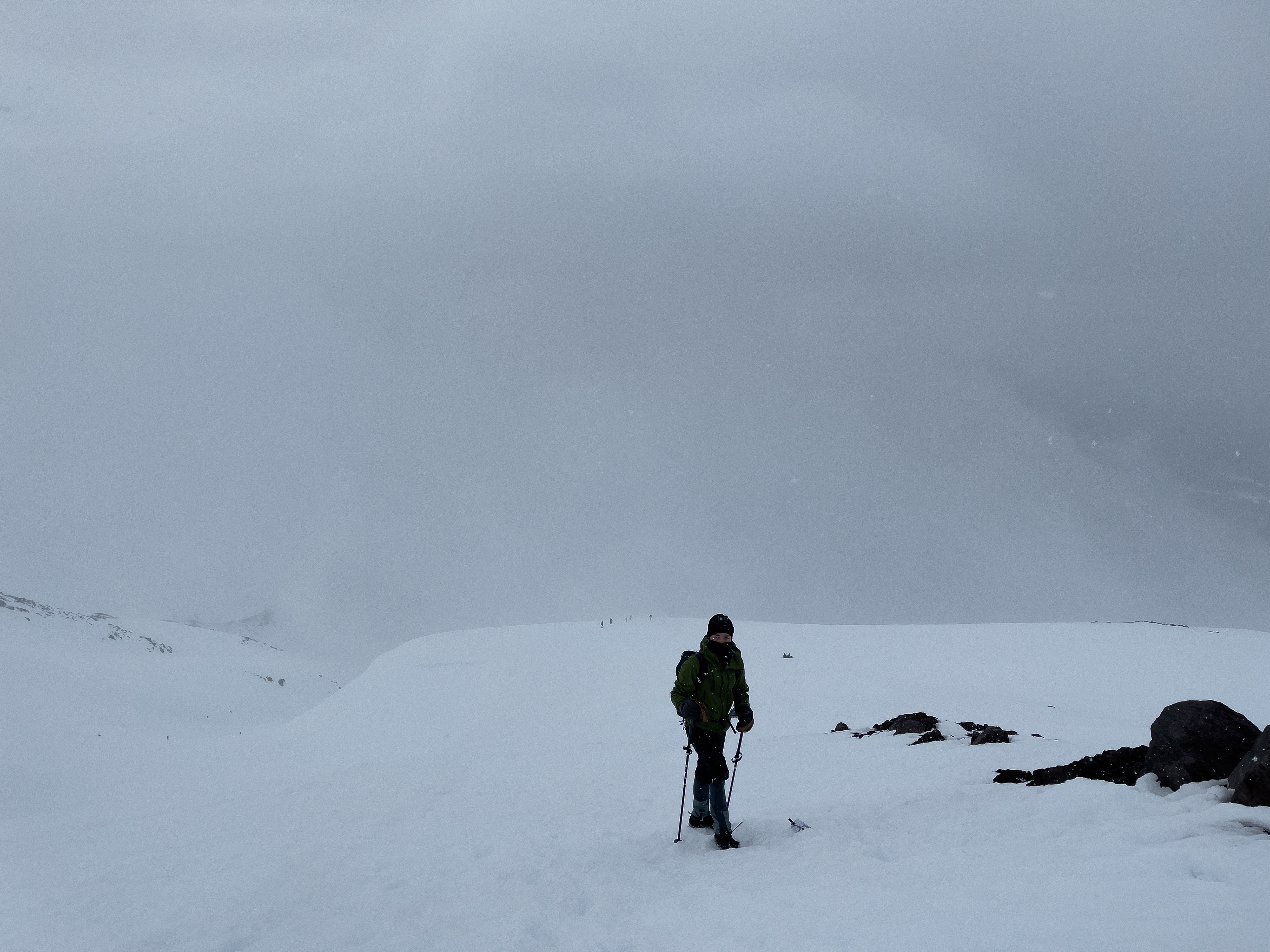
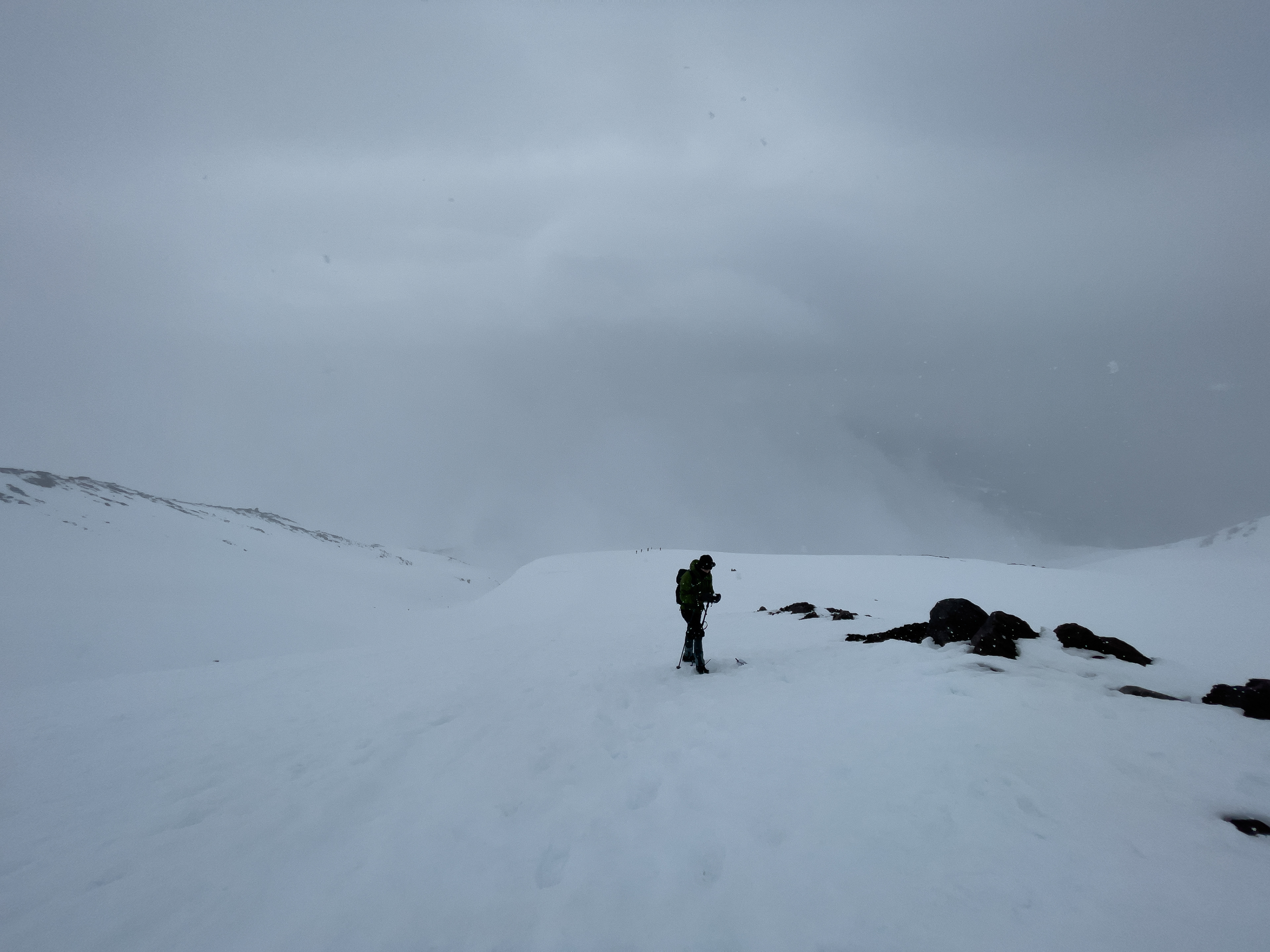
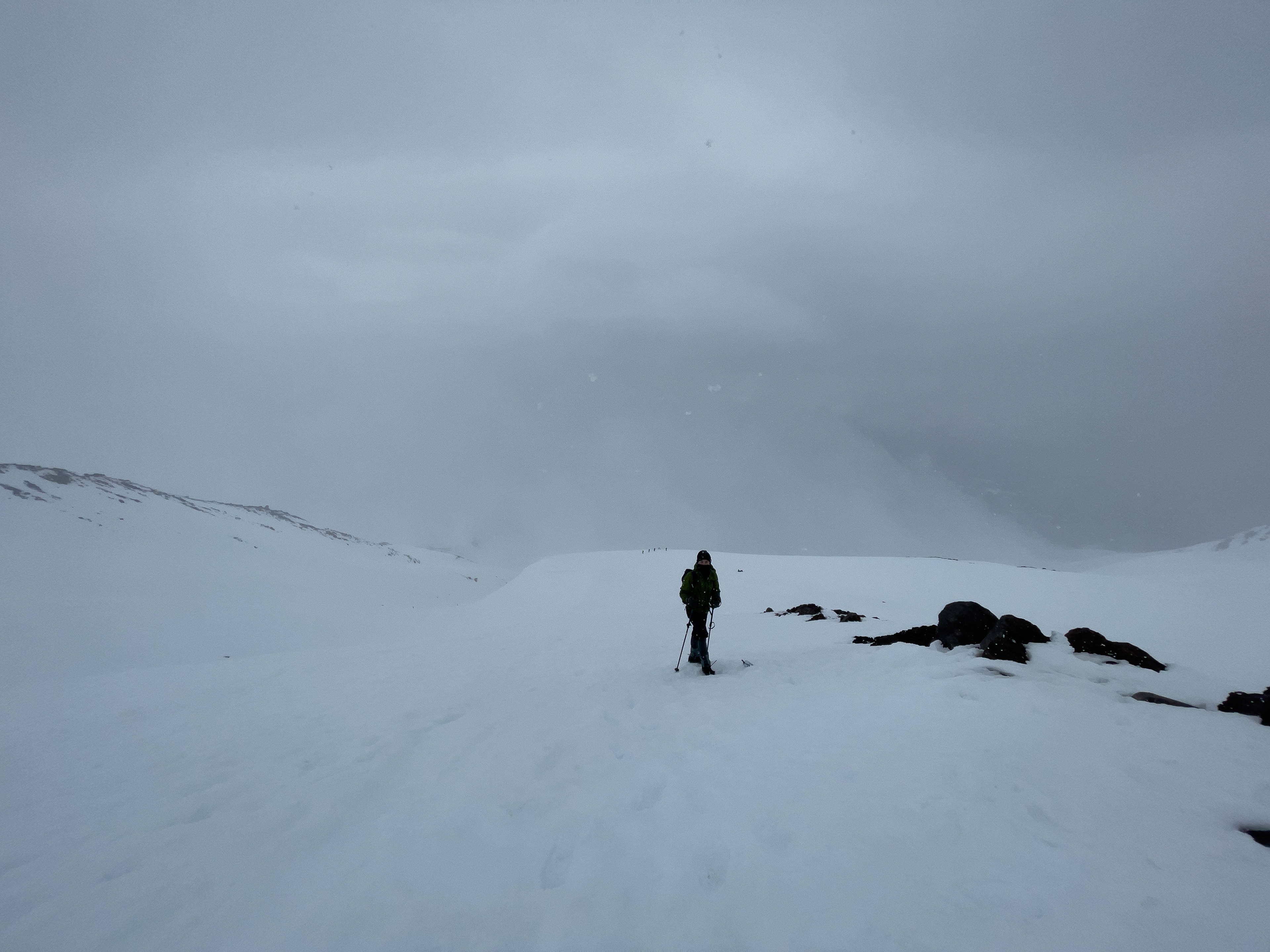


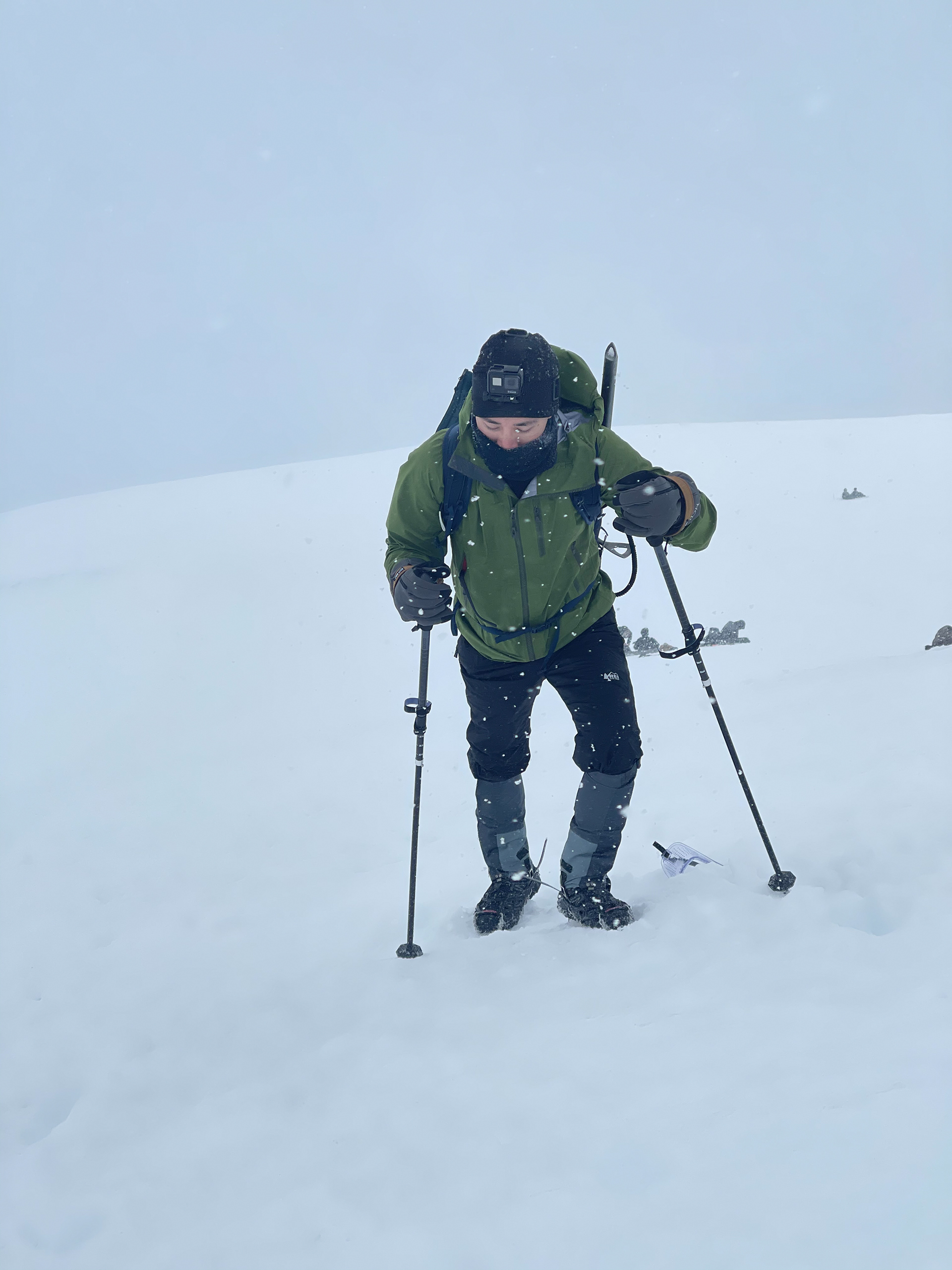
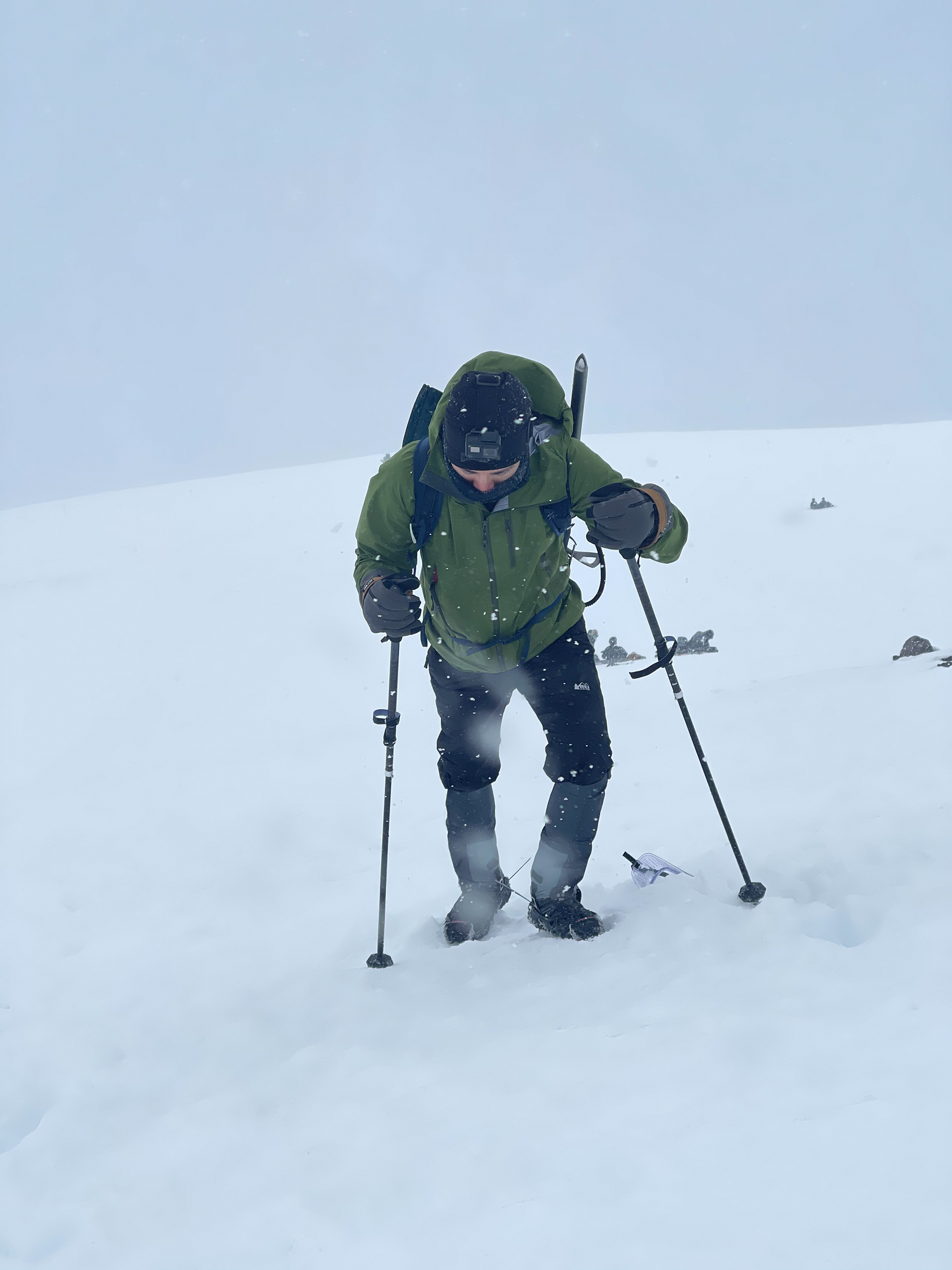
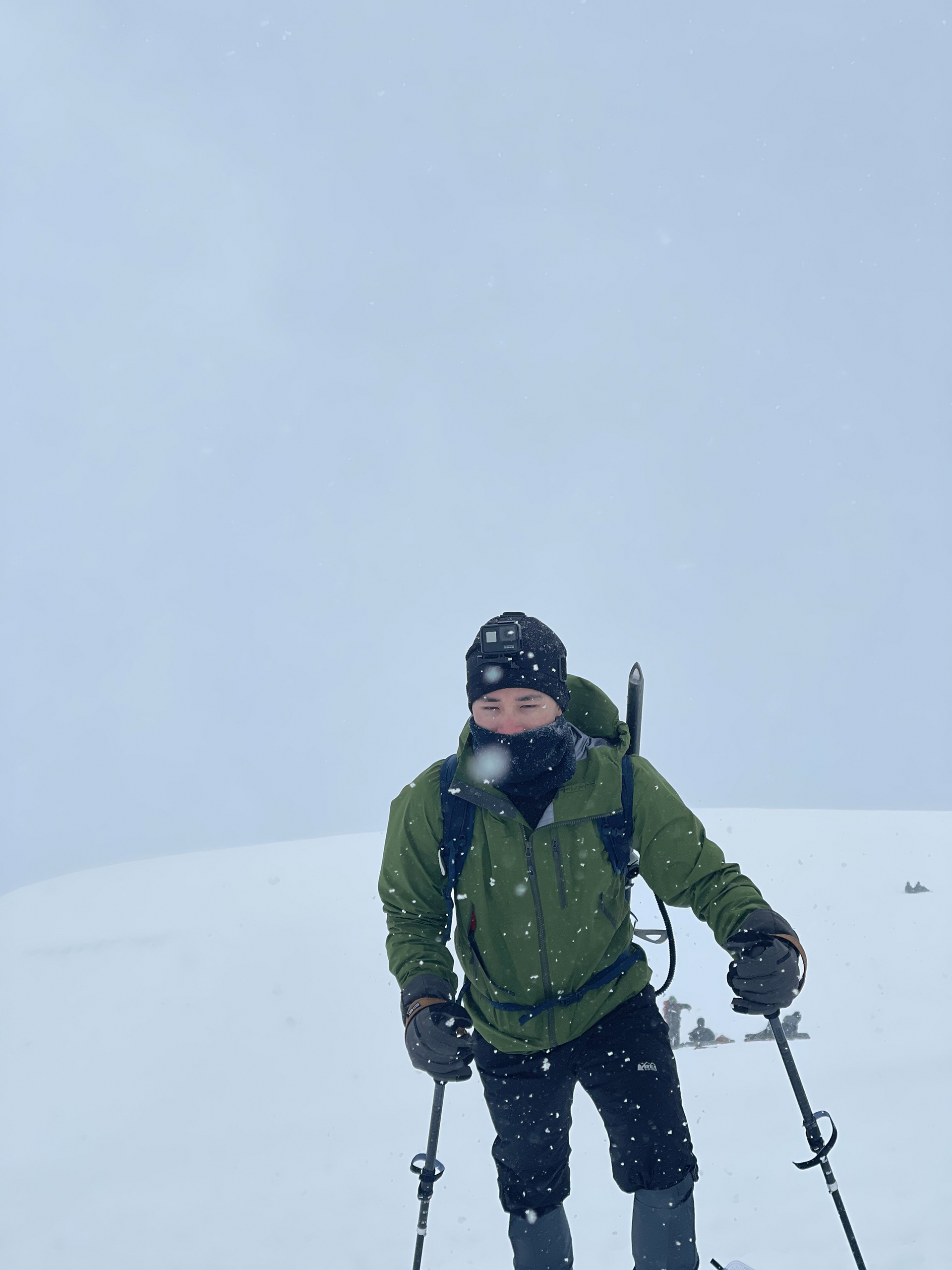



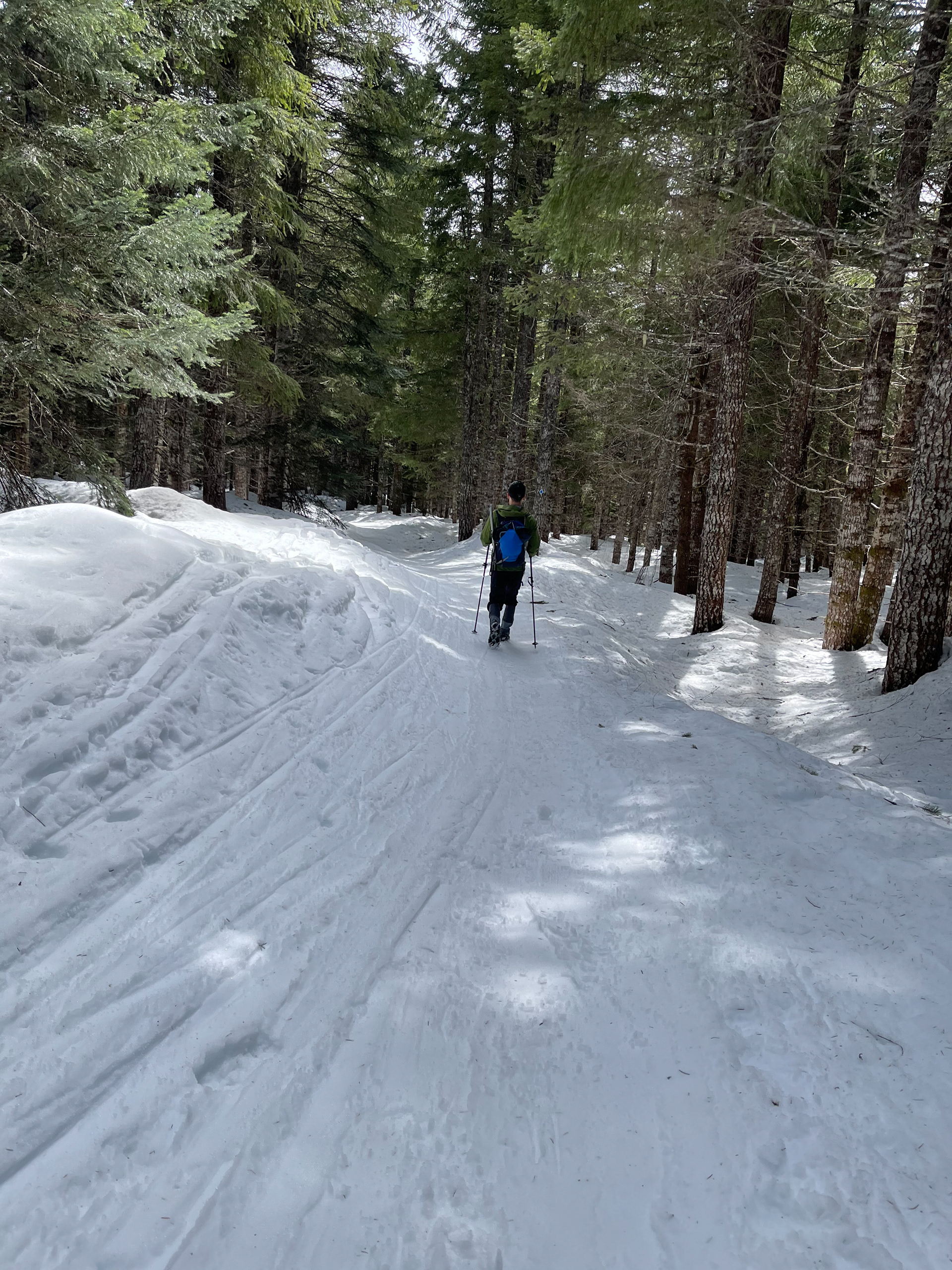
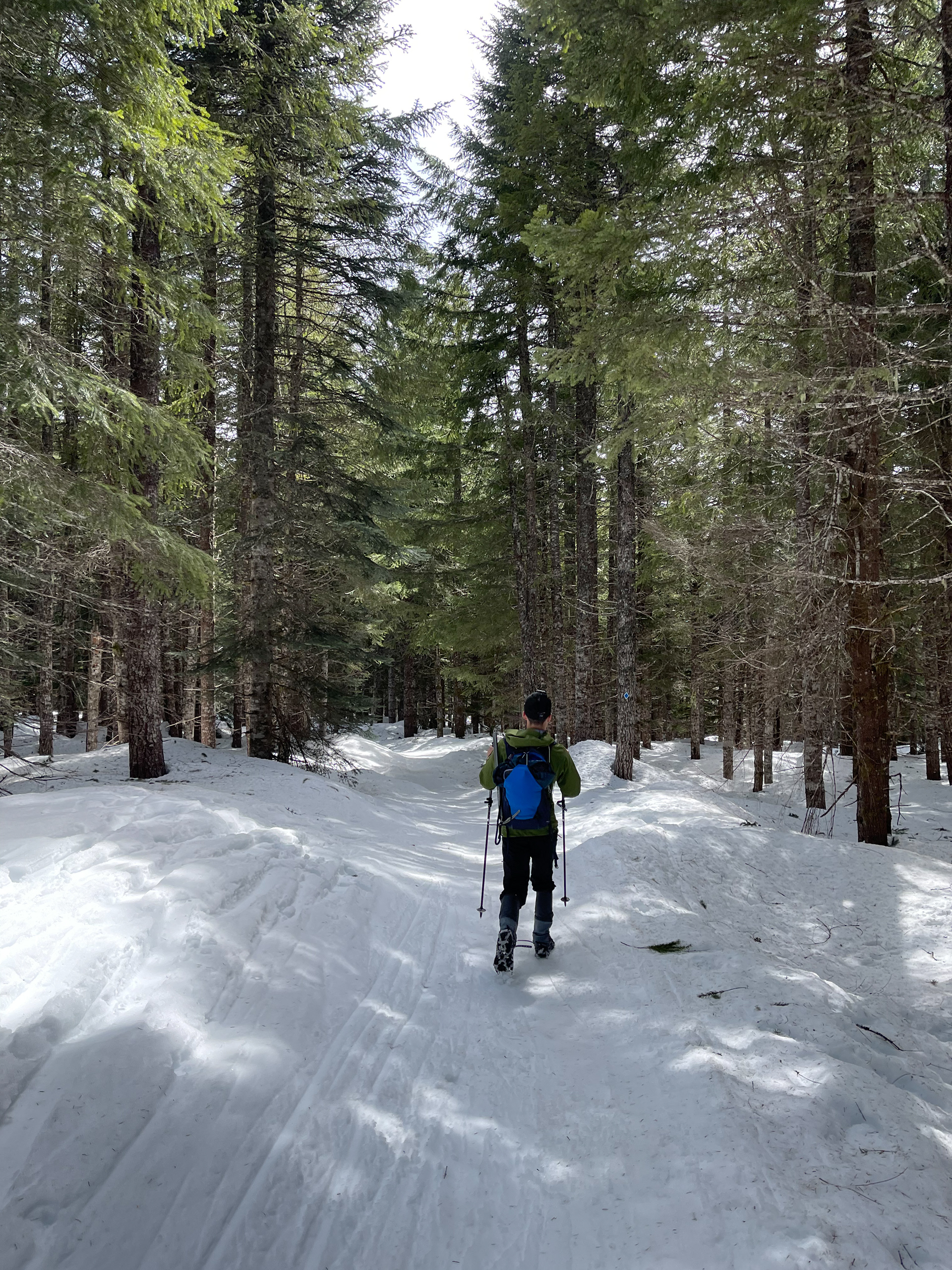
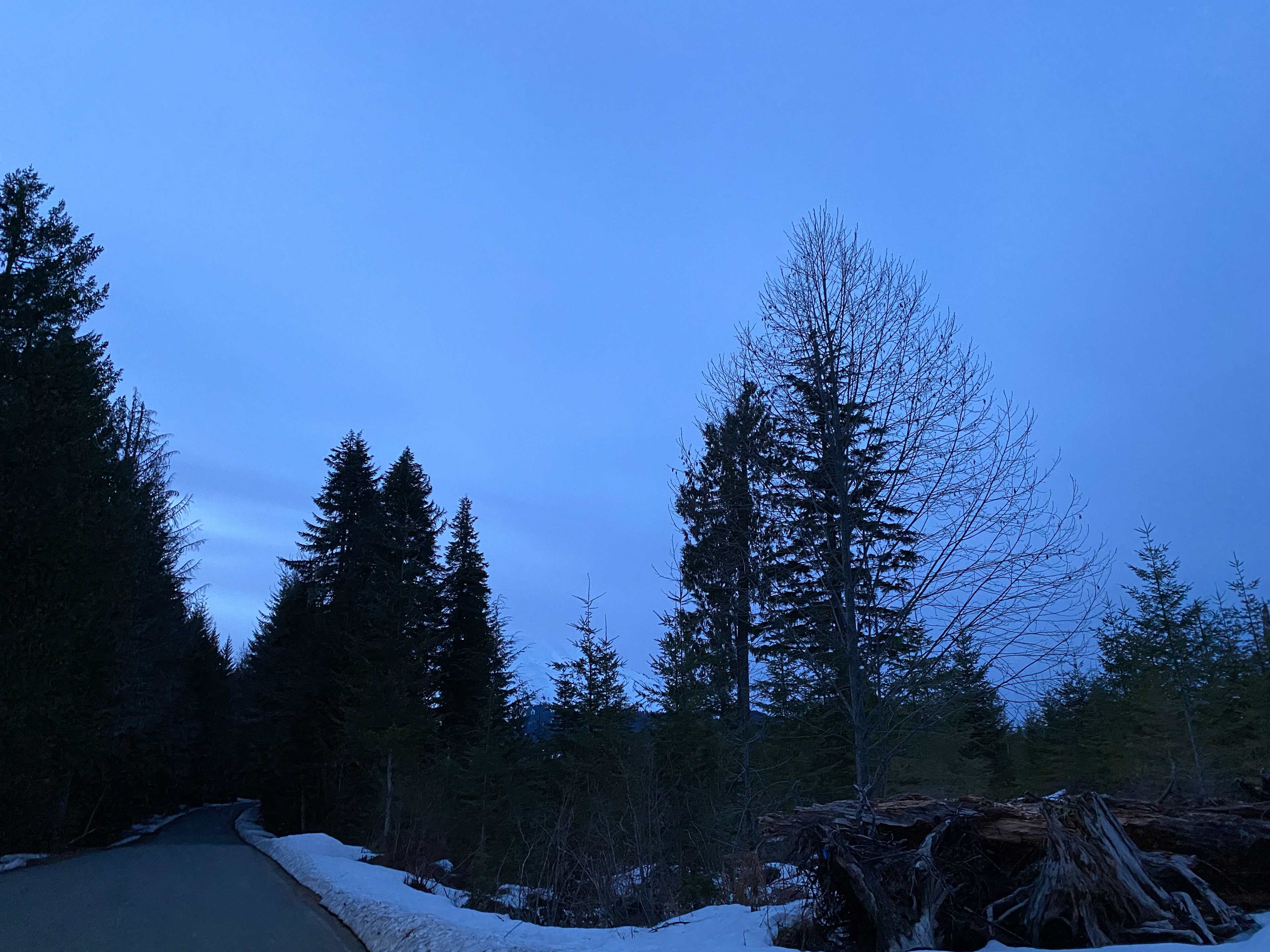
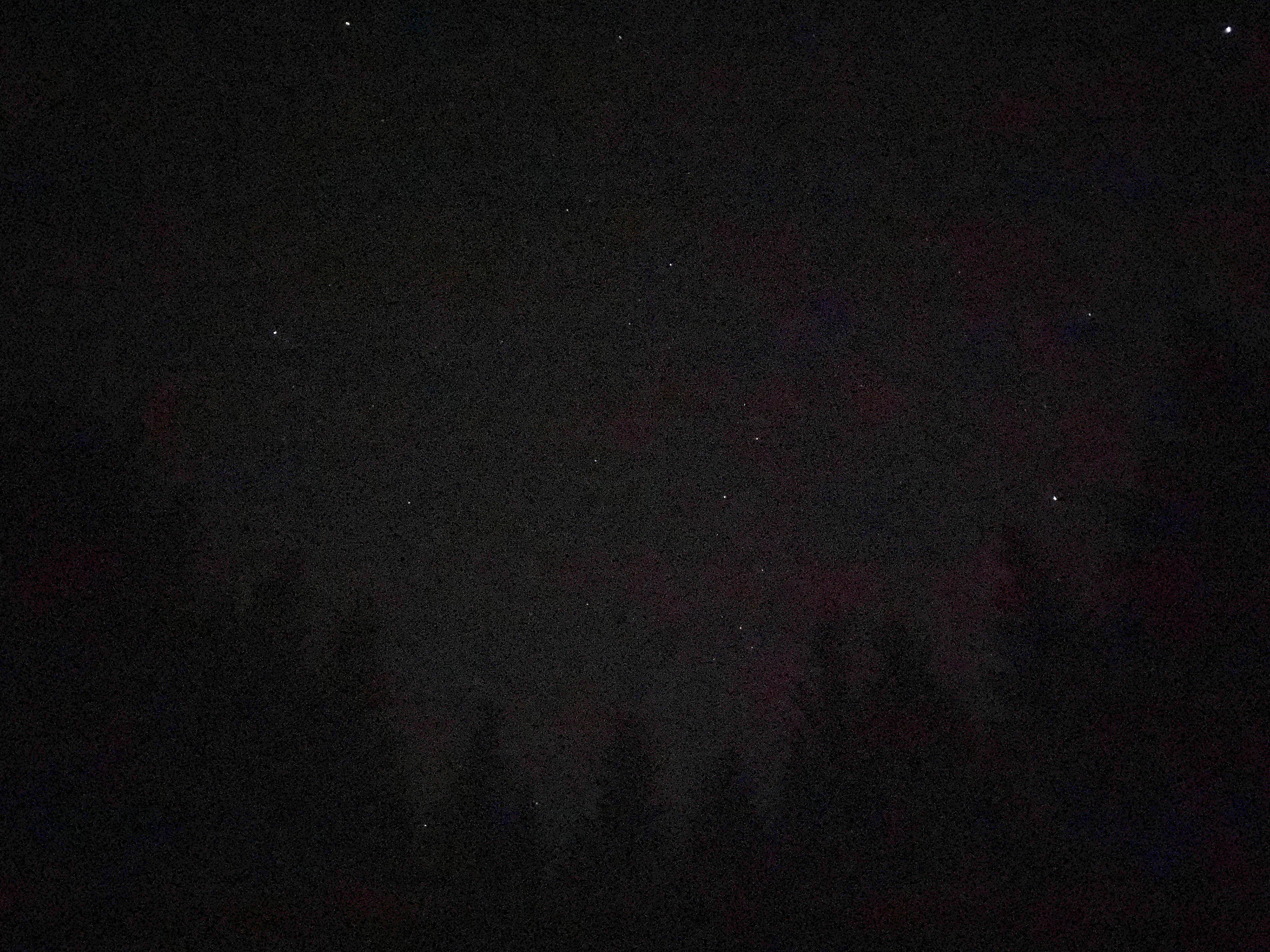


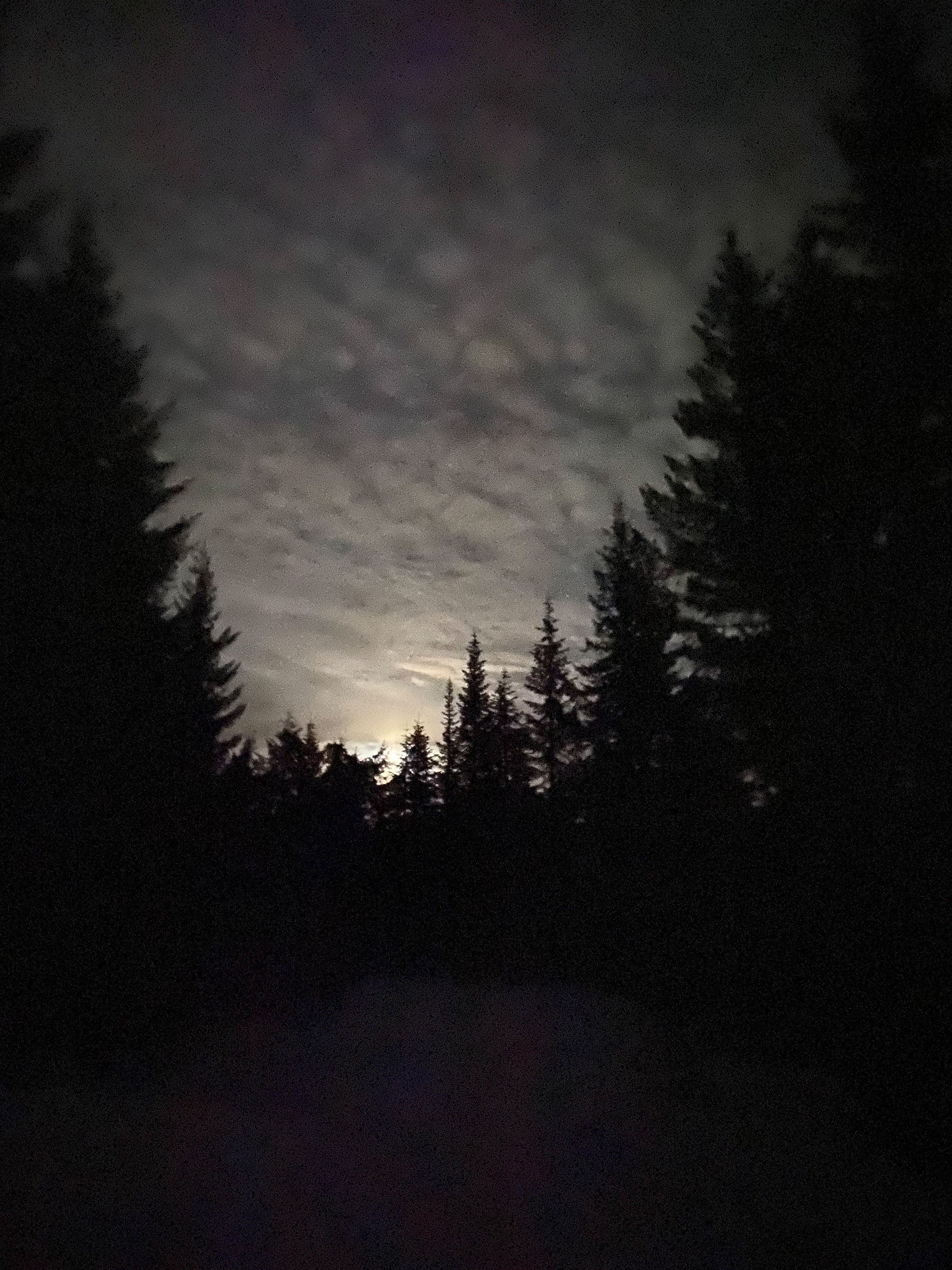
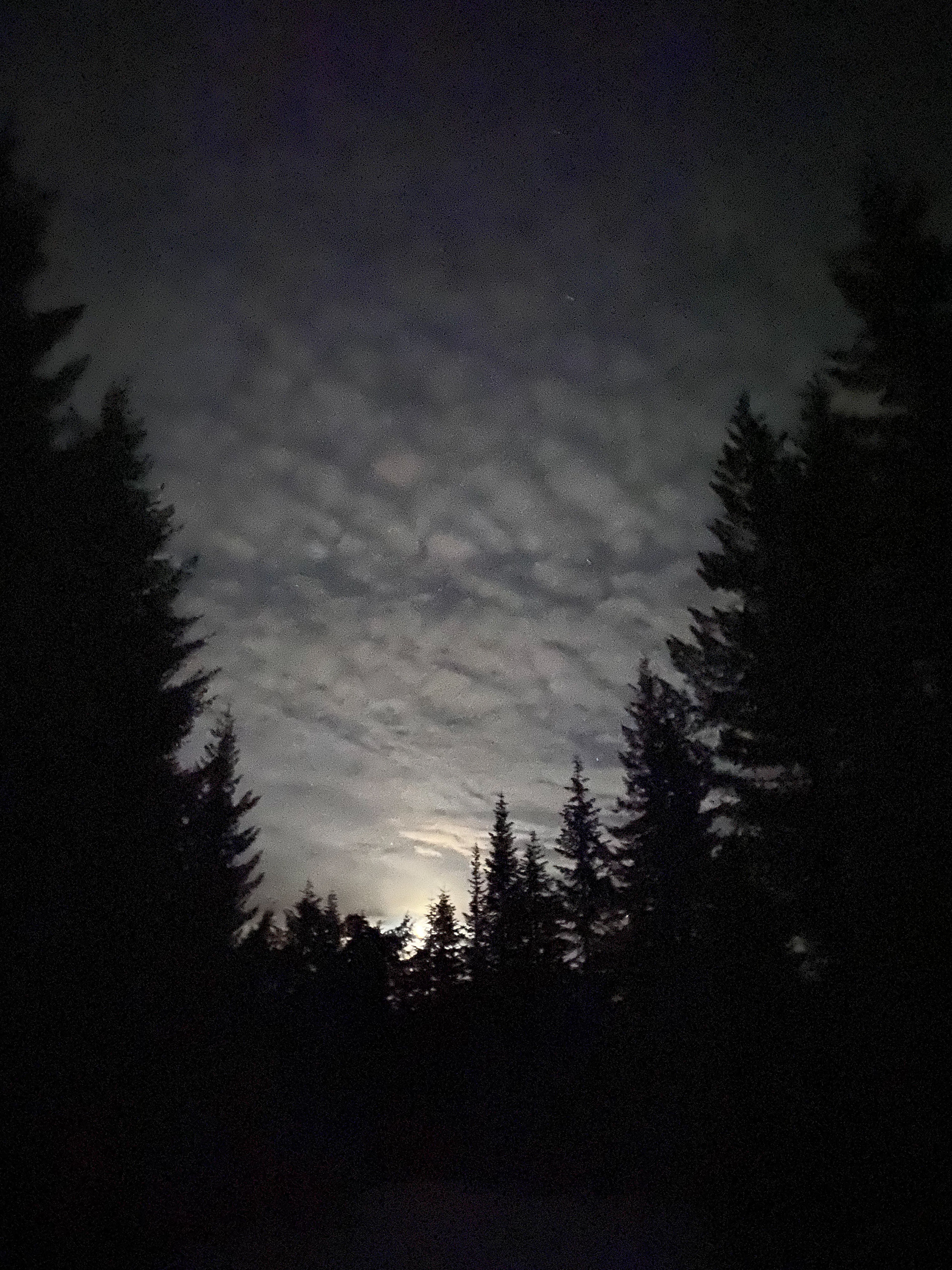
[4Feet]: Mount Saint Helens has become our go-to place when we were out of idea during the winter season. Up to this point, one-eighth of our hiking stories have involved this beautiful but tempered volcano in the Cascades. Today, we were ready for round two of summiting Mount St. Helens. Unlike our first summit attempt starting from the Climbers Bivouac trailhead, this time we footed on the Worm Flows climbing route, from Marble Mountain Snow-Park, which is the most direct route to the summit of Mount St. Helens during the winter season. To avoid the risk of fatigued driving in the early morning, staying at the trailhead the night before is usually our safety protocol, especially for summiting. We did not set up a tent this time as our SUV is spacious enough to serve the same purposes. Around 4 in the morning when everything remained asleep, we went on our expedition to this mountain peak. The mountain had heavily covered by feet of snow for months. We had to keep our microspikes underfoot at all times since the trailhead. Comparing with the summer route, the winter route was not curvy or zigzag by any means, yet it was almost a direct and straight path leading to the mountain. The tree line faded out after 2.5 miles, and that was where hikers started to encounter significant elevation. As passing by the sign, “permit required beyond this point”, the summer route can easily be spotted in the left 1/3 mile from the Worm Flows Trail. Our first ascent of Mt. St. Helens came with an experience of rocky terrain for 2 miles after the tree line. However, this time everything was buried underneath; with microspikes and trekking poles, we managed to make our ascent quicker than before. The sky was crystal clear before dawn. We could easily catch stars by the camera on the mobile phone. After the golden hour, the mountain weather unfortunately no longer favored our side. The wind and fog got stronger as we passed over 5,500’. The sky turned cloudy, and the lower level was filled with floating clouds. Though our visibility remained ok, the surrounding seems quite strange in which no object casts a shadow, and the horizon cannot be seen. Borders of the mountain, the sky, and the far vicinity merged into one. All of a sudden, the view simply became a two-dimension blank sheet of paper. We could still see each other out there, but we had a hard time measuring precise distance or slope with our naked eyes. As the thicker fog and snowfall emerged, the visibility reduced quickly. We were almost hiking in a whiteout for the last 1,000’ of elevation before the summit. We turned around as we barely reached the peak. We did not dare to stay on the higher level any longer because we had already gone too far beyond where we should stop. Dramatically, the blue sky broke off the thick cloud and fog while we were descending. When we reached back to the tree line, there was no longer any cloud on the top. Today if we could have started 2 hours late, we may be able to catch a clear sky on the top. Yet, the reflection from the snow might burn our faces easily on the way down. It took us about 11 hours to finish our summit attempt. With a total of 10 miles and 5,500’ elevation gain, the workout definitely stretched our leg muscles. We took 3 breaks throughout our summiting; twice in the ascent, and once in the descent. It may be our last chance to see this beauty in white. Soon after the summer hits, Mount Saint Helens may change her dress back to grey and black. 4/4/2021








































































































































